3 Reasons a 28mm Lens Is My Favourite Focal Length
If you’ve been into photography long enough, there’s no doubt that you have a preferred focal length. And the longer you’ve been into photography, the more likely it is that your favourite focal length has changed once or twice over the years.
My earliest experiences were with a zoom lens — an 18-55mm. I wondered how it could get much better than that. It was so versatile. Then I tried a prime lens — a 50mm f/1.8 and I was hooked not only fixed focal length lenses, but 50mm in particular.
As of now, my lens collection, while modest compared to some, covers a range of 14mm to 200mm. Some are used far more than others but they all have their utility. There’s one focal length , however, that I reach for more frequently than the rest: 28mm. Why?
Here are three reasons why 28mm is my favourite focal length.

It’s Wide But Not Too Wide
Of course some people will find 28mm too wide, I get that. It can be a little overwhelming at first, especially when you’re used to working with normal and telephoto lenses .
But I find that 28mm allows me (in most instances) to fit exactly what I want into a cityscape (or a landscape).
You’ll get plenty of useful tips from across the web about how to best use a 28mm lens, but at the risk of sounding like something a parent would say to their teenager before attending a party, the single best piece of advice for working with a 28mm lens is, “make good decisions.”
There’s a lot going on in your field of view, so before you press the shutter, take a critical look at your frame. A scene can end up feeling somewhat empty, as it’s easy for the point of interest to get swallowed up in the frame.
Make sure you’ve got a strong composition, make sure everything fits and make sure everything in your frame matters.
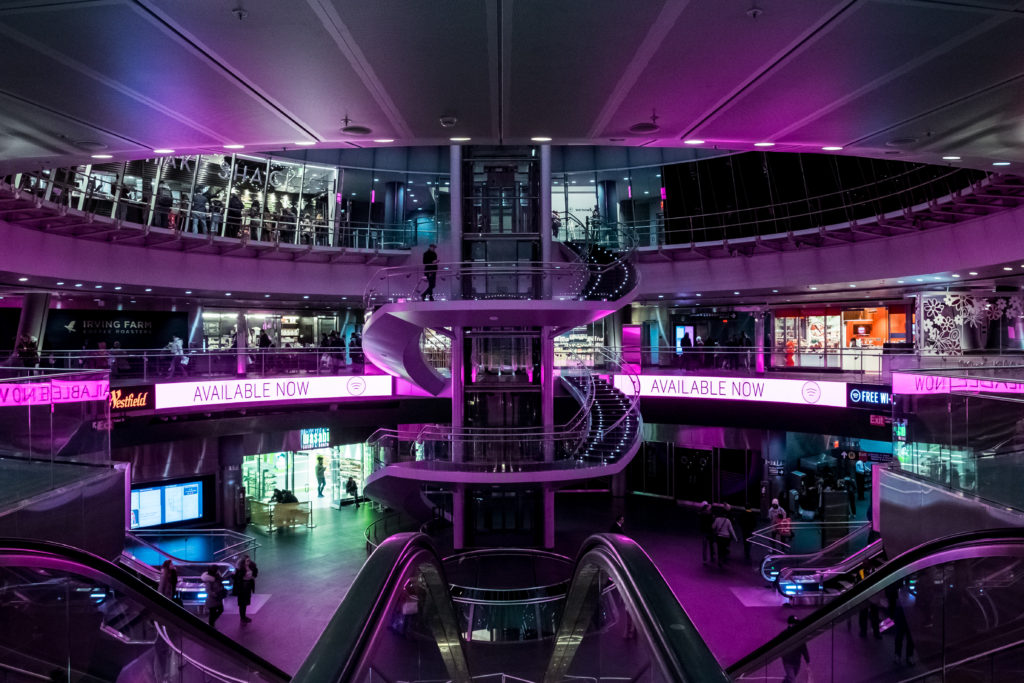
It’s Intimate
Or intimidating.
One of the reasons some people are put off by the idea of using a 28mm lens (or its equivalent) for street photography is that it forces you to get close to your subject. But for others, myself included, this is one of the fun things about the 28mm focal length.
While I’ve always made a point to avoid being intrusive , I’m perfectly comfortable getting close to people with my camera. Of course, how close depends on the circumstances and what I’m attempting to capture, but whether I’m close enough for noticeable eye contact or I keep enough distance to incorporate a bit of environment, 28mm is my lens of choice to take out on the street.
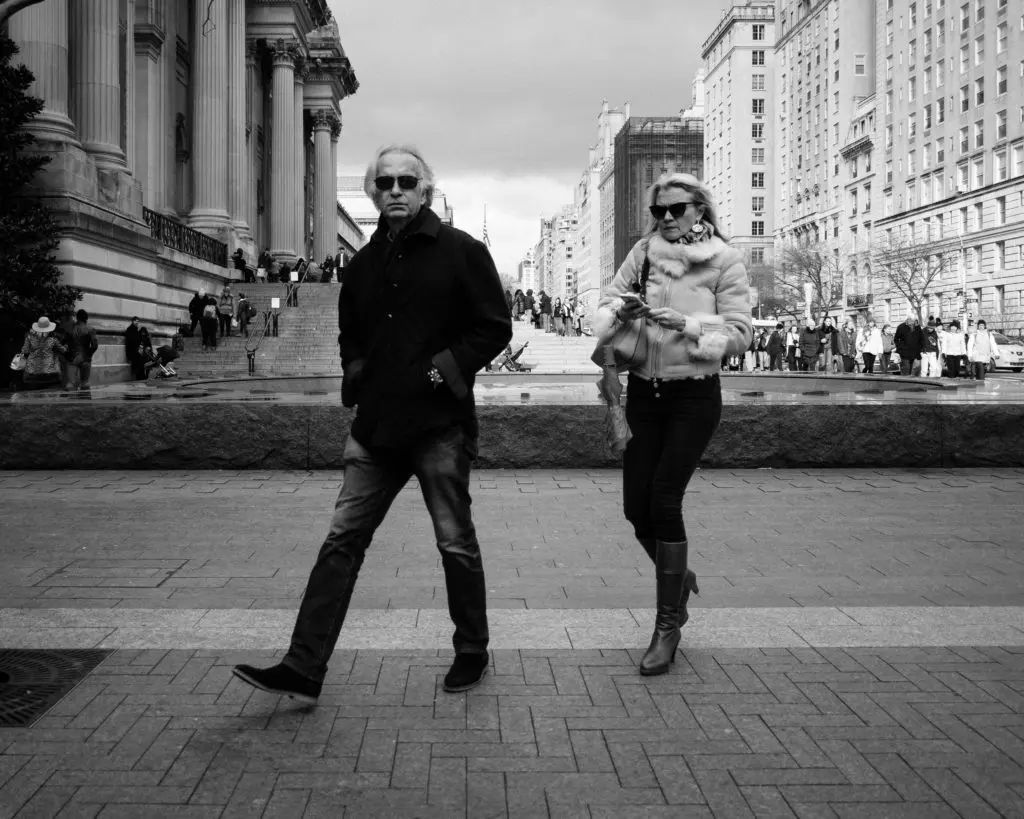
It’s Easy To Focus
One other reason that a 28mm lens works so well for street photography is that it’s easy to focus. This isn’t a focal length that provides much in the way of background blur , so shooting it wide open isn’t advantageous in most scenarios.
I can simply set my aperture to f/8 and shoot away, knowing that everything will be in focus. Usually. If you’re using a manual focus lens, you’ll want to set your distance to around 6 feet, more or less depending on your comfort level.
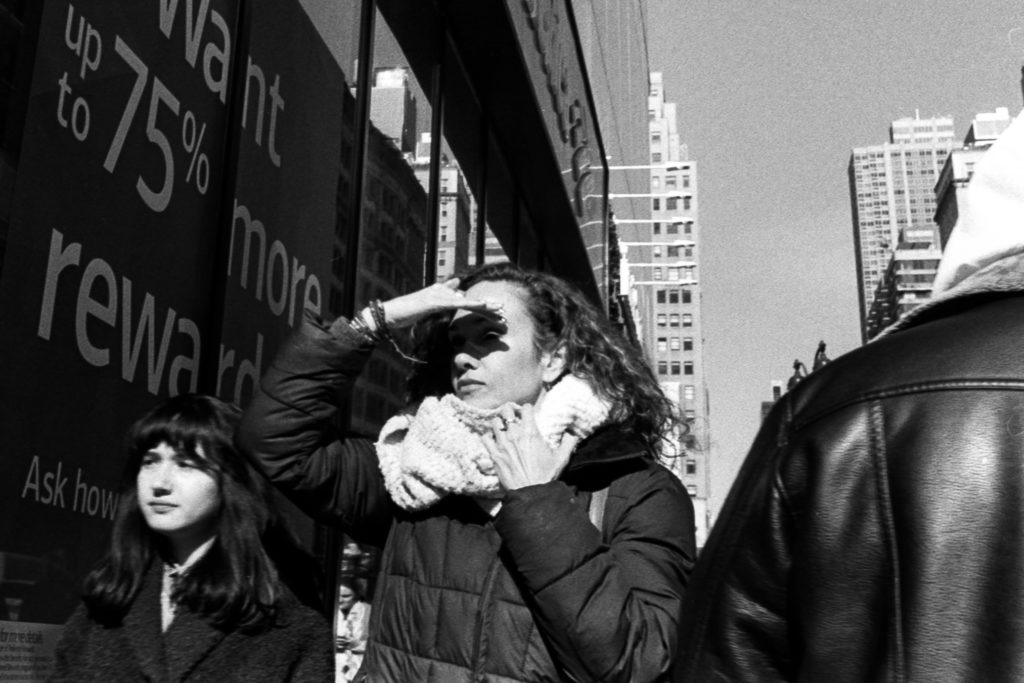
Final Thoughts
Many will sing the praises of other focal lengths for all of the same reasons I have lauded the 28mm focal length. The goal isn’t to argue for the superiority of one focal length over another, but to bring attention to options that some may have never considered.
If you’re looking to inject some new life into your photography, a 28mm lens just might open up creative possibilities for you that you can’t get with longer focal lengths. Give it a try and be sure to have fun with it!
Further Reading on Focal Length
- 7 Reasons Why Prime Lenses are Better Than Zoom Lenses to Improve Your Photography
- What Makes One Lens Better Than Another?
- Which Camera Lens Should You Choose? Here Is An Overview To Get You Started
About Author
Jason Little is a photographer, author and stock shooter . You can see Jason’s photography on his Website or his Instagram feed.
Enjoyed your brief article. What do you mean by the phrase “You’ll want to set your distance to around 6 feet…”. 6 feet from what? Seems this would depend entirely on the subject matter.
Allen, most manual focus prime lenses have a distance scale on the focusing ring going from ∞ to the lens’ closest focus, which allows one to easily set the focus to a precise distance. So in other words, 6 feet away from your camera.
Saw your website. Your photography skills are impressive. Clean, and focused. But… You gotta get away from NYC. All of those photos you took have been taken for decades. I don’t feel any story in them. I am not getting a strong emotional connection, getting more Travel magazine. Maybe because I live in NYC I have a biased opinion, but I also don’t get a sense of who you are or what you are telling me. I guess I am just sick of the city. Haha. Anywho your photography skills is great and thank you for sharing about 28mm. I want to get one for Canon but wish it was at a store in Manhattan that wasn’t B&H.
I liked your article. It is quite insightful and provides solid reasons for preferring lens of 28 mm or similar focal length. But I am not clear whether your recommendation for 28mm lens is for full frame cameras or crop sensor cameras? Would you clarify this??? This will make your write-up more insightful, especially for the new or amateur photographers.
Leave a Reply Cancel
Your email address will not be published. Required fields are marked *
Table of Contents

Latest Posts
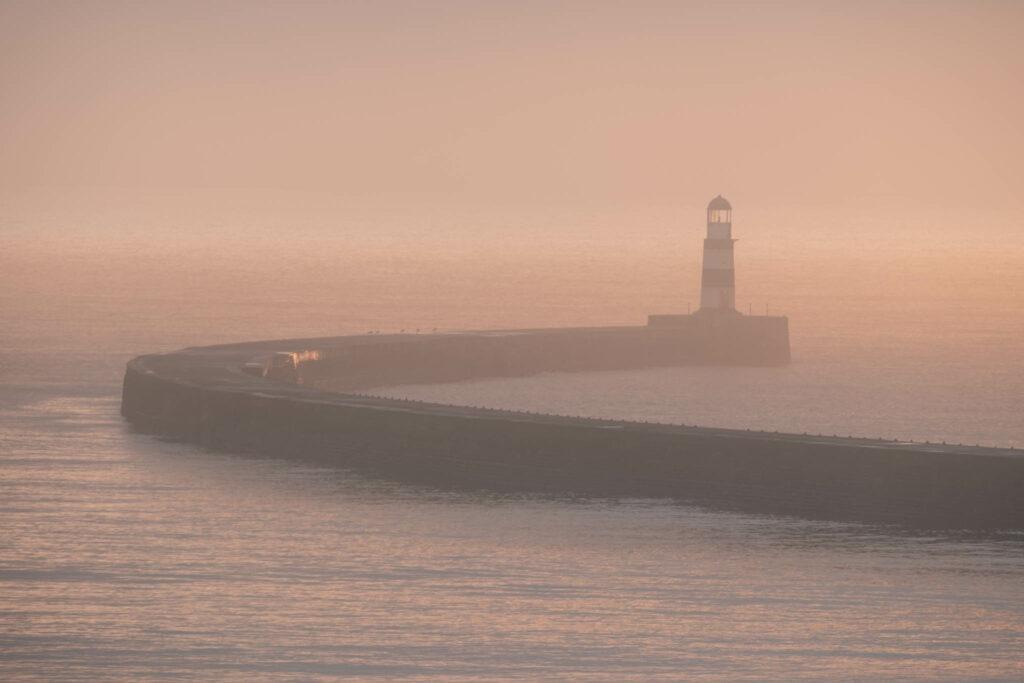
Why I Love Shooting with 100-400mm Lenses

Best Place To Buy A Used Camera Or Lens
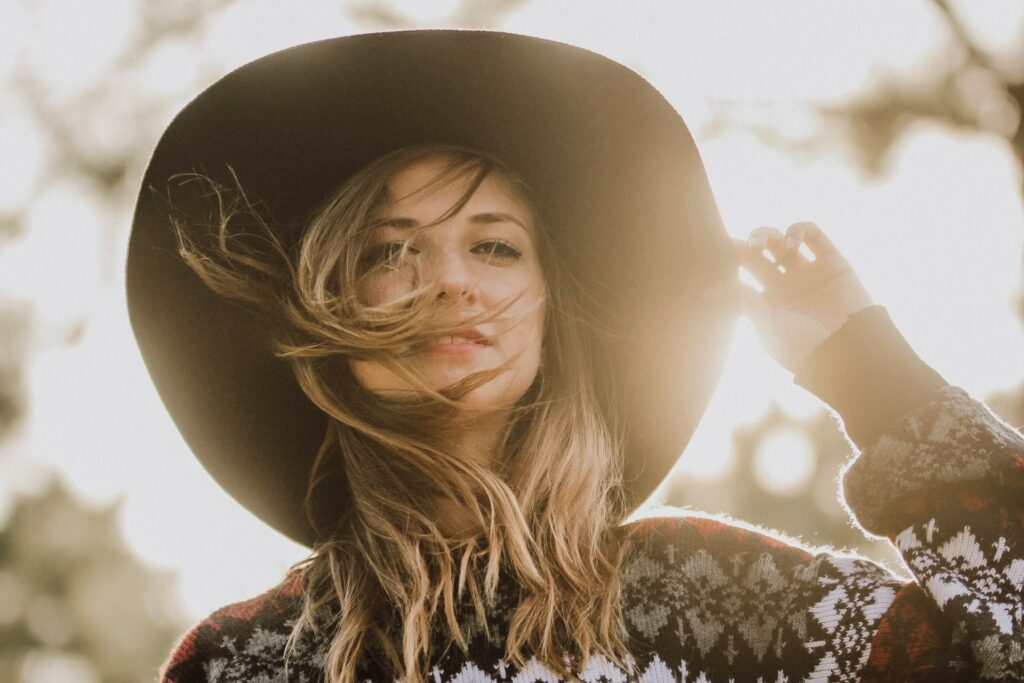
The Best Lens For Portraits In 2023
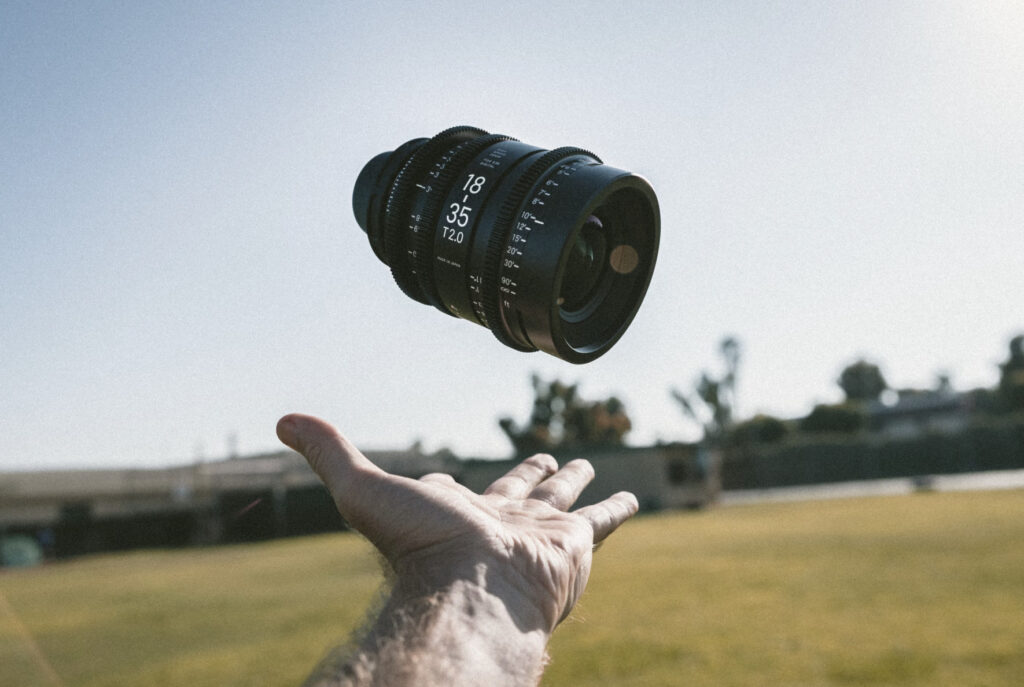
What Is The Best Lens For Street Photography?
10 insightful tips to the 28mm focal length
So, you just got a camera that has it’s lens stuck at the 28mm focal length. Maybe you want to do street photography. You’re freaking out. The world is HUGE! How are you going to make images with such a wide field of view??? Stop. Don’t panic, breathe. It’s going to be ok. Here’s the beginner’s guide to the 28mm focal length to get you started. Also check out this article for more tips .
Busy? Get this article as a free ebook, put your email below:
3) You have to get close
10) use the force light, luke, the 28mm focal length: an introduction.
A 28mm lens is considered a wide angle lens. It basically means that you can cram more into your image than a longer lens like 50mm.
Say this was a 50mm shot:

I was able to get the bike, a bit of a truck on the left and a part car on the right, right? Here’s a 28mm shot:

Now we can cram more of the world in the frame, no? I can fit the car, the truck, even the surrounding buildings into my frame. Knowing that, what’s the big issue with the 28mm?
The 28mm causes problems to many people for a variety of reasons:
1) It’s harder to balance
If you can imagine yourself for a moment juggling 3 balls. Heh. You’re not bad at all. Now imagine doing so with 9 balls. Harder isn’t it? Well the 28mm is like that, since you can cram more of the world in it, you have to take more things into consideration when framing.
Say I have a telephoto in hand, how hard is this to balance:

Meh. I only have the guy in the back to worry about. Now imagine that I have a 28mm:

Now there’s much, much more I have to worry about. The guy in the back, the person in the back, the guy on the right, cars, lines, glip! It’s a major turn off for many.
2) No Bokeh superpowers
Bokeh is the out of focus area. It’s the easy way to make your subject pop and it’s pretty much a surefire way to bring attention to your subject. There would be no problem for images like this:

The woman is crisp, the background isn’t, so she pops. But you can’t get that with most 28mm. You’re stuck with this:

Well, not quite. The 28mm can Bokeh, just not as much as most people want it to. You can’t completely pull out your subject from their background with Bokeh on a 28mm (for most cameras). Here’s a 28mm shot at 2.5 on an APSC sensor:

While the background is out of focus, everything is still pretty much defined. All that to mean, you will have to find other ways to bring attention to your subject besides blurring out the background. It’s another matter when you have a 28mm 1.4 or 1.8 on a Full Frame sensor, the Bokeh is way better, see Christophe Debon’s work in issue 2 , but it won’t be as creamy as a 50mm 1.4 for example. Most have an apsc sensor camera with a 28mm 2.8 or 2.5, so the Bokeh isn’t that great. Macro is another matter though…
In the 28mm field of view, you can cram more of the world into the image because things appear smaller with a 28mm. So if you have an image of a woman taken with a 50mm, she might appear as big as a thumb, but if you didn’t move and made the same image with a 28mm, she might now be the size of half a thumb. All of this to say, if you want something to be prominent in your 28mm frame, you have to get close. Closer than you would if you had a longer lens.

I got real close to get the shot above. But if I had a 50mm, I would have needed to be as close and I would get a similar image. In a nutshell, you will probably have to get real close to your subjects with a 28mm.
The big issues with the 28mm are: it’s hard(er) to balance, you can’t blur your way out of situations and it forces you to get closer. But, it’s totally awesome.
Using a 28mm
Here I try to address the big problems of 28mms….Consider these counter points to the above.
Longer focal lengths really limit your field of view in my opinion. Imagine a completely black room, your only contact with the world is trough a small window and a large one. Of course, the large one is the 28mm. I don’t know about you, but I want as much of the world that I can get. When you use a 28mm, it’s as much about the subject that you are shooting, as it is their background, their surrounding, their context.
The fact that you can’t really Bokeh your way out of any situation is actually a good thing. I remember being able to ride a bike with training wheels without any issues….until my parents pulled out those training wheels. I was able to ride a bike only when I couldn’t rely on those helpers. Removing the possibility of Bokeh actually forces you to be ever more aware of what’s in front of your camera. You need to bring attention to your subjects, you can’t blur it’s background, you will work the frame to find a way to do so without Bokeh.
All of a sudden, because of necessity, you are aware of the background, how it can either bring attention or pull attention from your subject. The lack of Bokeh, instead of being limiting, is actually freeing because you are forced out of your comfort zone to try new things.
The 28mm also forces you out of your comfort zone when it comes to portraits and people . You can’t get away by staying far from your subject, you have to get physically closer to get your shot. Now granted, getting close is not the end all of all photography, but if something forces you out of your comfort zone, it can only be beneficial. Here’s some tips on how to stop fearing when shooting street photography . I used to be so shy and timid, I couldn’t even look at my own brother in the eye. You can do it!
28mm lens tips
1) actively seek out the punctum.
When there’s lots of action that you have to include in the frame….it becomes ever so much more important to seek out the punctum .

I like trees, some of them more than others. So here I was going to the pediatrician when I saw a palm tree. The only thing I wanted from the shot was the single palm tree. But the 28mm being wide, I couldn’t just include that one tree, there was other things that was in the frame, like other trees. I then sought out to bring attention to it by placing myself where the shadow of a tree on the back aligned itself with the tree I wanted to bring attention to.
2) See in terms of broad shapes
If you’ve been around the internet long enough, you probably remember dial-up. The internet was slow around that time, do images didn’t load right away, the first thing it would load was a blurry version of the image where you could see stuff like the overall shape of people. You weren’t able to make out who they were, but you could figre out what they were doing. And then after a while the image would load completely and the complete image was available to you: recognizable faces, etc.
When there’s too many elements in a frame, the brain goes in simplify mode and starts seing things in broad shapes in order not to be overloaded with every single detail. So when shooting wide, the brain is less and less critical of the details and starts looking at the overall shapes.
3) Lead the eye
One of the most important concepts of photography is the one of eye travel. Essentially, the photographer has to lead the eye of the viewer. Since there’s more of the world included, and you can’t really Bokeh, you have to really be aware of all the broad elements of the frame to lead the viewer’s eyes. See this image here:

Here the Law of similarity and the Law of Continuity are in action (as explained in the Inspired Eye Method course ). I wanted to bring attention to the men on the right. That’s as close as I could get – I was in a car – and I couldn’t just blur the background out. So I looked around to see how I could lead the eye and behold! Bunch of walking shadows appeared, and I made my shot.
Bokeh is the simplest way to lead the eye because it creates contrast between a subject and it’s background. But when you can’t really have Bokeh, you have to always be on the lookout for things to lead the eye to your subject.
4) Get closer

If you want to get a portrait of someone, you can be at a comfortable distance and have a nice shot with a 50mm. But with a 28mm, that person will be smaller in the frame, and they might get lost along with the rest of the background if you are too far away. In the image above, it’s clear who my subject is, he’s too big compared to the rest of the frame for there to be any confusion. So if you want better portraits out of a 28mm, it’s time to get close!
5) Think scenery

But at the same time, getting close is not the end all of all 28mm endeavors. The 28mm renders scenes very well. The difference between a chaotic scene with a well organized one is seeing in terms of broad shapes, being patient and being ready. The scene above works well because of the dynamic implied by the different vehicles:

The brain doesn’t see multiple houses, it sees a straight line, the brain doesn’t see a guy on a bike with his kid first, it sees a vector pulling to the bottom left. So when trying to frame a scene with a 28mm, remember that the brain goes for broad shapes first, so be patient for people to come around, do something, and then click the shutter release. You will have to be attentive to what’s going on in the frame because every broad element will affect how the photograph is seen at the end.
6) Don’t be afraid to exaggerate
Saint Wiki says “In photography and cinematography , perspective distortion is a warping or transformation of an object and its surrounding area that differs significantly from what the object would look like with a normal focal length , due to the relative scale of nearby and distant features.”

See the guy’s hand on the right? It’s distorted. Perspective distortion is to be exploited! It’s like if something is close to the corner at a sharp angle, it’s starting to pull on it….so why not use this wisely?

When I saw this lady pass by, I quickly framed her so that her hair would be close to the lens and close to the corner. I used them to exaggerate her hair. Here’s another shot:

I seriously exaggerated this guy’s features. With a 28mm, things can get out of proportion, experiment!
7) Use negative space wisely

I wanted to make a portrait of this too-busy-for-you guy. Put my camera up….and I had a lamppost and a bunch of buildings. How could I bring attention to him? Well….negative space of course! I waited for the guy to come at a spot where there was only the sky and framed the shot. If you see empty space in your shot, that might be a good idea to place your subject there.
8) Frame within a frame
So….there’s too much going on in the frame, how can you make your frame smaller, without cropping? Simple, you place your subject within a frame. See here:

There’s two frames here. One is the boundaries of the image, but there’s another frame formed by the black shadow on the background. Whatever is in your frame that is within your frame (try to say that 10 times fast) will pop. See the Law of Similarity (as explained in the Inspired Eye Method course ) for why that is. So look for shapes where you can nest your subject when shooting a 28mm, it will help lead the eye.
9) Work your angles

In the movie “ Dead Poets Society “, there’s an atypical teacher (played by Robin Williams) that told his students to get on top of their school tables and look down. His point? To have a different way of looking at things. Sometimes I do the same for Street Photography, I shoot up while I bend down, I try to see things differently. So the tip here is to try shooting low, or to work out other angles that you typically don’t think about doing. It’s all about seeing differently. Who said movies don’t teach you anything again?

Whatever is contrasty will lead your eye to the contrasty part. You want to know what has a lot of contrast? Light on dark . When using a 28mm, always try to seek out patches of light, they bring attention to them very quickly. See above, your eyes can’t help to focus on the guy because he pops out so much from his background! If you can’t have patches of light, you can always use flash and darken your background:

Don’t be afraid of the 28mm, it might just be your best friend. It takes a bit getting used to, but in my opinion, it opens up a world of possibilities that’s just not possible at longer focal lengths. Plus when you limit yourself, you become more creative. I used to be a Bokeh 50mm guy, until I was forced by the limits of my camera to use a 28mm. Without a doubt I grew as a photographer because of this. Try it! Be yourself, stay focused and keep on shooting.
Check out Inspired Eye Magazine , the bulk of the photographers in there manage with their 28mm and wider. And pssst….why don’t you try something wider:

78 thoughts on “10 insightful tips to the 28mm focal length”
Very cool article. This makes me want a 28mm prime. Right now I mainly use my 50mm f/1.8 and love it, but I see how the 28mm opens up a world of new possibilities.
Question – Were the pictures in your article taken on a full frame or APSC sensor body?
Also, typo in that last paragraph that needs fixing. Used not Sued 🙂
Sheesh. Would attract some bad stuff on me! Thanks for the correction and comment 🙂 All of them were taken with a 1/1.7inch sensor. The one with the old lady in her house was apsc and I believe the one with the 2 kids sitting down too.
So I assume that you mean 28mm in terms of a Full Frame, right?
Yerps 🙂 I think on the Ricoh GRDs it’s like a 6 or 8mm, giving you 28mm
Why such problems? Nowadays almost everybody uses phonephotography, and nobody cares if it is 28, 35, 18mm, or anyother focus distance. In the old days I used 35mm Now I use Ricoh GR2 and FUJI X100T, and I approsch more or less the subject, and play with apertures to get what I want Stop being lazy, and use the head Thanks Oliver, for all the help and good articles you publish
Great tips, and timely for me since I just picked up a Sony RX100 M2 that I bought specifically for incognito street photography.
Nice! It’s a great camera 🙂
Nice… Of course, the question is driving the observer’s attention to the intended subject, or make a statement… Whit a tele you “isolate” with the focus-point…with an wide-angle you have to “get closer” to emphasize the main subject…! I usually tend to use the 35 (Fuji 100S), but the 28 is probably a better choice in tight spaces or when you really need to show your main subject in a context/ambiance…
Very good article. I currently love shooting FF 50 f1.4-2.8, and already fears shooting 35mm. I decided to never buy something limited to 28mm, but I see it working but with your very good theory and technique. Still, I’m tempted by the FE 2.8/35, so there’s a big chance I may try going wider. Thanks for the tips!
Thanks! I used to be stuck at 50 too, it’s great to see things new 🙂
great article Olivier. I agree with everything you said. Great shots.
What a great article … for someone who uses 50 1.4 … 85 1.2 … 135mm 2 – usually at wider apertures, it is a piece like this that gets you to reflect on your own work and maybe try something radically different. The examples of composition with a 28mm has really got me thinking …
Good article! I’ve been essentially shooting 35mm almost exclusively for the past 2 years. While it’s been mostly good, I feel there’s something a bit weird with the angle for certain street situations, like it’s neither too wide nor too narrow. I think 28mm is exactly what I need for a change of pace, specifically for the reasons you’ve outlined here.
Pingback: INSPIRED EYE | 10+4 street photography tips for beginners
Good stuff here! I just got an 18 (28mm equiv) for my X-Pro1 and I’m still adjusting to it. I was going to return it for a 50 but after reading this I’m going to stick it out. =)
Pingback: INSPIRED EYE | The big, fat list of all things Street Photography
Nice article… some really useful tips here. Have used my own lenses for street photography in similar ways… love the effects we can get. Thanks for posting…. G.
Interesting idea for an article. I read most of it but stopped half way through once it became apparent it was never proofread. 🙁
It should have been done, thanks for bring this to my attention!
Great as always from the Inspired Eye team!!
Reading an article with typos kills dozens of photographer every year.
Nice. I learned some things and was reminded of others.
>Bokeh is the out of focus area. Bokeh is the visual quality of the out of focus area.
Thanks! True, but I believe people will get the point without going too deep 🙂
Oh puleeze! ‘Bokeh’ is not the out-of-focus area.
It’s the rendition of the out-of-focus area.
A photograph is a representation of reality. Look at one of a tree. What is it? A tree…..
I never understood people’s problems with the 28mm POV. It is and will always remain my favorite focal length! Given the choice of just one lens, I’ll take the 28mm every time!
I think it has to do that you can’t really focus on just one subject. I’d take something wider myself 🙂
Great post! thanks, I use mostly my 27 on my x-pro1 on the streets and it´s perfect for that, but my comfort zon is not that near yet, still working on it.
Thanks for the article. After ditching a 17-50 zoom that was uninspiring, I was left for over a year now with a 50mm as the widest lens on my D7000. For fun, I picked up an 80’s vintage Vivitar (Komine) close focusing 28mm f2.8 very inexpensively on ebay. (Which turned out to be quite a good lens for $80!) Between getting reacquainted with a wider angle and being forced to pay more attention to manual aperture and manual focus, it has been a real kick in the creative pants. No more just setting it wide open, checking the metering, and pushing the button. Your article has provided a lot to think about with my new favorite lens.
Thanks Eric 🙂 Some cheap lenses produce great results! I had one for 28$, Ozunon something, loved that lens!
Cool! Glad I could help 🙂 I just broke my GRD so no more 28mm for me. Going to try 35mm. Don’t know how long I can hold but need some kick in the pants too like you did ^^
Pingback: INSPIRED EYE | Photography Wisdom from the east: 3 Japanese concepts to know
Tired of 28mm monster hands and noses
Pingback: INSPIRED EYE | Fuji 50-140mm review: A wonderfuly fast telephoto
I just picked up a cheap secondhand Nikon 28mm f2.8 D AF and your article has really inspired me to go and get some different types of scenes. I think it should be suited to street photography like you say and there are unlimited possibilities in this sort of constantly changing environment.
I read that the Nikon 28mm f2.8 D AF can be a little bit soft and when I got the lens I checked it out and for sure it was not sharp at f2.8 but got better as it was stopped down. I used it for a day and the images came out okay but if I pixel peeped then the softness could be seen.
I found that my camera had a fine focusing function and after applying the correction factor to the lens it has significantly improved the focus and now I am more than happy with my purchase. I now wonder if the previous owner sold it because the lens was soft and they didn’t know how to correct it?
Well that could well be the case, who knows?
Good article. I’m still getting used to my GR V that I’ve had for the past month. What I like is that I mapped a fn button to the crop options on it so I can quickly cycle through 28,35,47 mm focal lengths. I was most often using 35mm at first but of late I find that the compositions I am seeing with my eye don’t fit into the 35.
Since the GR has a 16mp sensor it offers some wiggle room, don’t know how many megapixels are left for 47 though 🙂
I’m into bokeh porn right now but just bought a prime 28mm lens. Very curios I am. Cheers, Stefano
I was googling 28mm and came across this. Learned a whole new way of seeing but don’t think I can quite manage it yet! (What about the big nose effect with portraits?) I went the other way with my Fuji X100S : couldn’t make friends with 35mm, so I bought the teleconverter to 50mm. A good lens but not so compact a camera any more. Glad to have discovered your site.
Great article and links. I am mostly shooting film and have been looking for guidance with using 28mm. Do your tips still apply? And how to avoid the too large noses you get up close with the wide angle lens. Thank you.
Oops, sorry. Here is a pic from Ricoh GR
Another excellent article with some outstanding 28mm shots, Olivier. I’ve been a 35mm shooter most of my life but recently went on an exclusive 28mm diet for some months. Suddenly my trusty 35mm look somewhat tight but I’d still have to think about which single FL I’d choose for a trip around the globe, lol. (BTW, I hope you’ll find some time for at least a short trip to Haiti for some re-calibration. You know what I mean – same …. over here.)
All the best! Ken
Thanks Ken for the honor 🙂
I chose the Ricoh GR specifically for that sharp 28mm, and snap focus. I may also pick up a Sigma dP1M for even finer details in 28mm Foveon Sensor goodness.
Ricoh GR latest version has an 18.3mm focal lenght since it has an apsc sized sensor. I love it!
Pingback: The best Street Photography Cameras (&why) | INSPIRED EYE
I’ve got two Voigtlanders. One a 40mm F2 and the 28mm F2.8. Excellent optics! Just got back from a 3,600+ mile road trip and used only these two lenses (although I had an 85MM with me as well). I’ve been shooting with 28mm lenses for a long time. I guess it’s the way I see things in a wide angle shot. Tried a 24mm and a 20mm. Just didn’t do anything for me. BUT, the 28mm was the “ticket” lens. Has the right angle for my sight. The thing about the 24 and the 20 when shooting landscapes is those two, take the background scenery too far back into the picture. The 28mm is just right! Good article about my favorite wide angle Oliver.
Pingback: Fuji 35mm f2 review: A small but wonderful lens | Olivier Duong
Pingback: Fuji 35mm f2 review: A small but wonderful lens | Olivier Duong | Photo Research Information
Pingback: Fuji 35mm f2 review: A small but wonderful lens - INSPIRED EYE
Pingback: Fuji 10-24mm f/4 review: The world is epic - INSPIRED EYE
Pingback: Albury | Olympus XA4 Macro | AgfaPhoto Vista Plus 200 – KPHOTOG
28mm is a normal lens in the APS-C format and not a wide angle lens at all. This entire article is founded upon a severe misunderstanding.
the article is well-written and clearly all about 28mm field of view, not focal length or sensor size.
Pingback: Looking back: 28 years in Asia - INSPIRED EYE
Thanks for this article… How can I missed reading prior taking my basic photography class… surely this is of a big help… Many thanks
I just bought Fujifilm X70. Fix wide lens that equal to 28mm of 35mm film camera. This article inspired me to use my X70 for more photos. Thanks a lot.
Glad i could help! (sorry for the late reply I missed this comment!)
A very inspiring and encouraging article. Last year, I sold my zoom lens and bought a 50mm and thought that I should use this field of view for a couple of years (apart from ultra wide and telephoto) After reading and reflecting on your article, I see that 50mm field of view is almost like cheating. You leave out many of important aspects of photography like balancing, leading lines etc. I will set my compact zoom to 28mm and will shoot with that field of view for a couple of days, and try to practice ( honestly say imitate ) your shots Thanks again,
Hey Kaan, thanks so much! Very flattered! But remember, imitate in order to find your own way =}
I already gave feedback on how excited I was to pick up a bargain 28 mm Nikon wide angle lens on eBay and since then I have made good use of this lens.
But sometimes what you have is still not enough, and I wanted to go even wider. There is just so much that can be done around town capturing street images or even architecture.
Snagged myself a Nikon 20 mm for AUD $963 after reading some great reviews and finding a birthday special and now I am going out to play.
I am inspired.
The 24 hr supermarket
A belated and interesting read. But I think your tip about getting close for portraits should be balanced by one about avoiding distorted nose, ears by getting too close and filling the frame as you would with a 50mm. That’s why I think landscape orientation is a good safeguard as (most of) your portraits show. And, as you say, watch negative space.
gostei muito do artigo! parabens
Best article about photography I have ever read. And I have read a lot!!
Wow thanks so much 🙂
WOW! THANK YOU SO MUCH FOR THIS ARTICLE! This is just the information I needed. My photography professor encouraged me to use a 28mm lens, but I was unsure on how to go out and shoot with it, and this was just and more than what I needed. Thank you for this! The photos really show the points that you make, and it is so awesome that all the information is easy to understand! I feel like I can do it! Thank you thank you
Oh wow thanks 🙂
I used to be all about 35mm … And in some ways I still am, if I need “one” prime to go out with, it is most versatile and ready for more situations. However I’ve started favoring 28mm and 50mm combo on Full Frame for a certain “look”
The 35mm doesn’t quite get wide enough to capture the environment or a “cool” looking perspective, and it also won’t blur the background and isolate a subject like the 50.
I have 28 50 on FF when I’m going more serious or artistic, then a 2.8 24mm pancake on crop when it’s more casual.
A lot of these shots remind me of dgoakill’s work. I believe he shot with a Ricoh 28mm as well. Great article!
Thanks! Can’t say I know who it is but I’ll check him out.
Very informative article, but as mentioned above one should be hesitant about close-up portraits with a 28mm lens.
I carry a Fuji X-70 baby camera (it fits into almost any sized pocket) with an APS-C sensor that produces excellent images. A quick shot-from-the-hip image taken with no time for composition, as such, can often be corrected by cropping. In some applications,e.g. journalism, getting a shot, any shot, is often necessary so here again the 28mm will capture a wide scene from which some desirable element may be cropped out.
THX for the great article, the example images really illustrated what the words described.
Pingback: FMP Research- 28mm Lens – Short Post – Cameron Coles Film
I been using 50 1.4 for portrait , but when I got 28 2.8 , I was surprised its very good for portraits, I can shoot picture of my wife, children inside the car, bus , plane, restaurant or any tight space with good results.
Indeed, it allows you to shoot in very tight spaces!
Comments are closed.
Best lenses for travel photography in 2024: perfect all-in-one superzooms
The best lenses for travel will let you shoot almost anything, and save some space in your bag!
- Best for Canon
- Best for Nikon
- Best for Sony
- Best for Fujifilm
- Best for L-mount
- Best for MTF
- Best Canon DSLR
- Best for Nikon DSLR
- How we test

Best for Canon Best for Nikon Best for Sony Best for Fujifilm Best for L-mount Best for MTF Best Canon DSLR Best for Nikon DSLR How we test
The best lenses for travel photography will enable you to take amazing photos without weighing you down. Travel photography lenses are often versatile zooms that allow you to pack just one lens such as a superzoom but it all comes down to your shooting style and how much you want to carry.
With most of your bases covered, you can focus on snapping gorgeous landscapes, stunning sunsets or captivating portraits and the best part is if you choose to just take one lens with you, you'll never have to faff with changing it.
When picking a superzoom lens, it’s tempting to go for the biggest zoom range you can get your hands on. However, such lenses tend to be quite large and weighty. They’re generally more convenient and less heavy than a combination of standard and telephoto zoom lenses but, when you want to travel light or go on walkabout, it’s nicer to have something smaller and more lightweight dangling off your camera strap.
Considering the 1.5x crop factor of most APS-C cameras (1.6x for Canon ), a zoom range of around 18-200mm is generally ideal. This gives you similar wide-angle coverage as from a standard zoom, while stretching your telephoto reach to 300mm in full-frame terms (320mm for Canon).
Best lenses for travel photography in 2024
Why you can trust Digital Camera World Our expert reviewers spend hours testing and comparing products and services so you can choose the best for you. Find out how we test.
Best travel lens for Canon mirrorless cameras
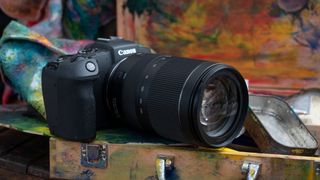
1. Canon RF 24-240mm f/4-6.3 IS USM
Our expert review:
Specifications
Reasons to buy, reasons to avoid.
If you're an EOS R-series shooter and want something with a longer focal range than the Canon's two 24-105mm options, then you're in luck as there’s also a superzoom option that isn’t overly big and heavy, and doesn’t cost silly money. It comes in the shape of the RF 24-240mm, which squeezes a very useful 10x zoom range into a reasonably lightweight and weather-sealed build. Further attractions include a Nano USM autofocus system which is super-fast for stills and enables smooth and virtually silent focus transitions during movie capture, and a highly effective 5-stop image stabilizer. At the short end of the zoom range, color fringing can be noticeable and barrel distortion is massive, but both of these aberrations are corrected in-camera by default, and when processing raw files. With this lens, Canon is combining optical and digital corrections rather than relying on optical corrections alone.
Read our full Canon RF 24-240mm f/4-6.3 IS USM review
Best travel lens for Nikon mirrorless cameras

2. Nikon Z 24-200mm f/4-6.3 VR
The list of travel-friendly credentials for this soon-to-be-launched lens is long and impressive. It’s particularly compact and lightweight for a full-frame lens that boasts such an extensive zoom range, yet has a sturdy construction that includes comprehensive weather-seals and a fluorine coating on the front element to repel moisture and grease. Image quality benefits from the inclusion of two aspherical elements, one aspherical ED (Extra-low Dispersion) element and two further ED elements. Nikon ’s high-tech ARNEO coating is also applied to minimize ghosting and flare. Not just for stills, the stepping motor-driven autofocus system enables smooth focus transitions during movie capture, along with minimal focus breathing and focus shift when zooming. Ideal, for full-frame Z-series cameras, the lens is also an interesting travel choice for the Z 50 , where this camera's 1.5x crop factor gives this lens an effective zoom range of 36-300mm.
Read our full Nikon Z 24-200mm f/4-6.3 VR review
Best travel lens for Sony cameras
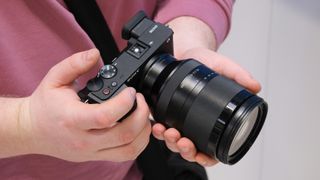
3. Sony FE 24-240mm f/3.5-6.3 OSS
Although fully compatible with Sony ’s APS-C format E-mount cameras, on which this lens has an effective focal length of 36-360mm, this lens really comes into its own on full-frame bodies. It’s typically weighty for a full-frame format superzoom but doesn’t feel overly large and has refined handling. The 10x zoom range kicks off at 24mm, enabling a generously wide maximum viewing angle, and there’s good telephoto reach at the long end. Based on a stepping motor, the autofocus system is quick and quiet, while Optical SteadyShot gives a benefit of around 3-stops in beating camera-shake. The optical path includes no less than five aspherical elements, plus one ED (Extra-low Dispersion) element. Image quality is mostly very good for a superzoom lens although corner-sharpness is a little lacklustre at the short end of the zoom range, and overall sharpness drops off at the long end.
Best travel lens for Fujifilm cameras
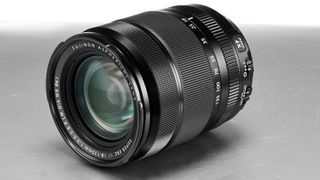
4. Fujifilm 18-135mm f/3.5-5.6 WR LM R OIS
From Fujifilm ’s acclaimed XF stable of lenses for its APS-C format mirrorless X-mount cameras, this one has an impressive string of letters after its name. It’s a WR (Weather-Resistant) lens with no less than 20 areas of sealing in its construction. It features a fast and virtually silent LM (Linear Motor) autofocus system that’s super-fast for stills and smooth for movie capture. Handling is enhanced by the ‘R’ control ring, and it has a particularly effective 5-stop OIS (Optical Image Stabilizer). Quality glass includes four aspherical elements and two ED (Extra-low Dispersion) elements. The 7.5x zoom range is a little limited compared with some other travel lenses on the market but this helps to enable a relatively compact construction. Image quality is very impressive overall, although corner-sharpness is a little mediocre towards both ends of the zoom range.
Best travel lens for L-mount cameras

5. Panasonic Lumix S 28-200mm f/4-7.1 Macro O.I.S.
If you're in search of a versatile travel lens for your Lumix S5, the Lumix S 28-200mm f/4-7.1 O.I.S. fits the bill perfectly. This lens stands out as the most compact and lightweight 7x superzoom lens available for any system, making it an ideal companion for travel without adding bulk or weight to your carry-on. Covering a range of commonly needed focal lengths, it's a must-have addition to any Panasonic photographer's gear collection.
While the focal length falls slightly shorter compared to other brands, limiting its versatility for sports and wildlife photography, the trade-off for its compactness is reasonable and easily accepted.
There are no compromises on image quality to be found here – the 28-200mm lens performs admirably, with only minor inconsistencies at the extreme end of the zoom. While it may not match the sharpness of prime or professional lenses, Panasonic has achieved commendable results for a lens of this category.
The standout feature of this Lumix S 28-200mm lens is its Dual I.S.2 image stabilization, combining optical stabilization with in-body stabilization. This system is among the best available, significantly enhancing stability for both still photography and particularly impressive results in handheld video shooting, even at 200mm.
Read our full Panasonic Lumix S 28-200mm f/4-7.1 Macro O.I.S. review
Best travel lens for Micro Four Thirds
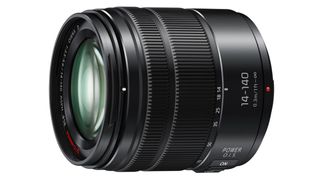
6. Panasonic LUMIX G VARIO 14-140mm f/3.5-5.6 II ASPH Power OIS
Micro Four Thirds format travel zooms from Olympus include the budget-friendly 14-150mm II and the up-market 12-200mm. They’re both very desirable lenses but we prefer this Panasonic option, which splits the two Olympus zooms for selling price, while adding a highly effective 4-stop optical image stabilizer. Thanks to the 2x crop factor of Micro Four Thirds cameras, the effective zoom range is 28-280mm in full-frame terms, thereby nearly matching 18-200mm lenses on APS-C format cameras. It delivers this in a remarkably compact package that weighs a mere 265g. That’s only about half the weight of some APS-C format 18-200mm lenses, making the Panasonic particularly travel-friendly. Even so, it packs a fast autofocus system and quality glass, including three aspherical elements and two ED (Extra-low Dispersion) elements. For a superzoom lens, sharpness is both very good and highly consistent throughout the entire zoom range.
Read our full Panasonic LUMIX G VARIO 14-140mm f/3.5-5.6 II ASPH Power OIS review
Best travel lens for Canon DSLR cameras
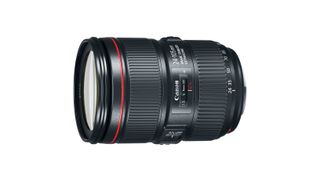
7. Canon EF 24-105mm f/4L IS II USM
Canon does make a proper full-frame superzoom travel lens - the EF 28-300mm f/3.5-5.6L IS USM - so why have we picked this 24-105mm instead? Quite simply, this is a better travel lens. At 795g, it's less than half the weight of the 28-300mm, so is much more travel-friendly, and it's also about half the price. That still doesn't make it cheap, but at least you can feel a little less conspicuous.
The new Mk II version of the EF 24-105mm f/4L IS has been redesigned to be tougher and more resistant to shock and vibration, and it features fluorine coatings on the front and rear elements. More importantly, the optics have been revamped, with the aim of improving sharpness across the whole image frame, throughout the zoom range.
Barrel distortion from the preceding 24-105mm lens was notoriously bad at the short end of the zoom range, but the Mk II performs a little better. It’s also a bit sharper, autofocus is a little quicker and bokeh is smoother, thanks to the fitment of ten, rather than eight, diaphragm blades. Overall, however, each of the improvements is quite subtle rather than making a hugely noticeable difference.
Read our full Canon EF 24-105mm f/4L IS II USM review
Best travel lens for Nikon DLSR cameras

8. Nikon AF-S 24-120mm f/4G ED VR
Nikon and Tamron have both manufactured 28-300mm superzoom lenses for many years, offering a travel-friendly option for Nikon full-frame SLRs. There’s not a lot to choose between them for handling, image quality and all-round performance. Both are good rather than great. To make the most of Nikon’s recent full-frame SLRs, it pays to set your sights rather lower in terms of zoom range, and to go for quality instead. The latest edition of Nikon’s 24-120mm VR is our first choice. It’s relatively compact and has excellent handling characteristics. It also gives you more a generous wide-angle perspective at the short end of the zoom range. The flipside, naturally, is that you’ll lose out on powerful telephoto reach, but that's often less useful than you expect anyway.
Read our full Nikon AF-S 24-120mm f/4G ED VR review
How we test travel lenses
We test lenses using both real world sample images and lab tests. Our lab tests are carried out scientifically in controlled conditions using the Imatest testing suite, which consists of custom charts and analysis software that measures resolution in line widths/picture height, a measurement widely used in lens and camera testing. We find the combination of lab and real-word testing works best, as each reveals different qualities and characteristics.
Get the Digital Camera World Newsletter
The best camera deals, reviews, product advice, and unmissable photography news, direct to your inbox!

Matthew Richards is a photographer and journalist who has spent years using and reviewing all manner of photo gear. He is Digital Camera World's principal lens reviewer – and has tested more primes and zooms than most people have had hot dinners!
His expertise with equipment doesn’t end there, though. He is also an encyclopedia when it comes to all manner of cameras, camera holsters and bags, flashguns, tripods and heads, printers, papers and inks, and just about anything imaging-related.
In an earlier life he was a broadcast engineer at the BBC, as well as a former editor of PC Guide.
Related articles

The leading authority in photography and camera gear.
Become a better photographer.
12.9 Million
Annual Readers
Newsletter Subscribers
Featured Photographers
Photography Guides & Gear Reviews

Nikkor Z 28mm f/2.8 Lens Review | Small, lightweight, affordable
If you're looking for a small, light and affordable prime lens for your Nikon mirrorless Z-Series camera, this 28mm is a versatile focal length to consider.
Lens Reviews | Nikon Lens Reviews | Photography Gear Reviews | By Steve Vansak
The full frame compatible Nikkor Z 28mm f/2.8 SE Lens is one of the most affordable, small and lightweight autofocus lenses for Nikon Z mount available.
While 28mm is a desired focal length for street photographers, it can be used in many different genres.

Compact, lightweight and surprisingly inexpensive. Ideal as an everyday walkaround for Nikon Z mount mirrorless cameras.
Attach it to a Nikon Z fc camera for instance (or any of Nikon’s APS-C bodies such as the Nikon Z 50 or Nikon Z 30), and you now have a 42mm equivalent focal length which is also great for street photography as well as environmental portraits.
Photographers with full-frame cameras, such as the Nikon Z 6II may want to lessen the bulk of their set-up and use this lens for travel or landscape photography as well.
Table of Contents
Nikkor Z 28mm f/2.8 SE Review Specs
- Small and lightweight.
- Smooth manual focusing ring.
- Beautiful aesthetics.
- Inexpensive.
- Good image quality.
- Distortion and vignetting is minimal.
- Plastic build, including mount.
- Not weather sealed.
- No lens hood included.
- Focal Length – 28mm (Equivalent Focal Length on 35mm bodies: 42mm)
- Maximum Aperture – f/2.8 / Minimum Aperture f/16
- Lens Format Coverage – Full-Frame
- Minimum Focus Distance – 7.6″ / 19.2 cm
- Maximum Magnification – 0.2x
- Optical Design – 9 Elements in 8 Groups
- Diaphragm Blades – 7, Rounded
- Focus Type – Autofocus
- Image Stabilization – No
- Filter Size – 52 mm (Front)
- Dimensions (ø x L) – 2.8 x 1.7″ / 71.5 x 43 mm
- Weight – 5.6 oz / 160 g
Build & Ergonomics
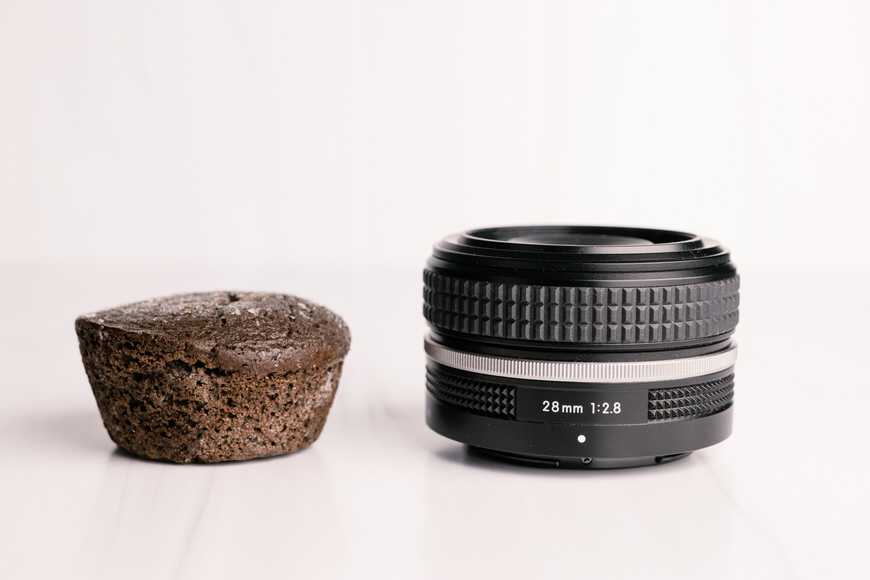
The Nikkor Z 28mm SE Lens next to a chocolate muffin.
The Nikkor Z 28mm f/2.8 SE Lens is affectionately known among Nikon Z camera owners as a muffin lens.
This wide-angle prime lens (shown here in its special edition SE version with silver ring (also available in a modern look for less money) is a full frame lens but really hits its stride on Nikon DX cameras.
The plastic lens mount may be a turn-off for some, but this is why this lens is so small and lightweight. So much so that there is no need for image stabilization within this lens.
The Nikon Z 28mm f/2.8 is just fun to use, whether mounted on my full-frame camera or my Nikon Z fc.
There are no electronic control ring or lens function buttons like on the S line of Nikon Nikkor Z lenses, but this simplicity is part of the charm.
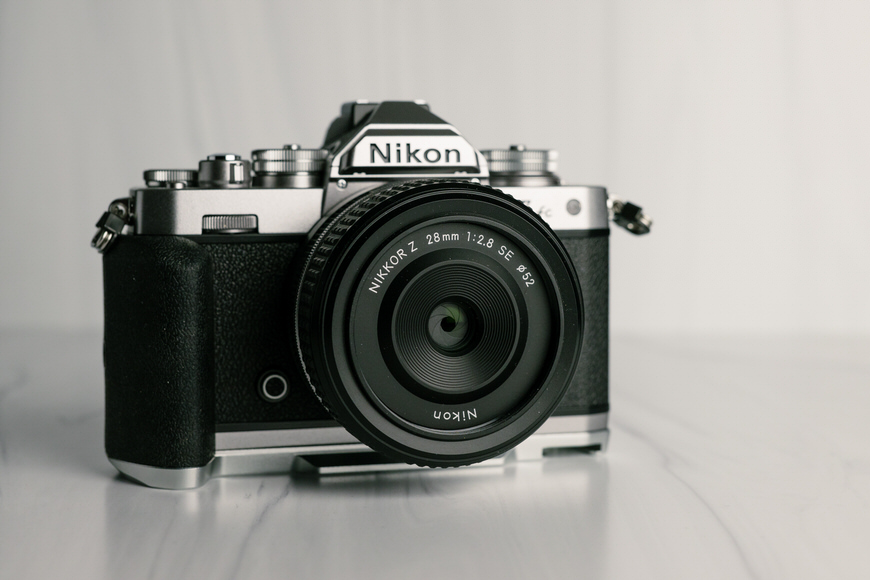
The Nikkor Z 28mm f/2.8 SE lens mounted on a Nikon Z fc camera.
Focus Performance
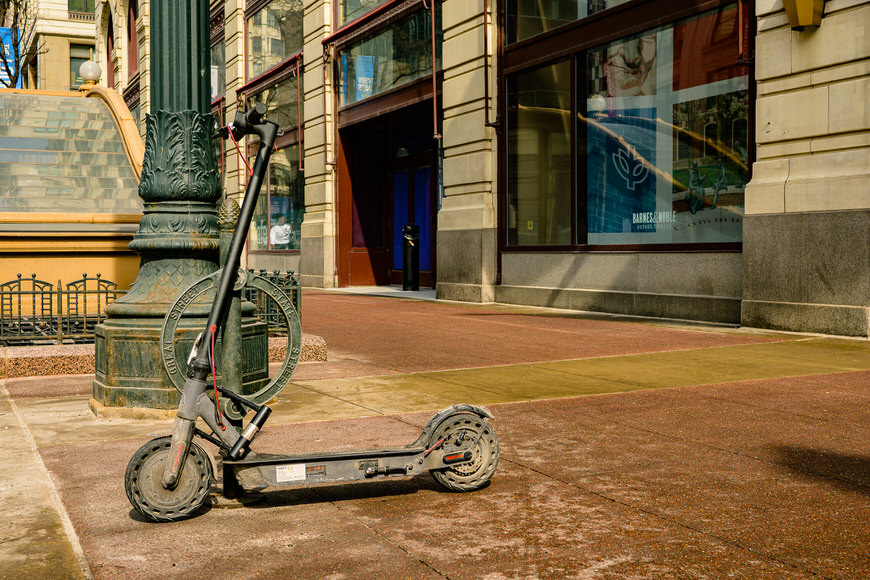
Nikon Z fc + Nikon 28mm f/2.8 | 1/640 / f/5.6 ISO 200
I’m not a street photographer by any means, but I do know that quick autofocus is at times needed.
Of all of the Z-mount Nikon lenses that I own, this one may be the slowest, but it is still a fast-focusing lens.
Manual focus is very smooth and focus peaking on mirrorless cameras makes this style easier than ever.
At f/2.8 light gathering, it’s not a fast prime compared to Nikon’s f/1.8 or f/1.2 lines, but it is respectable for low-light photography.
Image Quality
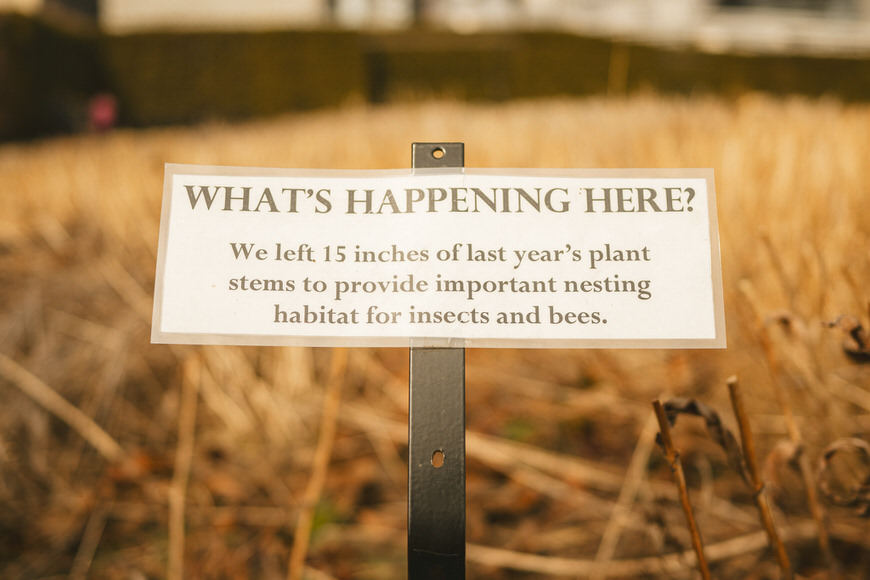
Nikon Z fc + Nikon 28mm f/2.8 | 1/3200 / f/2.8 ISO 100
The out-of-focus areas from this lens are pleasing although you do need to be close to the minimum focusing distance for maximum bokeh.
It’s a wide-angle lens, so this is not its main strength anyway.
I find the sharpness to be excellent and the in-camera correction negates the minimal distortion that exists on this new lens.
I did not see any chromatic aberration from images from my full frame bodies like the Nikon Z9 nor the crop sensor Nikon Z fc.
Nikkor Z 28mm f/2.8 SE Lens Sample Images
Here are some sample images taken with the Nikkor Z 28mm f/2.8 SE Lens, using a Nikon Z fc and Nikon Z 9.
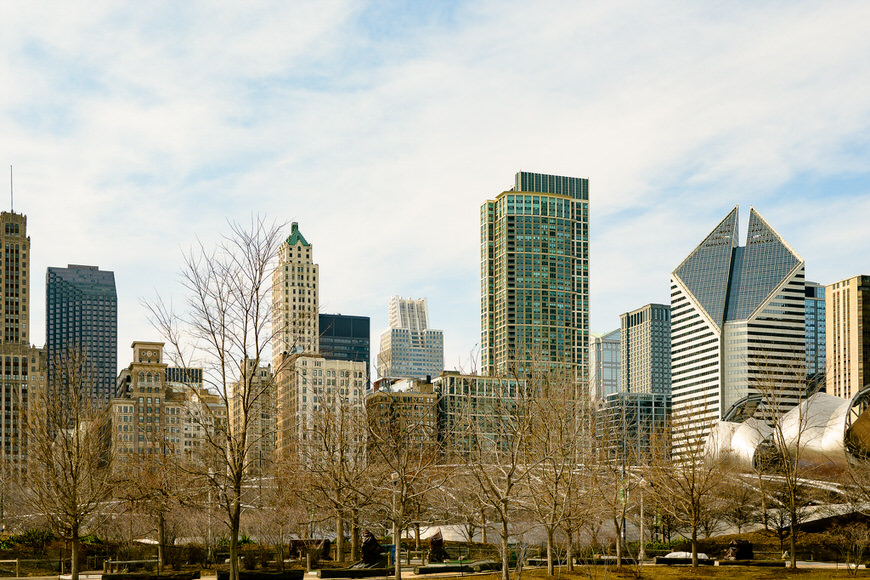
Nikon Z fc + Nikon 28mm f/2.8 | 1/1000 / f/5.6 ISO 200
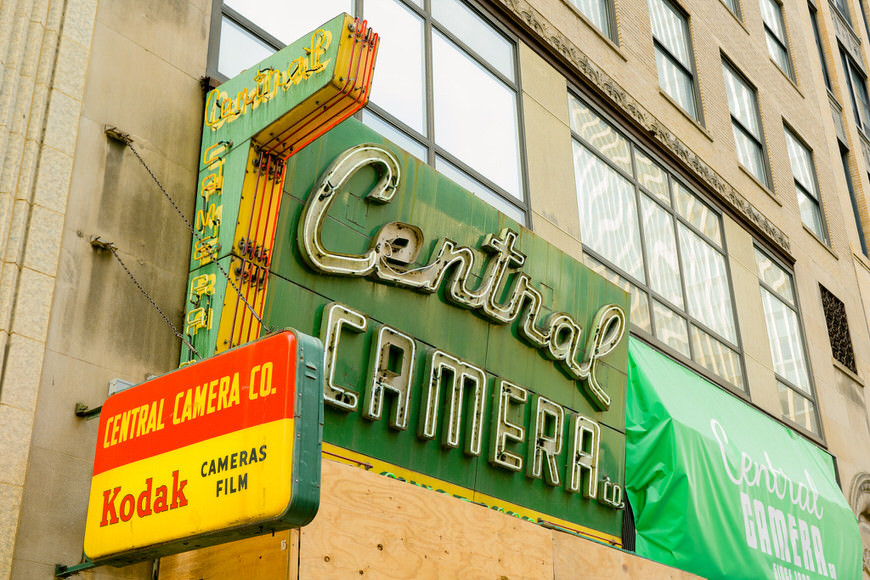
Nikon Z fc + Nikon 28mm f/2.8 | 1/125 / f/4 ISO 200
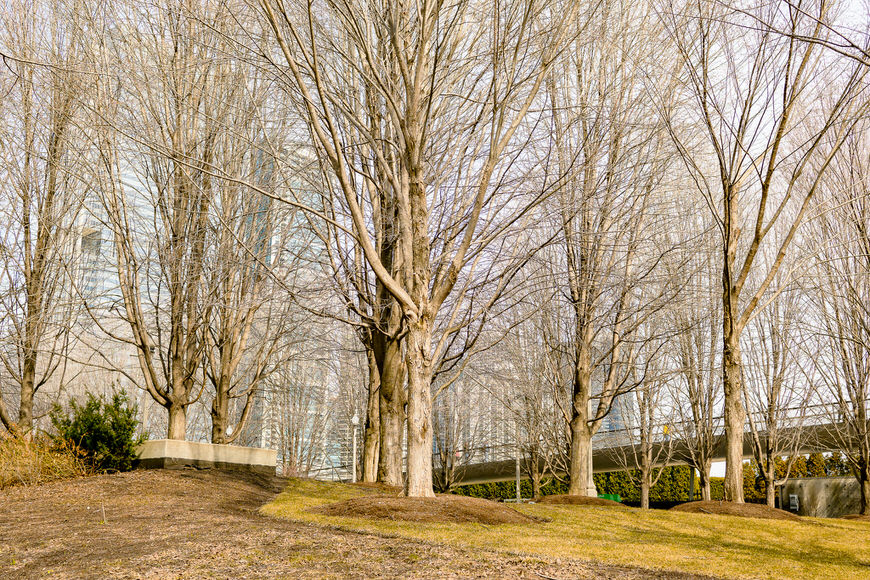
Nikon Z fc + Nikon 28mm f/2.8 | 1/640 / f/4.5 ISO 200
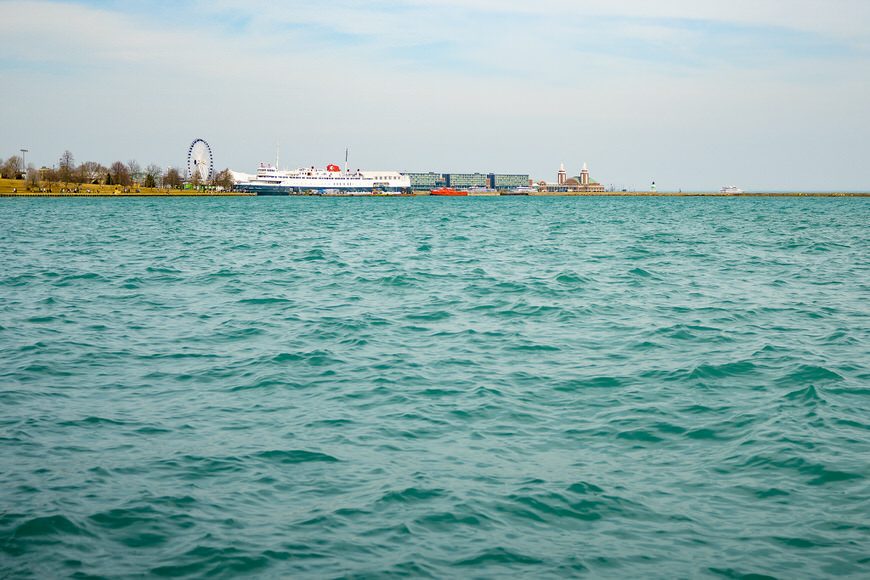
Nikon Z fc + Nikon 28mm f/2.8 | 1/2500 / f/2.8 ISO 100
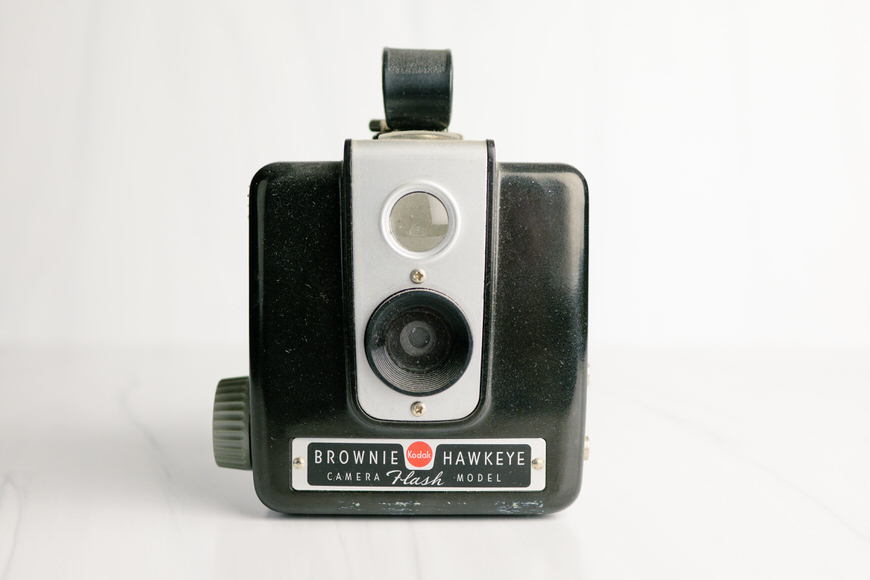
Nikon Z fc + Nikon 28mm f/2.8 | 1/160 / f/4 ISO 400
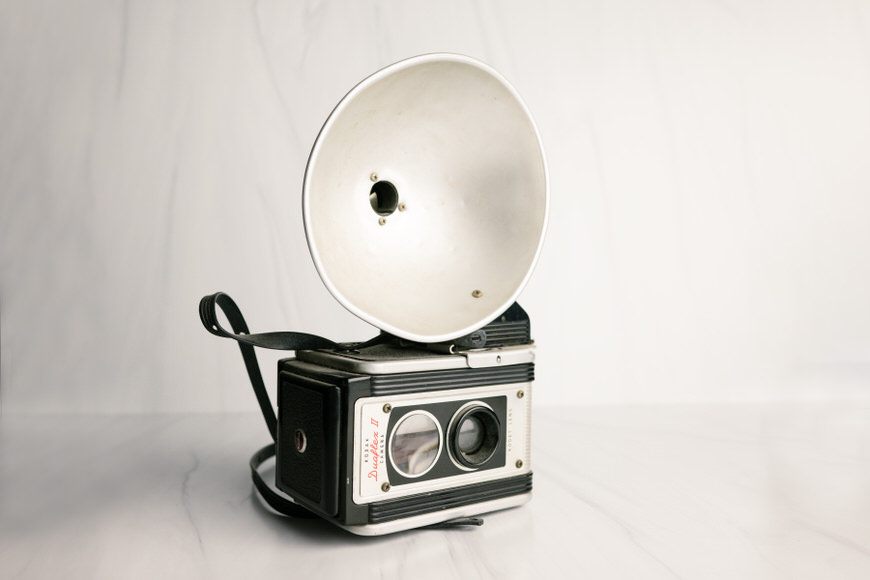
Nikon Z9 + Nikon 28mm f/2.8 | 1/160 / f/5.6 ISO 800
Alternatives
The only direct alternative for the Z lens mount in this focal length would be the Nikon 28mm f/1.4 E lens for f mount.
While that lens is outstanding and perfect for full-frame cameras and professional use, it will be substantially more in cost and weight and have to be mounted with the Nikon FTZ II Mount Adapter.
The Nikkor Z 26mm f/2.8 lens is a pancake lens for Z mount with a somewhat wider focal length.
A few third-party wide-angle lenses with autofocus such as the Viltrox Mirrorless Z 23mm f/1.4 are available if you need a faster aperture.
Value for Money
At around $300, I consider the Nikkor Z 28mm f/2.8 SE lens an excellent value.
If the retro-looking silver lens ring is not your vibe, you can save approximately $30 by opting for the non-special edition version of this lens.
The Nikkor Z 28mm f/2.8 lens is the exact same lens in a more modern design.
The lens is an even better bargain when purchased as the kit lens along with the Nikon Z fc camera.
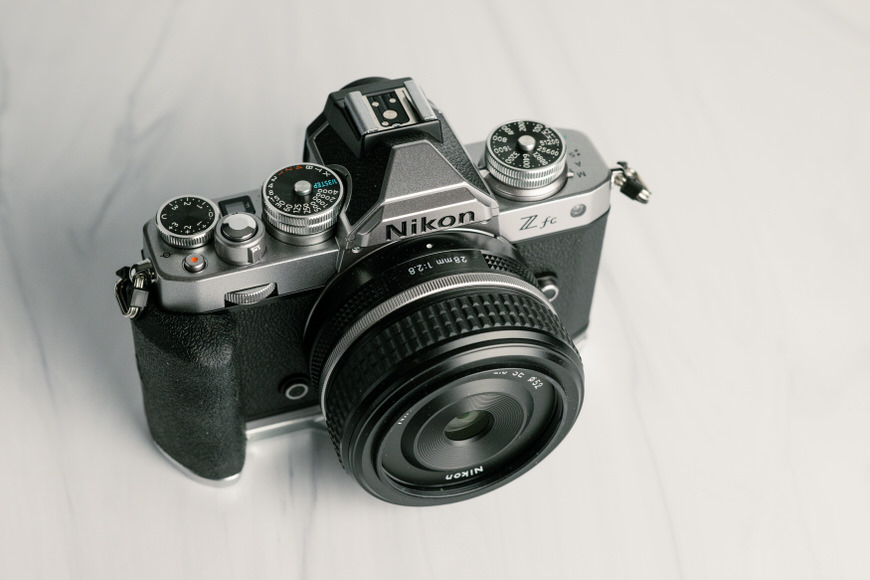
The Nikkor Z 28mm f/2.8 SE Lens mounted on a silver Nikon Z fc.
Nikkor Z 28mm f/2.8 SE Lens Review | Conclusion
I think the Nikkor Z 28mm f/2.8 SE Lens is a great lens for my casual photography and I will be keeping it around for that reason.
I have found that I really enjoy the 42mm field of view that this lens provides on a crop sensor camera.
If I feel like I want to lighten the load of my full-frame camera body set-up, this lens is there for me. I also love the retro look of this special edition version.
It’s a refreshingly fun way to lighten up your Nikon Z mirrorless camera, especially if you’re accustomed to shooting with something like the Nikon Z 70-200mm like I am!
You'll Also Like These:

Steve Vansak is lead photographer and owner of Region Weddings, shooting wedding and portrait photography in Chicago and Northwest Indiana.
Leave a Comment Cancel Reply
👋 WELCOME TO SHOTKIT!

🔥 Popular NOW:

Unlock the EXACT blueprint to capture breathtaking iPhone photos!
Shotkit may earn a commission on affiliate links. Learn more.
Photography to Explore
Why the 28mm Lens Has Become a Favorite

Most Important Though: Use What You’re Comfortable With
Readers, my journey through photographic gear started many, many years ago. Gear can be the absolute kryptonite of creativity so what I’m offering here is a simple observation from my point of view. Take what you can from it but understand that it’s not gear that makes the photographer, its the photographer and the hustle.

Disclaimer written, I’ve been using a 28mm lens for the last few years, on occasion, and loving it. My first lens was a 50mm lens. This is a standard lens and if I could only have one lens, this would be it. It interprets a scene honestly and never in all my photography exploits and adventures have I been left wanting a wider, or more zoom, of a lens after using a 50mm lens. It’s perfect.
Journey to the 28mm
But, two encounters in life created a yearning and desire for a 28mm lens, and I’m glad I went for it. First, I saw collection of photos by Trent Parke and was immediately mesmerized. This man is a living legend of photography and photographic vision. Look up his work and be inspired.
There are of course, many other legendary photographers who’ve mastered the 28mm lens: photography icons Garry Winogrand , Sam Abell and Henry Wessel , come to mind.
Second, I went to school for photojournalism. “How does the 28mm lens relate to this”, you say? A large part of photojournalism is getting close to the subject, creating visual interest and putting the reader/observer into the story. The field of view on a 28mm lens is perfect for this; It’s wide but not too wide.

The 28mm Lens in Use
Everyone’s approach to photography is different so you may have different ideas about this lens and what you prefer. I’m going to share with you my observations and you can take them with however much salt you like.

Since the 28mm lens is a wide-angle lens, it’s usually of importance to get close to your subject(s). If you’re too far back, the subject(s) of your picture will be too small. If that’s what you’re going for, you’re all set.
However, once you figure out how to get close to your subject(s), this lens nails it. Filling the frame with 28mm of visual interest creates a cinematic feel that often allows the viewer to feel like they’re a part of the image.
To achieve the best understanding of using this lens, it comes down to practice. You’ll have ugly images and you’ll kick yourself for not stepping close enough and that’s all okay. You’ll go back again and you’ll get closer and eventually it’ll begin to make sense.
The 28mm Lens is Perfect for Street Photography
The beauty of using a 28mm lens for street photography is that you don’t have to be pointing your lens directly at someone to include them in your frame. If you’re quick with your lens and it doesn’t matter what focal length you use, then you’re all set. But, there are instances when you just want to include a person, or people, in your frame and you don’t want to risk them seeing you pointing a lens directly at them. This lens helps with that.

That’s about all that comes to mind with the fantastic 28mm lens. It’s a fun lens to use but like anything in life, it takes practice to achieve desired results. I’ve read all kinds of reviews on different 28mm lenses and I’m going to say something right here: don’t feel like you’re limited with the 28mm focal length.
You can photograph just about anything with this. Portraits, landscapes, wildlife, sports…it’s all possible and beautiful and this lens is wonderful at it. If you’re all set with the lens(es) you use, that’s great. But, if you’ve never used a 28mm lens, it’s a fun one to try and you might find that it’s the perfect one for you.
Share this:
4 thoughts on “why the 28mm lens has become a favorite”.
I have a 28-85 zoom which is probably my favorite lens. Mostly I am shooting at 28mm with it. I don’t do much street photography, but I agree it is very useful when photographing people, landscapes and architecture!
That’s fantastic Steve! 28-85 sounds like the perfect range of focal lengths. I can see why it’d be a favorite lens of yours.
While it’s far from my favorite focal length there is something to be said about the 28. It’s a versatile focal length that is a nice compromise between 24mm and 35mm. If I had to decide between a 24 and 28 prime, that’s where things would get interesting. In my opinion if you want to go wide 24 is the better option, but if you need to go wide and do anything else, 28mm suddenly feels like a much friendlier lens. You can get close with a 28 where with a 24 you might hesitate. The distortion is there with a 28 but its no so glaring that it stop you from taking a portrait.
Great post Keith. Keep them coming!
Hi Tobias, excellent points you make. A number of years ago I was at a photo conference where Allison V. Smith was speaking. Her work encompasses photojournalism and art in a variety of ways. She used/uses a Hasselblad for her art work but for a lot of her assignment work—which included a lot of portraits—she used a 24mm prime. Ever since that presentation, I’ve found the 24mm focal length to be a mighty powerful and versatile perspective. Thanks for your comment, as always, I’m very appreciative of your thoughtful insights!
Leave a Reply Cancel reply
- Kale by LyraThemes.com.

28mm Vs 35mm Lens. Choosing The Right One For You.
Choosing lenses can be a daunting task; they are an expensive purchase and each could dramatically shape the look of your photographs. Two lenses that often come up against one another are the 28mm and 35mm. Both have wide angle lenses with large field of views, but there are some dramatic differences between the two.
Choosing between a 28mm and 35mm lens comes down to personal preference and the types of photography being pursued. Both lenses are perfectly capable of taking a variety of shots. However, 35mm lenses are usually better for individual and group portraits because of less lens distortion. The 35mm lens also mimics that angle of view that we see with our eyes so it looks more natural. 28 mm lenses are better for landscape and architecture photography because it can take in more of the scene due to the wider field of view. The short focal length also gives the 28mm a more unique look thanks to it’s wider angle of view and lens distortion . Also, because it has a large depth of field it is hard to blur out the background and make your main subject stand out with the 28mm. This means most of your image will be sharp and in-focus.
Both lenses would be a welcome addition to main camera bag, but choosing just one requires some forethought. Consider the pros and cons of each, along with the intended photography style to help make a decision.
Do I Need a 35mm Lens?
The simple answer to the question “do I need a 35mm lens” is “no”. Truthfully, great photographs can be taken with any lens – the only difference is how the lens is supporting or hindering the intended intent of the images. Thankfully, 35mm lenses are great at supporting a wide variety of styles.
For general photographers, those interested in portraits, or generally taking photos that focus on the subject more than the background (like in photojournalism, street photography, or wedding photography), a 35mm lens can be a phenomenal addition to any lens collection. The wide variety of shots that can be taken on a 35mm is one of it’s largest draws.

A 35mm Lens’s Focal Length
Focal length is a measure of how much of a scene a lens can capture. The larger the number, the more narrow it’s field of view and the further “zoomed in” the image will look. For instance, a 200mm lens will be incredibly tight, unable to even capture a whole face without the photographer being very far back. In comparison, with a 50mm lens the photographer could stand closer and get more of the main subject in frame.
Using this same scale, a 35mm lens is wide enough to capture most subjects comfortably while still allowing for background detail. Subjects in the frame will take up the large majority while not resulting in an overbearing presence. The subject-focused focal length of a 35mm lens is its largest strength, and the main reason to choose one. For photographers who prefer to focus on individuals or objects rather than a whole scene, it is a much better fit than a lens with a shorter focal length, like a 28mm lens.
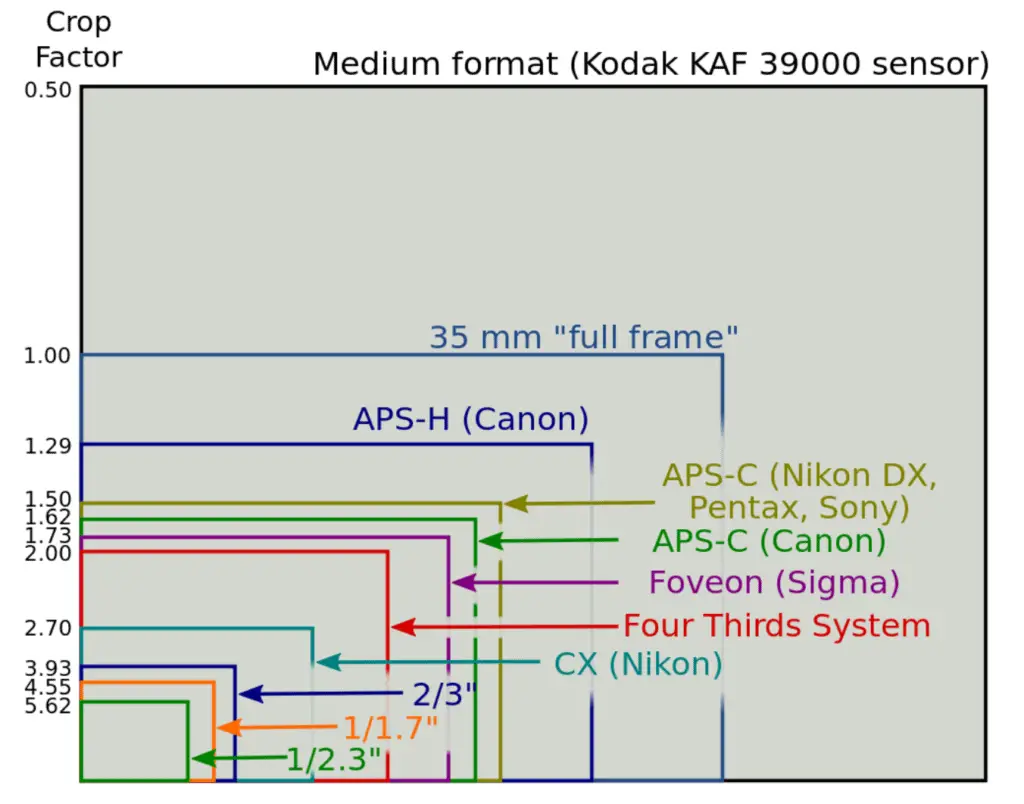
Depth of Field On A 35mm Lens
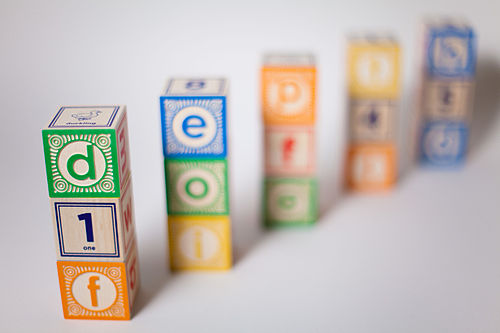
Depth of field is how much of the scene is in focus when a photo is being taken and is a factor of focal length and aperture size. Longer focal lengths (like 200mm) generally have less depth of field, while shorter focal lengths have more. The less depth of field, the less is in focus in the scene. Although that can sound like a bad thing, in reality, it draws attention to the subject of the frame and allows everything else to support it. The is especially true in portrait photography.
35mm lenses being a wide-angle lens are not known to have an enormous amount of shallow depth of field (like a 200mm lens), although they can hold their own for those interested in achieving the look. 35mm lenses can create a shallow depth of field in the right conditions but are best for a more subtle, shallow depth of field like in the image below.
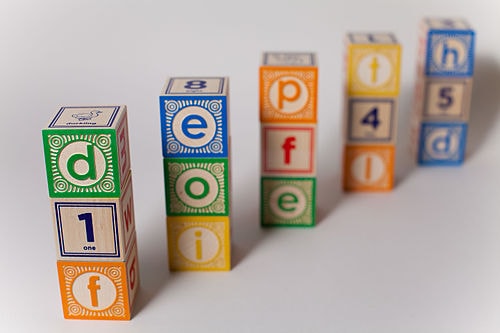
This helps the lenses achieve a realistic look similar to the human eye. For photojournalists or street photographers, this can be a huge benefit. Thankfully, the 35mm has enough depth of field to still allow shots to explore and play with background blur.
The Pros and Cons of Each Lens And What They Are Good For
Ultimately, looking at the pros and cons of each lens can dramatically help when deciding which one is right for you. Both are fantastic in their own right, so it is important to know the pros and cons for each one.
In general, a 35mm lens is slightly better for subject-based photography, while the 28mm is better for landscape photography. Of course, there are more photography disciplines than those two, so it is best to not base the whole decision around this point.
The Pros Of A 35mm Lens
A 35mm lens is a common recommendation for a first prime lens for a variety of reasons. It is solid all around, and many applications can be found for it. Thanks to the large variety of uses, it is widely considered a good everyday lens for those that prefer slightly wider shots.
Some of the common pros of the 35mm lens are:
- A natural look with little lens distortion
- Good all-around depth of field
- Great for subject photography when not placed too close to the edges
- Easy and quick to use
- Usually light, small, and compact
The natural look of the 35mm lens can actually be seen as a pro or con, depending on your intended style. However, most people find the reliance and how immediately recognizable photographs taken from the 35mm to be a bonus. Especially if you are interested in photographing weddings, photojournalism, or portraits, all of which usually benefit from capturing people naturally, with little distortion.
The 35mm lens’ adeptness at subject photography cannot be overstated. Able to capture portraits, group shots, items, or small scenes, the lens naturally and quickly focuses in and creates a perfect shot in a large variety of locations. Many 35mm prime lenses can obtain large apertures (like f/2 or f/1.4) which allows them to take in a great amount of light, as well, making them great for taking images in low light.
The Cons of A 35mm Lens
Of course, there are more pros to be found with the 35mm as you become more familiar with the lens. There are also some common issues or complaints with the lens, however. Some of the common cons, or discrepancies, that you may run into using the 35mm prime lens are:
- The lens is too narrow for landscape or wide images
- Shots can look too journalism-based for those interested in more artistic focus
- The lens is too wide for images of details
Many of the issues that 35mm lens users bring up are about its place as a lower mid-range focal length lens. While it can capture many things well, it is still a prime lens with a low focal length; this is an inherently limiting factor. Thankfully, the 35mm lens can be made to work in spite of these issues – it may simply require more practice or effort.
A 35mm lens is not great for landscape or wide shots. Most of the time, they will come out looking cropped or shortened, not achieving the sweeping grandeur that many landscape shots are looking to capture. This can be a bonus for those looking to simply capture these types of wide shots, but for the majority of photographers looking to make their photos at least a little artistic, this is a noticeable limiting factor.
Thanks to the human eye having a focal length roughly close to a 35mm lens, this can result in boring or generic shots, especially if they were taken quickly. This is a con that is easily avoided by taking extra time to make shots interesting by using more unique angles or perspectives rather than straight on at eye level, but it can be a problem for beginning photographers.
One of the final complaints about a 35mm lens is that it is too wide for detail shots or heavy depth of field. This is the opposite of the first con mentioned; in this case, where the goal is to capture details rather than the subject in an environment, the 35mm is often far too wide. Situations where detail shots come up often include weddings, product photography, and some styles of street photography. In cases such as these, it may be better to invest in a zoom or macro lens to better achieve your intended look.
The Pros of A 28mm Lens
28mm lenses are fantastic wide-angled lenses that can create some truly unique shots. Many phone cameras default to roughly this focal length, so it is a look that has become more common in recent years. Along with this resurgence, the 28mm lens has seen a great number of pros be further explored.
The differences between a 28mm and 35mm lens seem like they would be minor; after all, it is only 7mm of difference between the two focal lengths. The differences may be hard to tell for the average person. However, these small distinctions are noticeable to a photographer and end up defining quite a few of the pros of a 28mm lens. Some of the most notable pros of using a 28mm lens are:
- Fantastic, unique wide-angled shots
- Deep depth of field
- Adds a specific character to images that help make your images stand out
- Generally a small, light, and compact lens
The wider angle of a 28mm lens makes a real difference in capturing the scenery and surrounding subjects of a shot, even when compared to the similarly-angled 35mm lens. When shooting using a 28mm lens, it is helpful to think of the lens as a window into the world; the 28mm is a slightly larger window, letting you see just a bit more. Unlike even lower focal lengths (like the 16mm), it is not obnoxiously so; subjects are still in frame and clearly noticeable. Instead, using a 28mm, the scenery becomes more, if not, just as important.
With this wide-angle lens comes a necessity to treat the area around the subject as just as important as the main subject itself. Ultimately, this can lead to some unique shots and make you a better photographer as you consider more of what to include in the scene of each photograph.
The incredibly deep depth of field that most 28mm lenses come with help make the background as important as the foreground. The depth of field is difficult to subtly vary on a 28mm, so things like bokeh, or out of focus background, are largely impossible.
For those who have gotten used to larger focal lengths like the 50mm, this can be a big change; however, it can ultimately create some very sharp and stand out photographs. As an extra benefit, learning to properly capture subjects without needing to blur backgrounds will make other photos with your other lenses better as well.
Finally, thanks to the relative constraints of a 28mm lens, it lends itself wonderfully to characteristic images. In this way, despite the small difference, it is almost the opposite of the 35mm lens. The slightly wider focal length allows for more areas in each photo to be distorted, or the tops of buildings to be captured. This comes up often in street photography or landscapes where the scale of the images emphasized.
The Cons of A 28mm Lens
Of course, the 28mm lens is not without its own set of problems. In the same way that its unique form factor gives it many pros, it also introduces a specific set of problems. Some cons of a 28mm lens include:
- You must be much closer to subjects
- Lens distortion
- Wide angles can be difficult for many common shots
28mm lenses have to be closer to your photography subjects to achieve similar results to a 35mm or 50mm lens. Anytime that you want to take a picture with one subject as the clear focus, whether for a portrait, still life image, or display, you will have to move much closer. This can be an issue for event photography, as the photographer traditionally wants to stay as out of the way as possible. It can come up in other areas too. Street photographers may have to get closer to people than they feel comfortable with, or they may lose a shot if the subject moves away quickly.
Getting used to the innate lens distortion on almost all 28mm lenses can be a challenge, and is one of the top reasons why adjusting to such a wide-angle lens can frustrate photographers. The distortion can make faces look weird, or buildings too wide if not composed correctly. Subjects will not be captured in flattering proportions and shadows can become longer or shorter than anticipated. Thankfully, this is a problem that is much easier to deal with than ever before with new 28mm lenses, and it becomes less of an issue as you get more comfortable using a 28mm lens. Eventually, the distortion can become a pro to the lens, and even contributing to unique images.
One of the biggest cons of using a 28mm lens is images taken with the lens do not generally look “normal”. Portraits are very common for almost any photographer to take, and they can become distorted or difficult to capture with a 28mm. Additionally, detail or close up shots of just about anything will suffer when taken with this lens because of how much of the scene will be captured with the lens. All of this is to say that, despite its great effectiveness at what it does, the 28mm is not a highly versatile lens; it is not going to be a one and done lens for almost anyone.
Which 35mm and 28mm Lenses Are The Best?
After deciding on which size lens to go with, the next important question is – which is best? There are many great 35mm and 28mm lenses available from every major manufacturer, and even 3rd party photography companies have developed their own. The number of options is fairly large, so it is important to figure out which one suits your needs the most.
When looking at lenses of any focal length, some important factors to keep in mind are size and weight, aperture size, and minimum focus distance. Size determines how compact and discreet the lens will be, weight speaks to how heavy the lens is, the aperture determines how much light the lens gets into the camera (also this affects depth of field), and the minimum focus distance determines how far something must be from the lens for it to be able to focus on it.
In general, smaller and lighter lenses with larger apertures (like f/1.4) that let in a lot of light, and those that have lower minimum focus distances will be better. When looking to buy lenses, it is important to remember that, generally, speaking, you get what you pay for. Many manufacturers have lenses available across a small spectrum of qualities, so choose the best one available in your budget.
The Best Canon 35mm And 28mm Lens
Canon is one of the most popular camera and lens manufacturers in the world, offering products ranging at the beginner level to top professionals. With canon, it is absolutely important to determine a budget before buying any lenses; although they do have a slightly smaller offering pool for 35mm and 28mm, there are still plenty of choices across price ranges.
It is hard to go wrong with an official Canon lens that matches your desired focal length, regardless of your budget. However, it is in your best interest to choose the one that fits your need best. With Canon lenses, the more money you are able to spend, the faster (larger aperture) and better made the lens will be.
For the 35mm focal length, Canon’s RF 35mm f/1.8 IS Macro STM Lens is tough to beat. It is a compact lens, meaning that it is even more lightweight and easy to carry than other 35mm lenses and sacrifices very little in return. It is made for the new RF mount cameras that Canon recently has produced. It has a fast aperture at f/1.8, so photography will be quick enough to set up for street and event photography. Additionally, the camera is rated as a macro lens which means it has an incredibly low minimum focusing distance of 0.56 ft. With one that low, it is unlikely that you will run into any problems focusing on close-up details.
If you do not own a RF mount camera, then I’d suggest the Canon EF 35mm f/2 IS USM Wide-Angle Lens. This lens is built for full frame cameras, has autofocus, affordable (compared to the more professional level Canon EF 35mm f/1.4L II USM Lens), has a relatively fast aperture at f/2, light weight at 0.8 lbs., and the minimum focus distance is short at 0.79 ft. This camera also comes with a built-in image stabilizer function.
If you own an APS-C camera than I suggest looking at the Canon EF-S 35mm f/2.8 Macro IS STM . This lens is built for APS-C sensor cameras, it is affordable, has autofocus, has a relatively fast aperture at f/2.8, light weight at 6.7 oz., and is a macro lens the minimum focus distance is very short at 5.12 inches. This camera includes a light on the end of the camera to light your subjects which works great for macro shots. It also has lens stabilizer that helps your images stay sharp when hand-holding while taking images.
For Canon’s 28mm lens offerings, look no further than the Canon EF 28mm f/1.8 USM . It is Canon’s fastest 28mm available (there is a f/2.8 version available with similar options) and boasts many similar features to those found on the aforementioned 35mm lens. It has autofocus, come with an image stabilizer function, very small and light weight at 0.57 lbs making it perfect for accompanying photographers anywhere, and provides more depth of field adjustment than many competitors. The camera also has a minimum focal distance of 0.75 ft.
Once thing to not is this 28mm lens is designed for use with full-frame cameras – if you attach it to a APS-C camera, it will have a 1.62 crop factor with makes the lens actually function more closely as a 45mm lens. This is an issue that will happen with any 28mm lens, so be aware of your camera sensor type and adjust accordingly.
The Best Nikon 35mm And 28mm Lens
Nikon is another incredibly popular manufacturer of both camera bodies and lenses. While Canon has surpassed Nikon as the most common camera producer, especially in the beginner APS-C sensor style cameras, many professional and beginner-level photographers use Nikon as their preferred choice. Due to Nikon’s long and successful history, they also offer a wide range of 35mm and 28mm lens choices.
As when choosing any lens type, it is important to keep a budget in mind. Cheaper options of both the 35mm and 28mm lenses listed here are available from Nikon for a fraction of the price. If you need to downgrade or are looking to simply dip your toes into these new focal lengths, those may be fantastic options. However, for the best of the best of Nikon 35mm and 28mm lenses, there are some clear winners.
At the 35mm focal length, Nikon’s NIKKOR Z 35mm f/1.8 S is the best available for the Nikon’s Z style mount of cameras. Part of Nikon’s top line of lens products, it boasts a fast aperture at f/1.8 and comes with some of the highest quality glass available. The autofocus on this lens is something Nikon is particularly proud of, and there is no wonder why; many customers claim how easy and fun it is to use for that very reason. The Nikon NIKKOR Z 35mm f/1.8 S is a large lens, but Nikon has worked hard to make it lightweight at 0.82 lbs which makes it easy to carry while retaining great durability. The camera has a minimum focus distance of 0.82 ft. Nikon’s offering for the 28mm lens is not only one of their best lenses period, but it also may be the best 28mm lens available on the market today.
Nikon’s offering for the 28mm lens spot is not only one of their best lenses period, but it also may be the best 28mm lens available on the market today. The AF-S NIKKOR 28mm f/1.4E ED has absolutely everything that someone buying a premium prime lens can hope for. It comes with autofocus and the fast aperture of f/1.4 is makes it one of the fastest lenses available today. The lens is not compact and lightweight at 1.42 lbs but makes up for it with it’s image quality. This lens has the Nikon gold ring which makes it one of the best lenses that Nikon manufactures and has a minimum focus distance of 11.02 inches.

Choosing the Right Lens for You
Depending on your photography style and needs, you will want to use a 28mm over a 35mm lens on certain occasions and a 35mm lens over a 28mm. Both lenses have pros and cons and reasons for using one over the other and dependant on your photographic vision and goals.
My name is Lee Jones, MFA and I'm the professor behind The Photography Professor. My goal is to answer your questions about film-based photography in a format that is easy to read and understand.
Recent Posts
Top 5 Places To Develop Film in Phoenix, Arizona
If you live in or around Phoenix, Arizona you may wonder where the best lab to get film developed. The good news is from experienced professionals to dedicated hobbyists, Phoenix is home to several...
3 Ways To Know if Your Film Is Loaded Correctly
The 3 signs that the 35mm or 120 film is loaded correctly are the film take up lever spins when you use the film advance lever or wheel, there is tension when you use the film advance lever or wheel,...
What’s the Perfect Focal Length for Street Photography, 28mm or 35mm?
Street photographers have had a wealth of great lenses across many different systems to choose from over the years. Two of the most common lenses available for this are 28mm and 35mm lenses, often the preferred tool for many. But, which one is better?
The answer is, as it often is in photography, "it depends." Coming at you from street photographer and YouTuber Doriyan Coleman, he takes a look at the 28mm focal length and the 35mm focal length and how they've affected his street photography.
Much of what he talks about comes down to your comfort level as a photographer. The wider the lens, the closer you have to be to your subjects, and sometimes, that means with a 28mm lens, you're really invading someone's personal space, whereas with a 35mm, that may not be the case. Coleman talks about how you can easily layer a scene with a 28mm lens, but that it also makes things difficult to compose. He noted that he himself often cropped in on the wider images shot with a 35mm because such an already wide lens can be hard to create clean compositions with, let alone when you're going 7mm wider. Furthermore, if you're in an area that's not a densely populated city, getting interesting backgrounds and compositions can be very difficult with such a wide focal length. There's also some value in having a lens where people might not notice you versus one where they definitely will, depending on what you're going for.
We know where I stand on the issue. For me, 40mm is that "Goldilocks" focal length , whether that's achieved through an equivalent focal length on a Micro Four Thirds camera (via Panasonic's excellent Lumix G 20mm f/1.7 II ASPH. lens or on a full frame with something like the sadly discontinued Canon EF 40mm f/2.8 STM Lens ). I've forced myself over the years to love my 50mm, but it's just a bit too tight, even on a full frame body.
Coleman doesn't make a solid recommendation, because for each person, lens selection is a very personal choice. What lens do you prefer to use for street photography? Leave your thoughts and photos in the comments below.
Wasim Ahmad is an assistant teaching professor teaching journalism at Quinnipiac University. He's worked at newspapers in Minnesota, Florida and upstate New York, and has previously taught multimedia journalism at Stony Brook University and Syracuse University. He's also worked as a technical specialist at Canon USA for Still/Cinema EOS cameras.

For me, the wider, the better.
I hear you about "invading someone's space," but with tiny lenses and cameras, you can do "grab shots" with a super-wide, without even looking at the EVF or screen.
I'll set the Laowa 7.5mm ƒ/2 for a comfortable depth-of-field for what I'm doing — usually ƒ/8 or smaller — slap it on a Pen F (with silent shutter), then just walk around with it dangling from my finger loop, surreptitiously firing off shots without anyone noticing.
(Won't let me upload an example for some reason…)
Eh?? Another pointless article?
Tbh, and to travel light its hard to beat a fast short zoom...20-35, f2.8 comes to mind. High iso is trivial with modern dslr's so f2.8 is perfectly fast enough?
Great work by Doriyan and you as well. I see people are already complaining about the article and then adding completely nothing to the topic; that means this was a hit.
28mm forever for me. Cheers.
Wider the better for me, can always crop in later.
Street lenses often come in pairs ;-) I find myself using the classic combo of 35 and 75 on many occasions. A dedicated 28 goes well with a 50. As many new photographers struggle with coming close, I often recommend a 50 to start with.
The perfect combination for street photography is of course a 23mm F2 and a 800mm F11. Wide or compressed and the girls are impressed when you come walking down the street with your long tube.
Photography is about seeing. The 28mm lens closely resembles the field of vision of the human eye, minus the periphery. Nuff said.
Not even close. The high resolution part of your retina covers only a 2 degree angle of view. The rest is constructed by your brain in "post".
tight neighborhoods - 28 major city downtown - 35
Can you elaborate? Very curious about this logic.
40mm. That’s my go to street photography focal length. I also prefer a manual lens. So simple to zone focus and not having to rely on autofocus.
I feel sorry for younger photographers who have never known life without autofocus!
Especially with candid street shooting, I tend to either hyper focus or zone focus. When I mention that to a young photographer, their eyes glaze over.
Over the years I’ve met novice photographers who rely too heavily on the camera technology to do things for them and never really understand what they are doing. Those people have sadly never experienced photography with a manual film camera and actually having to know what you are doing.
Although, I must admit, I'm truly in love with "focus peaking." You can "sweep" the manual focus across the scene, and see the effects of changing ƒ-stop, and "sweep" your focus across the scene, putting your subject in the middle or on either edge of the range of acceptable focus. Fun stuff!
But yea, understanding why you'd even want to do such things is the first step
Neither. 50mm in most circumstances, with 35 or 130 in a few settings (FFE)
I took a 100-400mm into NYC the other day just to see how that did as a street photography lens. It was not ideal.
I think it comes down to what you are used to. I have been doing street photography for about 10 years and started with a 35mm equiv lens on a Fuji X100s. I am now used to that and am familiar with the field of view and how close I need to get. However, I recently purchased the Ricoh GRlllx which is 40mm equiv. For me it's a bit tight but still useable. I don't like 28mm but know that if I used it a lot I'd get used to it and enjoy it. I just don't like switching, it makes the job harder.
Like the author, I too love the 40mm FOV. With higher MP cameras it's a breeze to crop in and maintain details as well.
An A7RIV (or III) with a Zeiss Batis 40 is a great combo. Beautiful rendering and the close focus capability is a great bonus.
There's a thing called 24-70...
Cartier-Bresson, arguably the greatest street photographer, used a 50 mm Elmar lens on his Leica.
But photographers of 2022 have to go into John Nash-mode to get that extra oumph. Even if it means going schizo.
This is like asking what the perfect sized screwdriver is, a #000 JIS or a #2 Phillips head? Well, it all depends on what kind of screws you want to turn, doesn't it?
Lenses and cameras are tools. Pick whichever tool is most appropriate for the job at hand. Sometimes that will be a 28mm, sometimes it will be a 35mm, and very often it will be something else entirely.
Who needs a screwdriver when you got a power grinder?
It’s possible to have a perfect focal length for street photography but the answer to that is going to be different for each individual. Some people may use more than one focal length and others use just one. I prefer one focal length for street photography
I went with 35mm for the longest time. The common wisdom being it is the best for street and candid. What I was told by some older photographers years ago is that 35 is close to the human field of view. I guess I prefer an unnatural FOV. Since my favored lenses are 85mm and 24mm. 85mm just does faces so great. And the slight tele is prefect for shooting a street mural across the street. 24mm (actually 16mm on Xmount these days) I like because of the drama of wider angle. Works really well on low angles stopped down to capture a lot of layers of action. I used 28 for a bit on my old Canon full frame but found it kind of boring. Not tight enough or wide enough.
I vote for 28mm. You can always crop to 35mm. My favorite lens now is a 21mm 2.8 Zeiss Distagon. I can crop to 24, 28, and 35 especially with my 45MP DSLR.
Cameralabs Camera reviews, lens reviews, photography guides
- Canon camera reviews
- Fujifilm camera reviews
- Nikon camera reviews
- Olympus camera reviews
- Panasonic camera reviews
- Sony camera reviews
- All Camera reviews
- Canon lenses
- Fujifilm lenses
- Nikon lenses
- Olympus lenses
- Panasonic lenses
- Samyang lenses
- Sigma lenses
- Sony lenses
- Tamron lenses
- Zeiss lenses
- Best mirrorless camera
- Best point and shoot
- Best vlogging camera
- Best superzoom camera
- Best waterproof camera
- Best Camera Gifts and Accessories
- Best Canon Lenses
- Best Nikon Lenses
- Best Fujifilm lenses
- Best Micro Four Thirds Lenses
- Best Sony lenses
- All Lens reviews
- Buy Gordon a coffee!
- Gordon’s In Camera book!
- Shop at B&H
- Shop at Adorama
- Cameralabs merch!
- Rent gear from Borrow Lenses
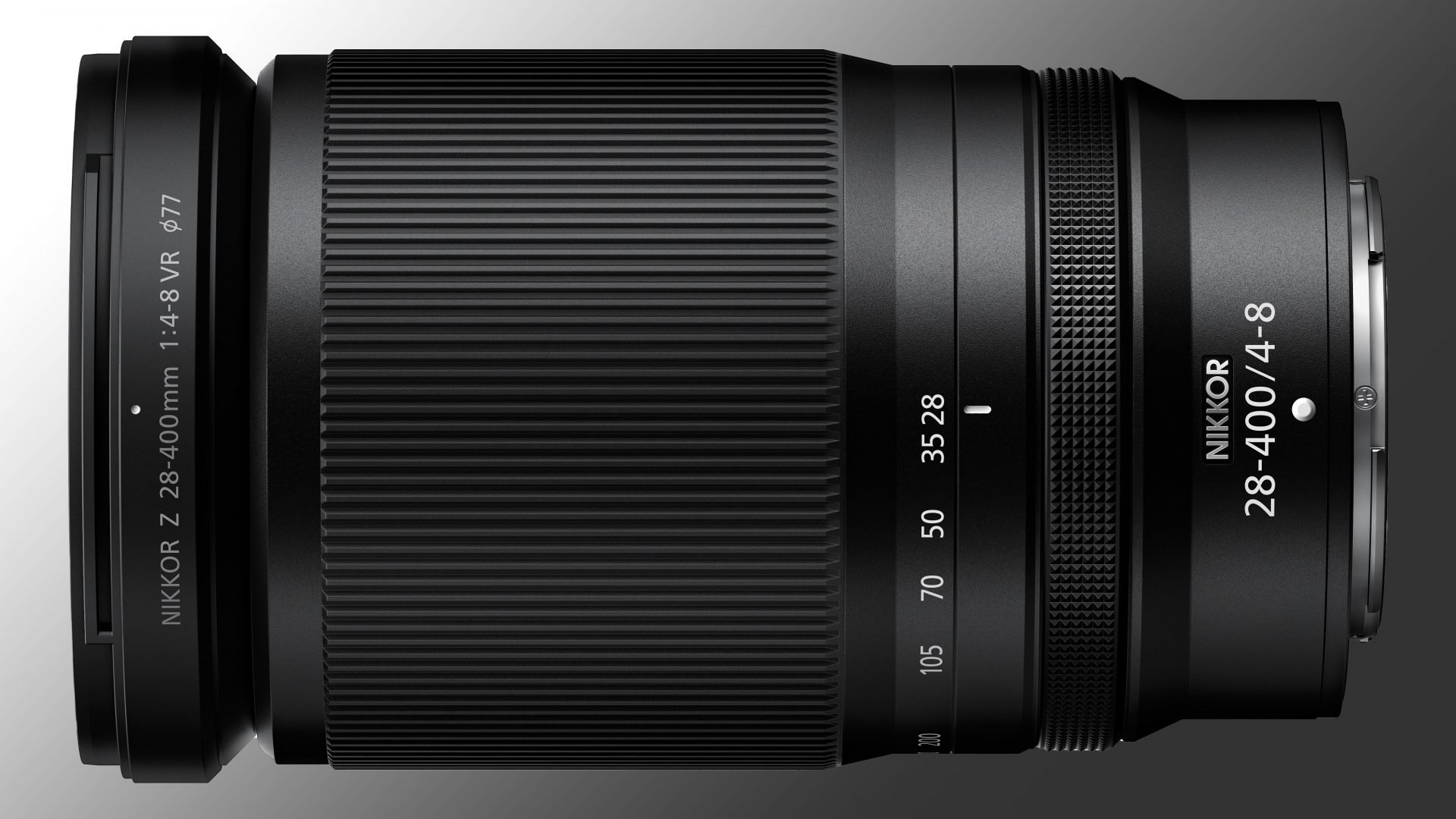
Buy it now!
Nikon z 28-400mm f4-8 vr review so far 28th march 2024 written by thomas.
The Z 28-400mm f4-8 VR boasts a huge 14.3x zoom range and is Nikon’s second super-zoom lens for Z-mount after the Z 24-200mm f4-6.3 VR. At only 725g weight and 142mm length the lens is easy to carry on extended trips. And with optical stabilization and a maximum magnification of 1:2.8 it should be a versatile lens for travel and nature photography. The lens becomes available end of March and sells for 1549 EUR / 1297 USD / 1399 GBP.
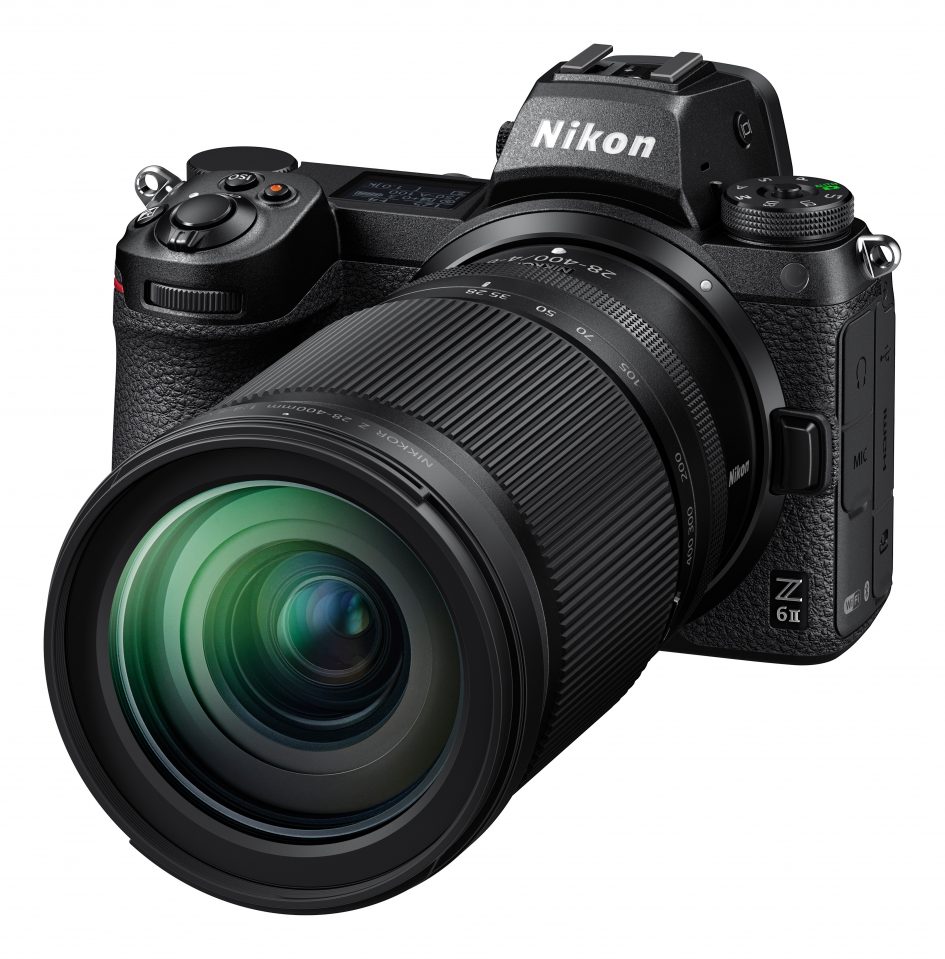
Facts and features
Let’s compare the new Nikon Z 28-400mm f4-8 VR (“Z 28-400mm” for short) to the Nikon Z 24-200mm f4-6.3 VR (“Z 24-200mm”) and Tamron 70-300mm f4.5-6.3 Di III (“Tamron 70-300mm”). I’ve also added some information about the Nikon Z 100-400mm f4.5-5.6 VR S (“Z 100-400mm”) which can be combined with the Nikon Z 24-120mm f4 S (“Z 24-200mm”) to cover a slightly larger zoom range. And there are also some comparisons with Nikon’s F-mount AF-S 28-300mm f3.5-5.6 G ED VR (“F 28-300mm”) from 2010 which is no longer produced but can still be used via FTZ adapter on Nikon’s Z cameras. As usual I’ve rated the features with a [+] (or [++]), when it’s better than average or even state of the art, a [0] if it’s standard or just average, and [-] if there’s a disadvantage.
Size (diameter x length): 85 x 142mm (3.3 x 5.6in.) plus approximately 28mm for the lens hood. The Z 24-200mm measures 77 x 114mm + 38mm lens hood, the Tamron 70-300mm is 77 x 150mm + 67mm lens hood, the Z 100-400mm is 98 x 222mm + 65mm lens hood. The older F 28-300mm is 83 x 115mm (plus 30mm for the FTZ adapter). All lenses in this comparison extend when zoomed to their longest focal length: The Z 28-400mm extends to a maximum total length (incl. lens hood) of 255mm, the Z 24-200 to 215mm, the Tamron 70-300mm to 277mm, the Z 100-400mm to 336mm. [+]
Weight: 725g (1.6 lb.) plus an estimated 30g for the lens hood. The Z 24-200mm is 565g + 22g lens hood. The Tamron 70-300mm is 577g + 62g lens hood. The Z 100-400 is 1355g + 63g lens hood. Combining this lens with the Z 24-120mm to cover the short end adds another 657g to your bag landing you at a total of 2.1kg – almost 3 times as heavy as the Z 28-400mm. But then the combo has on average a one stop brighter aperture. The F 28-300mm is 800g + lens hood + 133g for the FTZ adapter. [+]
Optics: The Nikon Z 28-400mm f4-8 VR has 21 optical elements in 15 groups including four special dispersion elements and three aspherical elements. But there’s no fluorine coating at the front nor Nikon’s special “ARNEO” anti-reflective coating which the Z 100-400mm and Z 24-120mm have. The Z 24-200mm has 19 elements in 12 groups, the Tamron 70-300mm is a 15/10 design, the Z 100-400mm is 25/20, the F 28-300mm is 19/14. [+]
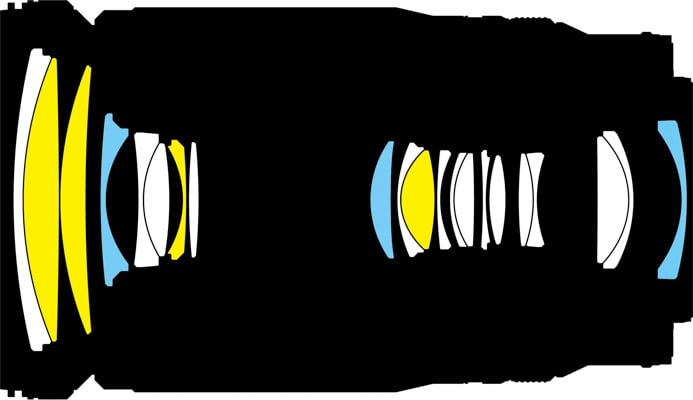
Minimum object distance is 0.2m (7.9in.) at 28mm focal length and 1.2m from 300mm focal length onwards. Maximum magnification is pretty good at 1:2.8. But it is achieved at 28mm focal length and results in a very short working distance of only 42mm. In my full review I’ll test which magnification can be achieved at longer focal lengths. The other lenses in this comparison all achieve their maximum magnification at their respective longest focal lengths resulting in much more practical working distances: The Z 24-200mm achieves 1:3.4 at a working distance of 0.45m, the Tamron 70-300mm achieves 1:4.6 at 1.2m, the Z 100-400mm achieves 1:2.5 at 0.68m. [+]
Focal ratio: If the Z 24-200mm is any indication (it achieves its slowest focal ratio of f6.3 already at 80mm focal length) I wouldn’t expect the Z 28-400mm to stay at f4.0 for long once you zoom in. More on this in my full review. [-]
Filter-thread: All lenses in this comparison use 77mm filters – except for the Z 24-200mm and the Tamron 70-300mm which use 67mm filters. [+]
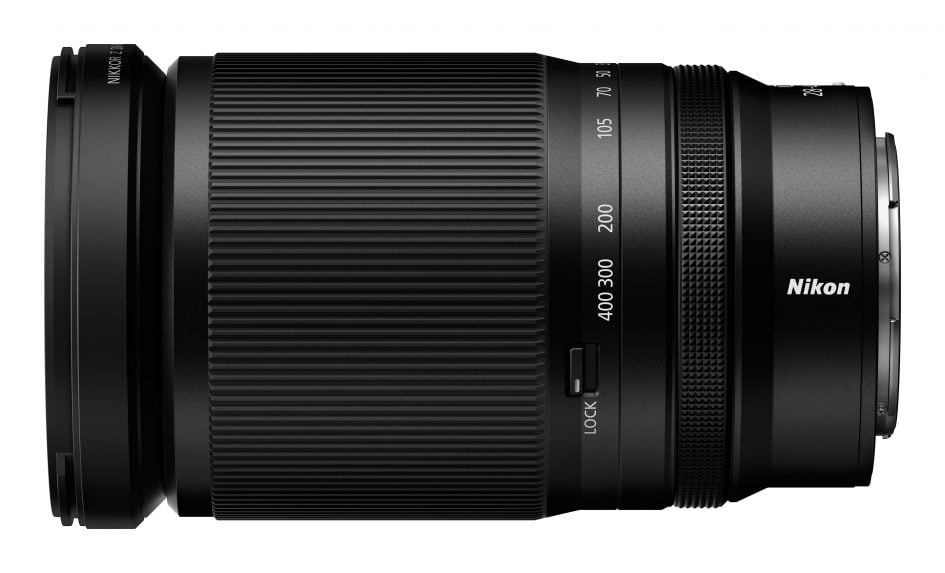
Image stabilization: The Z 28-400mm offers optical stabilization which works in conjunction with the body-based stabilization on Nikon’s full-frame Z cameras to achieve a claimed 5 stops of stabilization over 5 axes plus an additional 0.5 stop on camera bodies which support “Synchro-VR” (like Nikon Z6II, Z7II, Z8 and Z9). This is similar to the Z 24-200mm and Z 100-400mm. For the older F 28-300mm (on an FTZ-adapter) the Z cameras only add roll correction to pitch and yaw correction from the lens’s own image stabilization. The Z 24-120mm and Tamron 70-300mm solely rely on the sensor based stabilization of Nikon’s full-frame Z-mount bodies. [+]
Aperture ring and other control elements: The multi-function control ring of the Z 28-400mm (like the Z 24-200mm and Tamron 70-300mm) is located behind the zoom ring and can be assigned to operate the aperture, exposure compensation, ISO or focus. It automatically falls back to its customary focus control when the camera is switched to manual focus. The Z 28-400mm (like the Z 24-200mm) has a switch to lock the zoom at its shortest focal length but no lens function buttons or focus limiter. The Z 24-120mm and Z 100-400mm as well as the F 28-300mm have a dedicated focus ring. [+]
Autofocus: All lenses in this comparison offer autofocus with built-in focus drive. Manual-focus override is by simply turning the control ring – if MF is assigned to it. [+]
All lenses in this comparison cover full frame sensors or can equally be used on a cropped DX camera body. [+]
The Z 28-400mm comes with the usual flimsy pouch with no strings to pull it close. The lens hood is included and reversible for transport. [0]
Sealing: The Z 28-400mm is fully weather sealed like all Z-mount lenses in this comparison. [+]
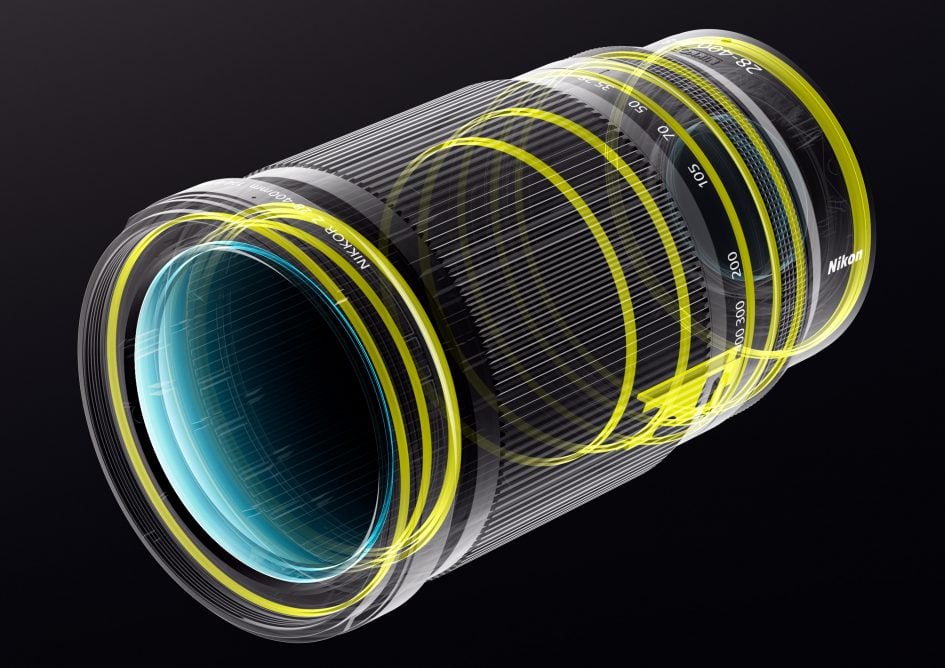
Price: The Nikon Z 28-400mm f4-8 VR costs 1549 EUR (incl. 19% VAT) / 1297 USD / 1399 GBP. The Nikon Z 24-200mm f4-6.3 VR currently sells for 864 EUR / 800 USD / 764 GBP, the Tamron 70-300mm f4.5-6.3 Di III is 600 EUR / 600 USD / 560 GBP, the Z 100-400mm f4.5-5.6 VR S is 2620 EUR / 2500 USD / 2500 GBP, the Z 24-120mm f4 S is 1150 EUR / 1100 USD / 1080 GBP. So the new Z 28-400mm is the cheapest way to reach 400mm focal length with a Z-mount lens and costs around 60% less than the combo of Z 24-120mm and Z 100-400mm. [+]
Use with teleconverters: None of the lenses in this comparison can be used with Nikon’s teleconverters for Z-mount – except for the Z 100-400mm. [+]
The score of 1[-]/1[0]/12[+] shows that the Nikon Z 28-400mm f4-8 VR is well featured: It is a compact and lightweight 14.3x zoom lens reaching 400mm focal length at an adequate prize. It’s fully weather sealed, can go really close, and has optical image stabilization. It’s major draw-back is the meagre focal ratio: It may start at f4.0 but I expect it to become darker real quick once you zoom in. And there might be the issue that 28mm is not wide enough for the scenery you’re trying to capture. Still, if the new lens produces decent image quality it should be a very interesting addition for customers looking for a versatile zoom lens. Combine it with the Z 14-30mm f4 S if you need to cover the (ultra-)wide end.
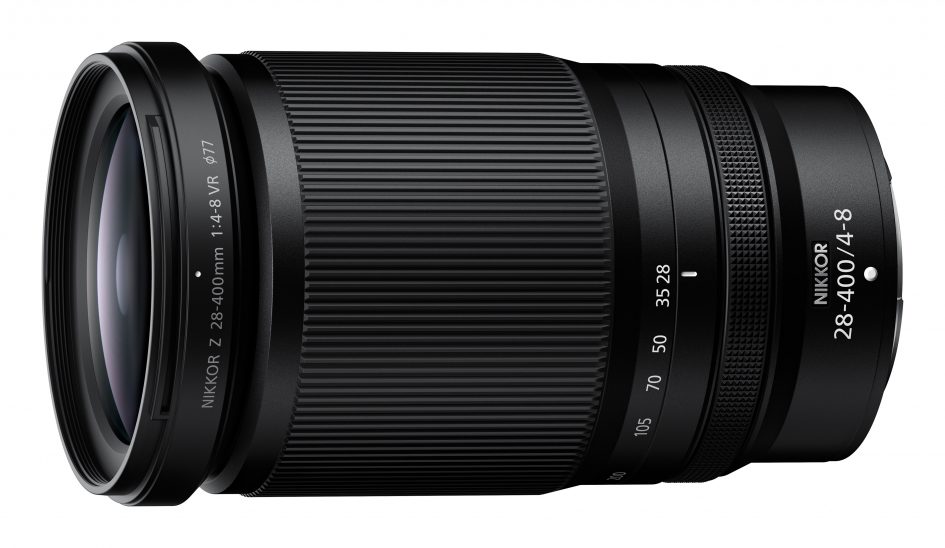
Above: Nikon Z 28-400mm f4-8 VR
With its 14.3x zoom-range the Z 28-400mm covers angles of view from 75 degrees to 6.2 degrees (diagonally) while the 24-200mm starts at 84 degrees. This is visibly wider at the short end as you can see below. And on the long end the difference between lenses reaching 200mm (12.3 degrees), 300mm (8.3 degrees), 400mm (6.2 degrees) is also significant. But at least you could crop an image shot at 300mm by 1.33x to achieve the same angle of view of the lens reaching 400mm albeit at a loss of 43% of the image pixels resulting in a 25MP image from a 45MP sensor. Which might well be sufficient for the intended purpose. But cropping 2x from a 200mm shot to achieve the same angle of view as the 400mm shot means throwing 75% of the pixels away resulting in an 11MP image. This starts to become borderline in quality if you want to view/print big.

Above: Simulation of Nikon Z 28-400mm f4-8 VR coverage on a full-frame camera at 28mm (left) and 400mm (right); shot with Z 24-200mm f4-6.3 VR and Z 100-400mm f4.5-5.6 VR S

Above: Nikon Z 24-200mm f4-6.3 VR coverage on a full-frame camera at 24mm (left) and 200mm (right)

Above: Tamron 70-300mm f4.5-6.3 Di III coverage on a full-frame camera at 70mm (left) and 300mm (right)

Above: Nikon Z 100-400mm f4.5-5.6 VR S coverage on a full-frame camera at 100mm (left) and 400mm (right)
Using the Z 28-400mm f4-8 VR on a cropped sensor results in a further reduction in angle of view equivalent to 42-600mm focal length.
So the Z 28-400mm f4-8 VR is very versatile with its broad zoom range easily covering situations which so far needed a two lens set. But starting at 28mm makes the short end a little restricted especially when you’re shooting with a cropped sensor body. But then you could cover the wider angles with the Z 14-30mm f4.0 S and get an enormous 29x zoom range with just two lenses.
Sharpness and contrast
Let’s have a look at the theoretical performance of the new Nikon Z 28-400mm f4-8 VR and compare it to the alternatives:
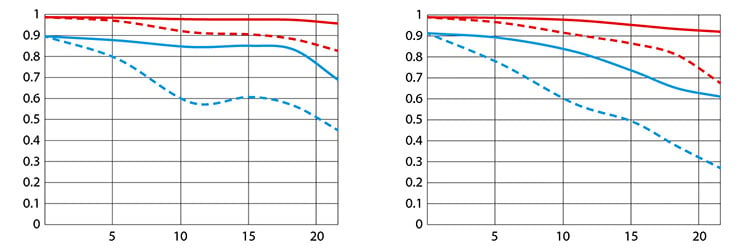
Above: Nikon Z 28-400mm f4-8 VR, 28mm f4.0 (left), 400mm f8.0 (right)
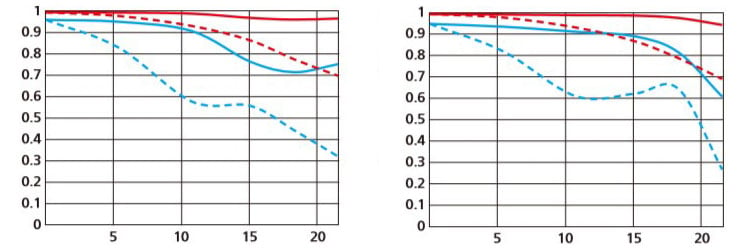
Above: Nikon Z 24-200mm f4-6.3 VR, 24mm f4.0 (left), 200mm f6.3 (right)
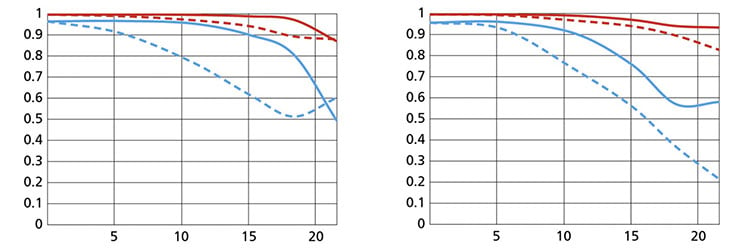
Above: Nikon Z 24-120mm f4 VR S, 24mm f4.0 (left), 120mm f4.0 (right)
Above: Nikon Z 100-400mm f4.5-5.6 VR, 100mm f4.5 (left), 400mm f5.6 (right)
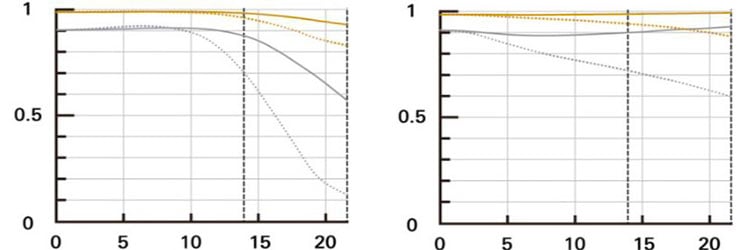
Above: Tamron 70-300mm f4.5-6.3 Di III, 70mm f4.5 (left), 300mm f6.3 (right)
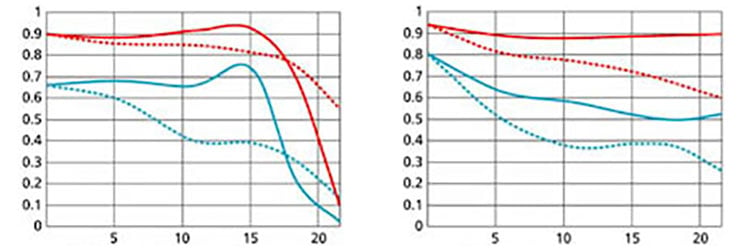
Above: Nikon AF-S 28-300mm f3.5-5.6 G ED VR, 28mm f3.5 (left), 300mm f5.6 (right)
These MTF charts show the computed lens-performance of lenses wide open without influence of diffraction at 10 line-pairs/mm (red/yellow) and 30 lp/mm (blue/grey). Higher values are better (more contrast) and the closer the dotted and solid lines are together the less contrast dependents on the orientation of the test-pattern (less astigmatism). The x-axis displays the distance from the optical axis (=center of the sensor) in mm.
From the charts the Nikon Z 28-400mm f4-8 VR should be so much better than its AF-S 28-300mm predecessor on F-mount. Which simply shows how far lens design has come in the last 14 years. Comparison with the Z 24-200mm from 2020 shows more subtle differences: The Z 24-200mm even seems to produce finer details up to 10mm image height. At 400mm focal length the Z 28-400mm almost holds up to the Z 100-400mm. But don’t forget: The Z 28-400mm is shown at f8.0 (without influence of diffraction) while the Z 100-400 is at f5.6. So the Z 100-400mm should perform better at the long end.
I’m curious to see how this theoretical performance translates into real life results in my test shots on a 45MP Nikon Z8. Check back soon for my full review.
Featured Reviews

Fujifilm INSTAX mini Link 2 review

Epson EcoTank ET-18100 review

Fujifilm INSTAX Link Wide review

Like my reviews? Buy me a coffee!
More Camera Labs
- Camera reviews
- Cameralabs Photography Podcast
Buyers’ Guide
- Best Point and Shoot camera 2023
- Best DSLR 2023
- Best waterproof camera 2022
- Best Fujifilm lenses 2023
- Best Micro Four Thirds Lenses 2023
- Best Sony lenses 2023
Manufacturers
- Fujifilm gear
- Olympus gear
- Panasonic gear
- Accessories
About Camera Labs
- About Gordon Laing
- Support Camera Labs
- Gordon’s In Camera book
- Buy a Cameralabs T-Shirt
- Photography eBooks
Follow Gordon Laing
All words, images, videos and layout, copyright 2005-2022 Gordon Laing. May not be used without permission. As an Amazon Associate I earn from qualifying purchases.
Website design by Coolgrey
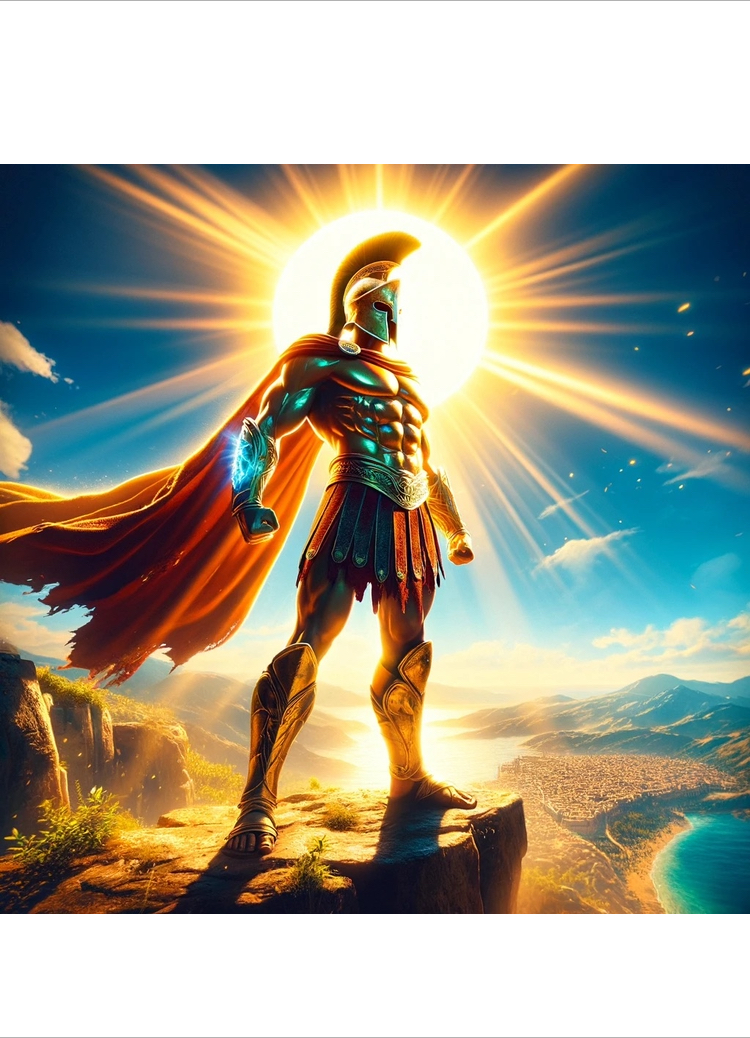
How to Shoot Street Photography with a 28mm Lens

Dear friend,
As of early 2017, my only camera is the Ricoh GR II, which has a fixed-focal 28mm lens.
I wanted to share my personal experiences shooting with a 28mm lens, after shooting with a 35mm lens for almost 6 years.
1. I still recommend 35mm for most street photographers

First of all, I still think that a 35mm “full-frame equivalent” focal length is ideal for most street photographers. Why? Apparently the human eye sees around a 40mm perspective. Shooting 35mm gives us a little more wideness than our natural perspective. I started off shooting street photography on a 50mm “full-frame equivalent” focal length (copying Henri Cartier-Bresson ), but I found that in today’s world, 50mm is just too tight and restrictive.
My theory is that the world and streets were less crowded back in the days of Henri Cartier-Bresson, so a 50mm suited him for most of his needs. And also when Henri Cartier-Bresson traveled to India (very crowded place) he shot almost everything on a 35mm lens.
Shooting with a 28mm lens on a point-and-shoot camera is practically the same as shooting 35mm on a camera with a viewfinder.
Well, when I’m shooting with a point and shoot camera, I extend my arms closer to my subject. Therefore I can get closer to my subject with a 28mm lens, simply by extending my arm.
However when I’m shooting with a camera with a viewfinder, I need to bring up the camera directly to my face. Therefore, I need to stand much closer to my subject when shooting street photography with a 35mm lens.
2. Why did I start shooting 28mm?

For a long time, I kept my Ricoh GR II’s function 2 button (fn2) to 28mm/35mm crop mode. Which means, every time I clicked the ‘fn2’ button, the camera would crop into a 35mm point-of-view.
I did this because I was so used to the 35mm focal length, and found it a lot more natural than shooting 28mm (the native focal length for the Ricoh GR II).
However I started to notice that the 35mm cropped focal length was too close for most of my photos. I wasn’t quite sure why this was the case. And once again I figured it out— it is because I extended my arm when shooting street photography.
Therefore I started to embrace the normal 28mm focal length, and I’ve been having a lot of fun.
3. The challenge of shooting 28mm in street photography

To start off, the 28mm is more challenging in street photography. Because you need to get closer to your subject, in order to fill the frame, and in order for you to have less clutter on the edges of the frame.

I know for myself, I love a lot of the street photos from history shot on a wide-angle lens (around a 28mm lens). I love the wide-angle photos shot by Josef Koudelka in his ‘ Gypsies ’ book (shot on a film SLR and a 25mm lens), as well as the edgy dynamic street photos of Garry Winogrand (who shot on a 28mm lens). I am also a big fan of Charlie Kirk’s photos, who shot all his work on a film rangefinder and 28mm lens.
I think one of the best ways to avoid boredom in your photography is to constantly challenge yourself.
When I first started to shoot 28mm — it was very unnatural. I got a lot of distortion on the edges of the frame, which I wasn’t used to.

Not only that, but 28mm forced me to shoot really close to my subjects. I mean, really close. All of my street portraits as of late have been shot at 28mm, in macro mode on the Ricoh GR II, in P mode, with the flash. The camera was probably 20 centimeters away from the subjects when I shot those photos.
For typical ‘candid’ street photography, I recommend shooting at least one arm length away from your subject, to have a dynamic, edgy, and interesting street photograph (at 28mm). That is usually .7 meters (also happens to be the minimum-focusing distance of the Leica and many rangefinders).
4. 28mm gives you more depth in your street photography

One of the biggest benefits of shooting with a 28mm lens is that you get more depth of field. Meaning, more of your photos are sharp and in-focus.
I think bokeh (shooting wide-open, having the blurry background) is one of the most overrated things in photography. It doesn’t take skill to take a photograph at f/1.4 and to simply blur out the background. I think a great street photograph should have an interesting subject and an interesting background. Often (myself included) over-emphasize the subject in street photography, and disregard the background. Shooting at f/8-f/16 allows us to have both the subject and background in-focus.
Shooting at f/8 with a 28mm lens means almost everything is in focus. Which is more challenging and difficult. Because if you have a cluttered or distracting background, your photos won’t work.
Therefore it is a constant dance between having a clear foreground, subject, while having an interesting (yet not over-cluttered) background.
5. Shoot head-on with a 28mm lens in street photography

Furthermore, shooting with a 28mm lens means that you have to shoot quite head-on to your subjects. If you shoot at 28mm from the side, the photos lack intimacy, and a dynamic energy. Therefore if you are shooting candid street photography (without permission) with a 28mm lens— essentially you need to almost bump into people (head on) if you want to make dynamic images.
6. Pre-focus to 1.2 meters

If you are going to pre-focus and shoot street photography with a 28mm lens, I recommend 1.2 meters (about 2 arm lengths away) being a good default distance. And if you shoot in aperture-priority mode at f/8, at ISO 1600, you are pretty much guaranteed to get most of your frame sharp and in-focus.
As for me, on the Ricoh GR II (to keep things simple) I just shoot in “P” mode (program mode, which automatically chooses your aperture and shutter speed), use center-point autofocus, and ISO 1600. Because the Ricoh GR II has a 28mm focal length, almost everything is always in focus. And because it is an APS-C crop sensor, I get 1.6x the depth of field (compared to a full-frame camera).
7. But doesn’t 28mm make people look ugly?

For me, I am not interested in taking flattering, model/studio portraits of people, with ‘creamy bokeh’ in the background, for people to upload to Facebook. Rather, I am looking to make dynamic, engaging, and unusual photos that show the soul of my subject.
I’ve found that 28mm exaggerates facial features, and body parts. And I feel that shows more personality and soul in my subjects, than just shooting my subject with a DSLR and a telephoto lens, shot wide-open.
8. Shoot from a low angle with a 28mm lens to achieve the ‘superman effect’

I also like shooting with a 28mm lens from a low angle, because it makes people look ‘larger than life.’ They call this the ‘superman effect’ — that it makes people look taller, and their legs longer. This is what makes Tom Cruise (who is very short) look very tall in movies. And it also makes women’s legs look longer and sexier (if you’re shooting model photography).

Conversely — if you shoot with a 28mm lens or a wide-angle lens from a very high perspective looking down, you make people look smaller than usual. A good example is to see Eamon Doyle’s work.
9. Focus on the edges of your frame

A practical tip of shooting 28mm — try to get clean edges in your frame. Don’t focus on framing your photos by looking in the center of the frame. Rather, be obsessed with having good composition on the edges of your frame.
Don’t seek to have random poles, white garbage bags, or distracting faces on the edges of your frame.
Not only that, but if you’re photographing shapes like circles, rectangles, square, or triangles — make sure the edges of your frame don’t cut off the edges of the shapes.
10. ‘Work the scene’ by shooting a lot of the same scene

Another tip — when shooting street photography with a 28mm lens, you’re not sure what you’re going to get until after you’ve shot the photograph. Therefore, learn how to ‘work the scene’ and take a lot of photos of your subject.
Shoot crouching down, taking a step left, a step right. Take a step closer. Tippy-toe and shoot from a higher angle. Alternate between horizontal and vertical. ‘Work the scene’, and then when you go home, choose your best photos.
11. Get closer

With a 28mm lens, you need to get really close to make good street photographs. Therefore, when in doubt, take a step closer.
I have a practice of not cropping my photos once I’ve shot them. This practice has helped me build discipline to make better compositions and framing.
So when I’m shooting street photography with a 28mm lens, I tend to still be too far away. Therefore I will take a photo, take a step closer, take a photo, take a step closer, and so forth — until I can’t get any closer.
12. Add layers

One of the fun things about the 28mm lens is the ability for you to add more layers in your photographs.
If you want more layered street photos with the 28mm, I recommend pre-focusing to the thing furthest in the background. For example, pre-focus your camera to about 5 meters, and then intentionally try to add stuff in the foreground, to add more depth to your photos.
13. Look for leading lines

Also when shooting street photography on the 28mm lens, crouch down low, and put your subject in-between skyscrapers or buildings, to give them good leading lines.
Leading lines act like arrows, that point directly to your subject. Which makes it easier for your viewers to identify your subject. Not only that, but it emphasizes the form and composition of your street photos.
14. Subtract from the frame

Once again, the biggest issue you will have with 28mm in street photography is having too much clutter and information in the frame.

You need to think of yourself like a sculptor. A sculptor makes a statue by subtracting from the stone.
Similarly as a street photographer, you want to always subtract from your frame. When you’re shooting, actively cut away from the frame. Think of how you can continue to cut away from the frame, until you are left only with what is essential.
15. Don’t always center your subject

I tend to like to center my subjects in my street photos; but know that if you want more dynamic framing, you shouldn’t center your subject.

By putting your subject to the left or right side of the frame, you create more dynamic frames. Not only that, but the benefit of shooting street photography on a 28mm lens is that you don’t have to point your camera directly at someone to have them be included in the frame.
17. Avoid eye contact

One technique I like to do when shooting with the 28mm lens is to take photos of someone, keep taking photos, while getting closer, and avoiding eye contact. This is one of the best ways to prevent people from thinking you took their photo.
And because the 28mm lens is so wide, your subject will be included in the frame even though you don’t point the camera directly at them.
18. 28mm lenses are usually cheaper, lighter, and smaller

One of the good thing about 28mm lenses is that they tend to be cheaper than their 35mm and 50mm counter-parts.
Another benefit of the 28mm lens is that it tends to be smaller, more compact, and lighter. For example, the 28mm lens allows the Ricoh GR II to be so small and compact. Similarly, the Fujiflm x70 also has a 28mm f/2.8 lens, which fits the Fujifilm x100T sensor in a tiny body.
Even the Leica Q is able to achieve having a full-frame sensor in a compact body because of the 28mm focal length.
19. Don’t buy expensive 28mm lenses

A practical piece of advice — if you want to shoot street photography on a 28mm lens, don’t buy expensive 28mm lenses that shoot at f/1.4, f/1.8, or f/2. These “fast” 28mm lenses tend to be too big and too heavy.

The same goes with any lens for street photography. F/2.8 is more than enough for any street photography lens. Because most of the time when we’re shooting street photography, we are going to be shooting (mostly) f/8-f/16 anyways.
20. There is no ‘best’ lens for street photography

There is no best street photography lens. Each person has their own style and vision.
Some of us prefer 35mm, some prefer 28mm, and some prefer 50mm, or some prefer 200mm.

Not every shoe fits every foot. And not every lens fits every photographer.
My practical suggestion is whatever focal length you use, try to stick with it for at least a year. This will help you discover the true essence of each focal length. You will learn how to compose and frame much better, without bringing up your camera to your eye. You will internalize the focal length, and become a better photographer— because you can compose intuitively.
Always, Eric
Learn more: Street Photography 101 >

The Phoblographer may receive affiliate compensation for products purchased using links in this article. For more information, please visit our Disclaimers page .
28mm vs 35mm Lens Battle: The Great Debate for Photographers
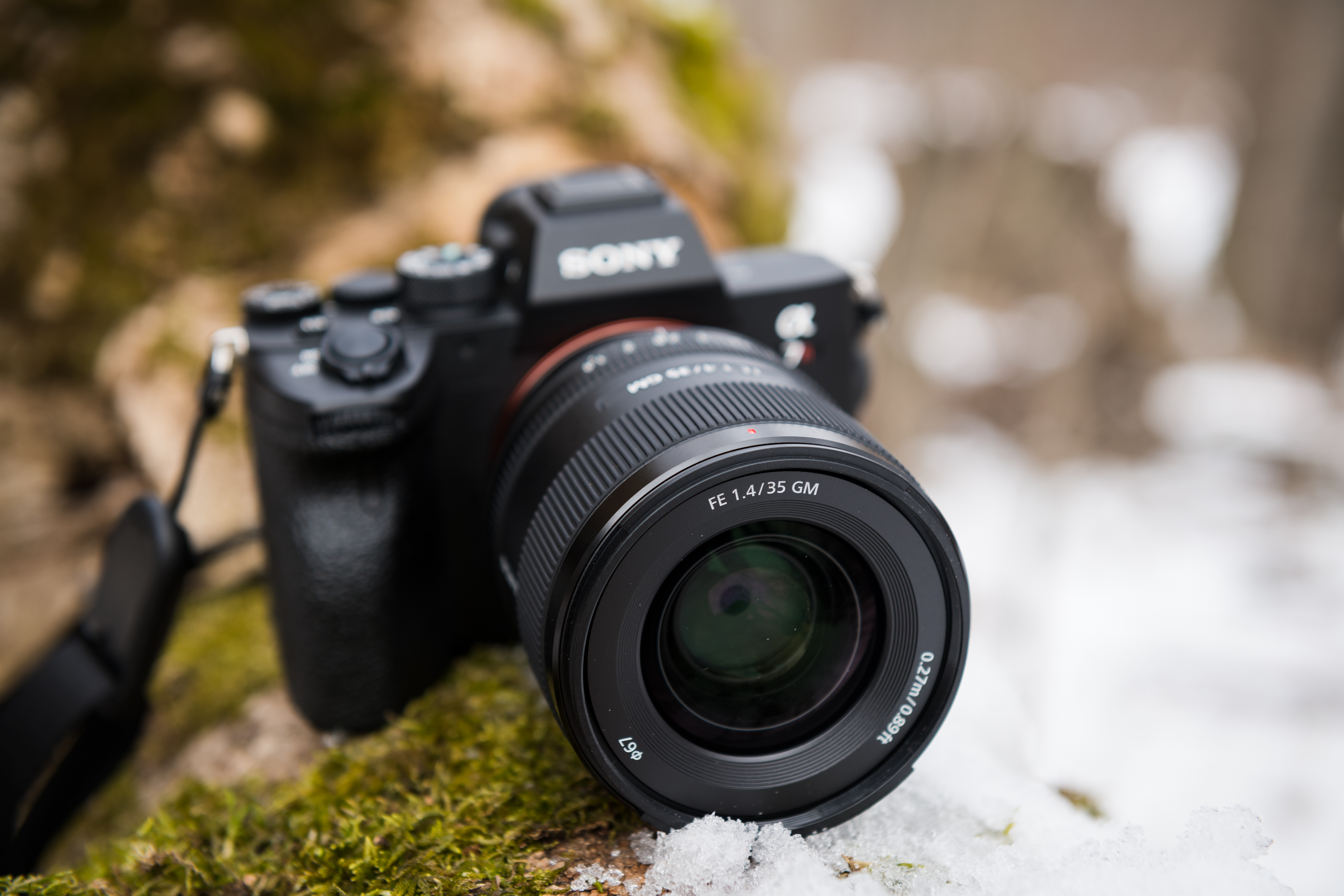
The debate of 28mm vs 35mm lens is often confusing for lots of folks.
The 28mm and 35mm lens focal lengths are oddly competitive. The 35mm focal length often wins for most who say they see the world this way. But some of us also see in 28mm. So for newer shooters, the decision can be a bit difficult. The best thing to do is to try both. Ideally, get a kit zoom lens and shoot with both focal lengths for a while. Then from there, pick the best one for you. We’re going to look at a few genres and tell you which one is better in our opinion. So let’s dive into the 28mm vs 35mm lens battle!
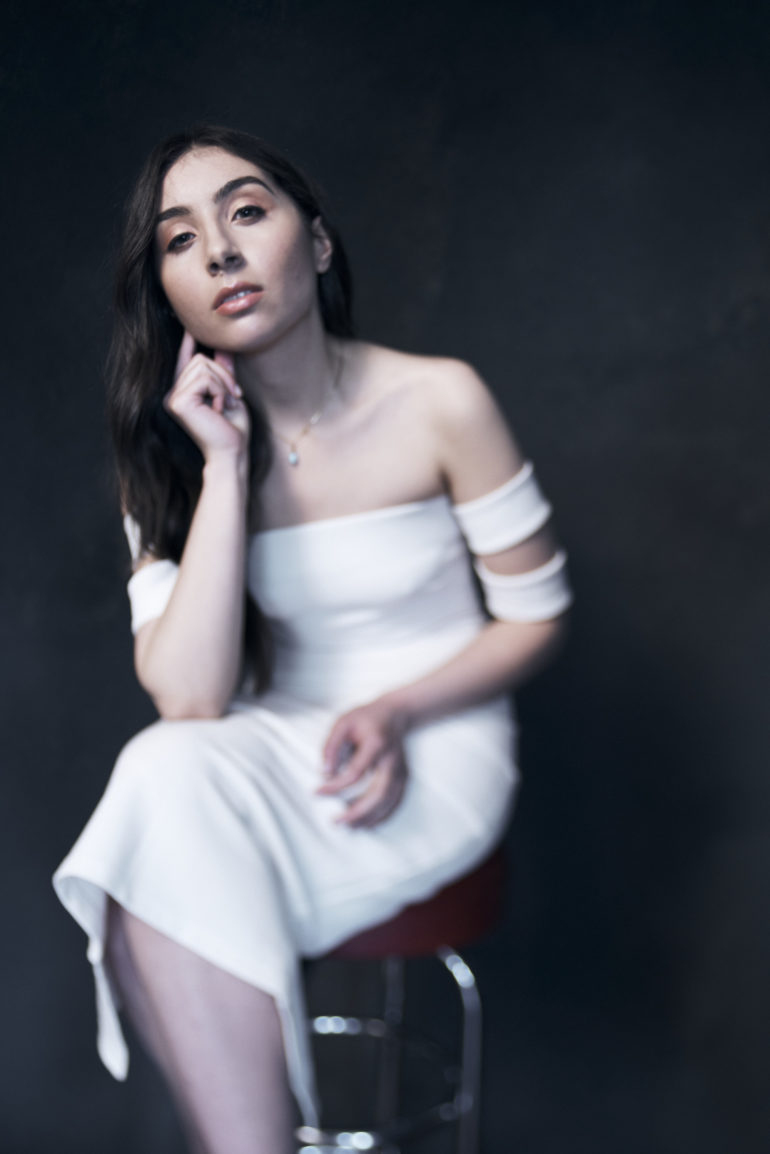
The issue with portraiture has to do with distortion. Typically we’d embrace it, but it can make folks look pretty awful. So you need to be tactful. No one likes having an elongated or larger nose. And no one likes having a head that looks large. With that said, a 35mm lens is typically easier to work with. (We’re talking about a proper 35mm and not the field of view equivalent.) A lens like this can make people look great, just don’t shoot up close. Instead, go for something wider than half of their body. Also try to keep people within the center of the frame. Ideally, use this for environmental portraits.
Our Choice: 35mm
Street Photography
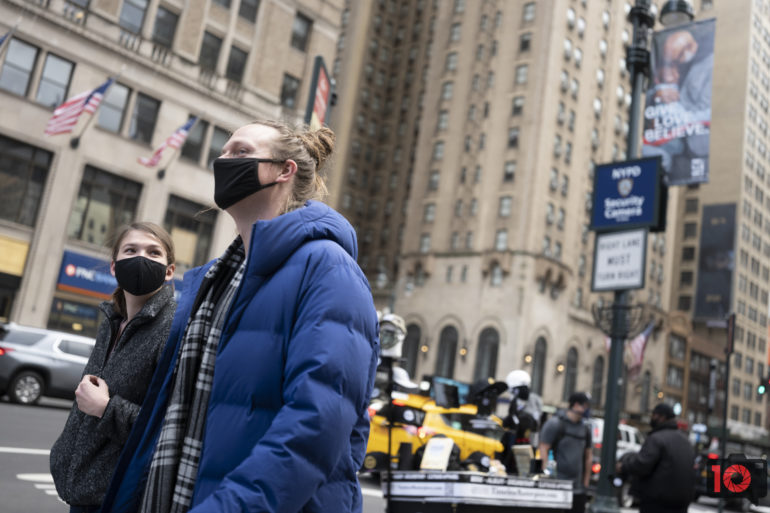
The old adage is f8 and be there. And with street photography, we’re pretty torn here. There are lots of times where we’ve enjoyed the 28mm lens. But there are also lots of times where we preferred the 35mm lens . 35mm lets you have a bit more distance between you and a subject. I think that’s necessary now. The old guard who said you should get close to your subject didn’t have to deal with COVID-19. And after a while, all the images start to look the same. Either way, go with a longer focal length. In the case of 28mm vs 35mm, go for the 35mm lens.
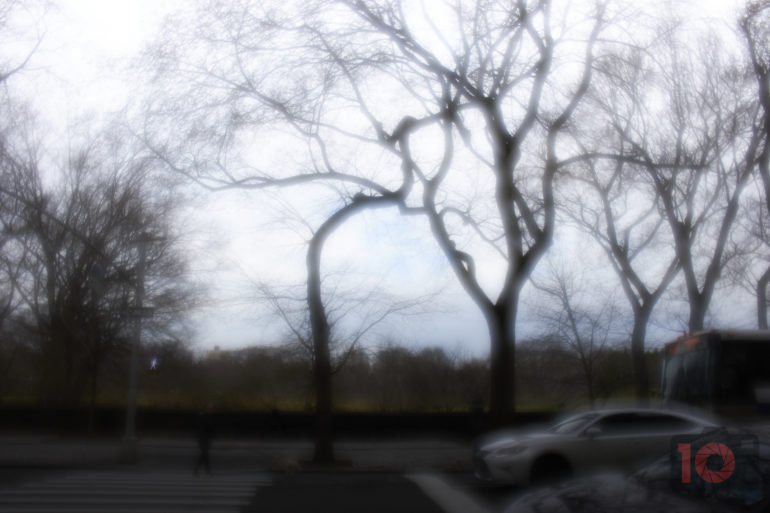
The thing about landscapes and cityscapes is that any lens can work. Capturing a vast scene is easy to do with a wider lens. Essentially, you can zoom with your feet. Longer telephoto lenses let you really focus in on abstract details. But generally speaking, the wider your focal length, the more potential you have. I’ve never gone wrong with either lens. However, I’ve run into situations where I needed to be wider. And generally speaking, wider is better. In the battle of 28mm vs 35mm lenses, it’s better to have the extra millimeters and not need it.
Our Choice: 28mm
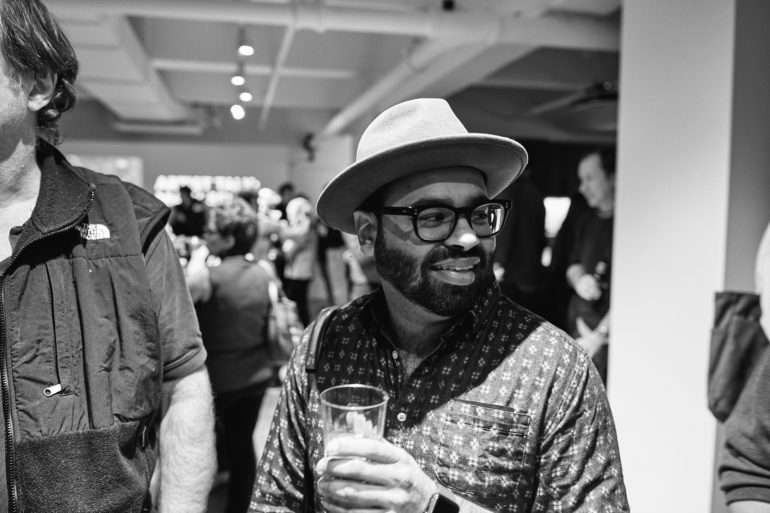
The candid shot is a tough genre. Personally speaking, I think having a sense of environment is very important. For that reason, I choose wider focal lengths. If you go to a party, a 28mm lens might be a better choice. You’re going to be packed in anyway. Since you’re that close, you should get more of the environment and what’s happening. If you were using a 24-70mm lens, you’d probably stay at the wider end. So, with candid shooting, 28mm is the best thing.

Passing Thru Travel
Capture the World in 2024 – 12 Expert Tips for Travel Photography Essentials and Techniques!
Posted: February 29, 2024 | Last updated: February 29, 2024

Travel photography is about telling a story, preserving memories, and seeing the world through a different lens. Whether you’re a professional photographer or a passionate amateur, understanding the right gear and techniques can elevate your travel photography. This guide will explore essential equipment and practical tips to help you capture stunning photographs embodying your spirit of travel.
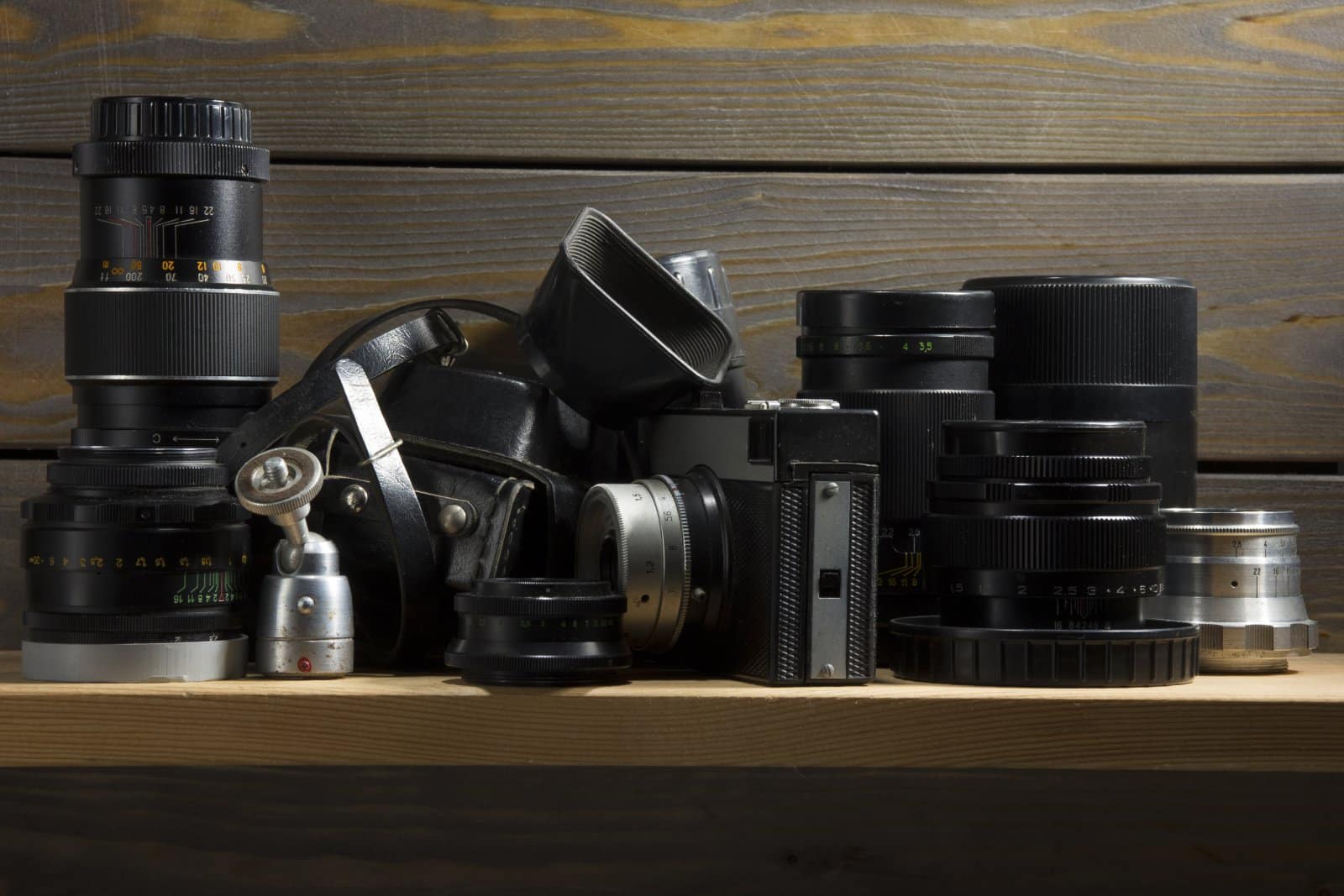
1. Choosing the Right Camera
Selecting the right camera is the first step in travel photography. For professionals, a DSLR or a mirrorless camera offers versatility and high-quality images. These cameras provide manual control over settings like aperture, shutter speed, and ISO, allowing for more creative freedom. Compact point-and-shoot cameras or advanced smartphones can suffice for casual photographers or those with space constraints.
They offer convenience and increasingly high-quality results. Consider factors like weight, size, durability, and functionality when choosing your camera. Remember, the best camera is one that fits your travel style and photography needs.
Insider’s Tip: Invest in a good quality camera bag with padding to protect your equipment during travels.
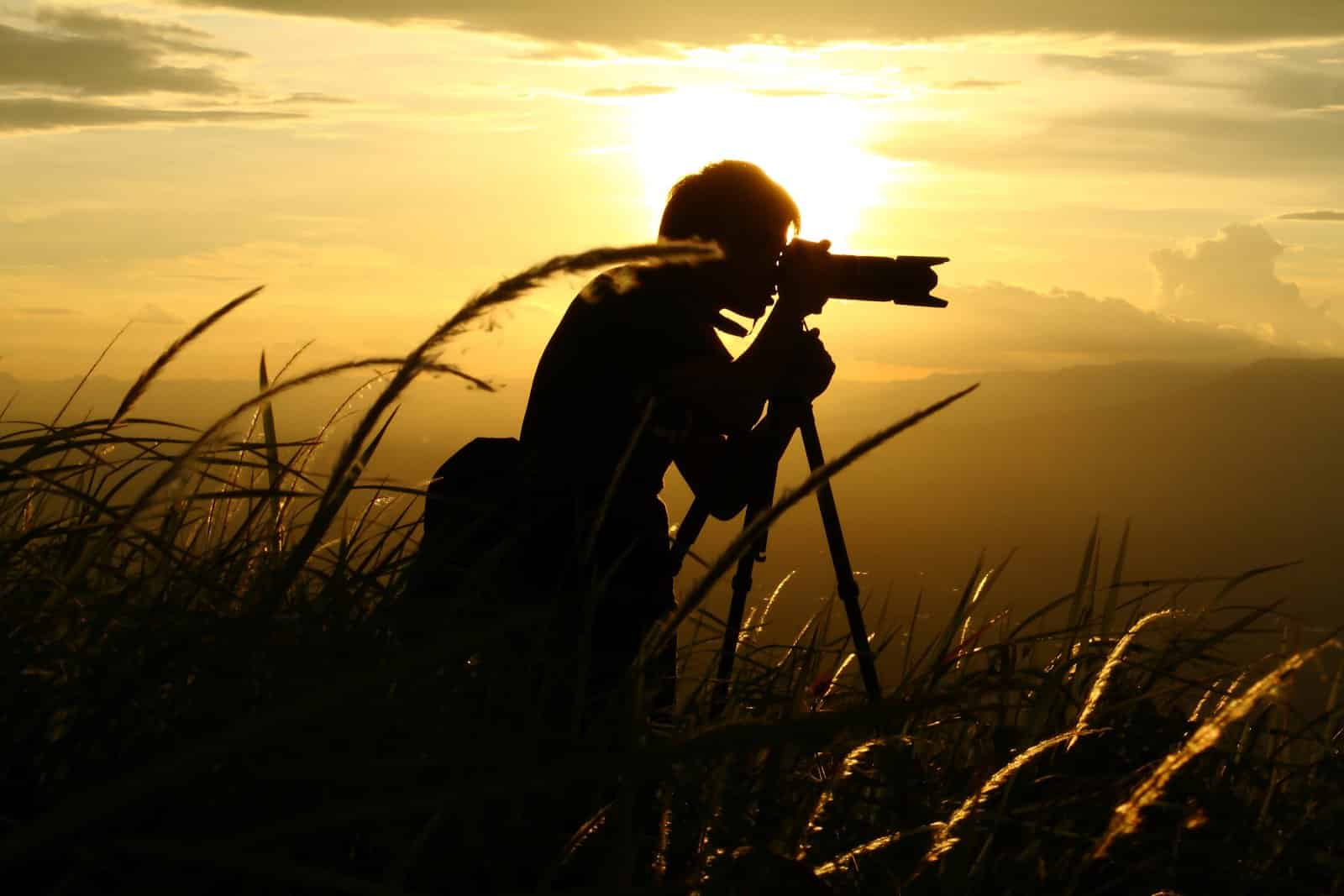
2. Understanding Lighting
Mastering lighting is crucial in travel photography. The best natural light is typically during the golden hours — shortly after sunrise or before sunset—when the light is soft and warm. Harsh midday sun can create strong shadows and overexposed spots.
Learn to work with available light by adjusting camera settings or using techniques like backlighting to create dramatic effects. In low-light conditions, a tripod can be invaluable to stabilize your shot and avoid blurriness.
Insider’s Tip: Use a reflector or even a simple white sheet to bounce light onto your subject for better illumination.
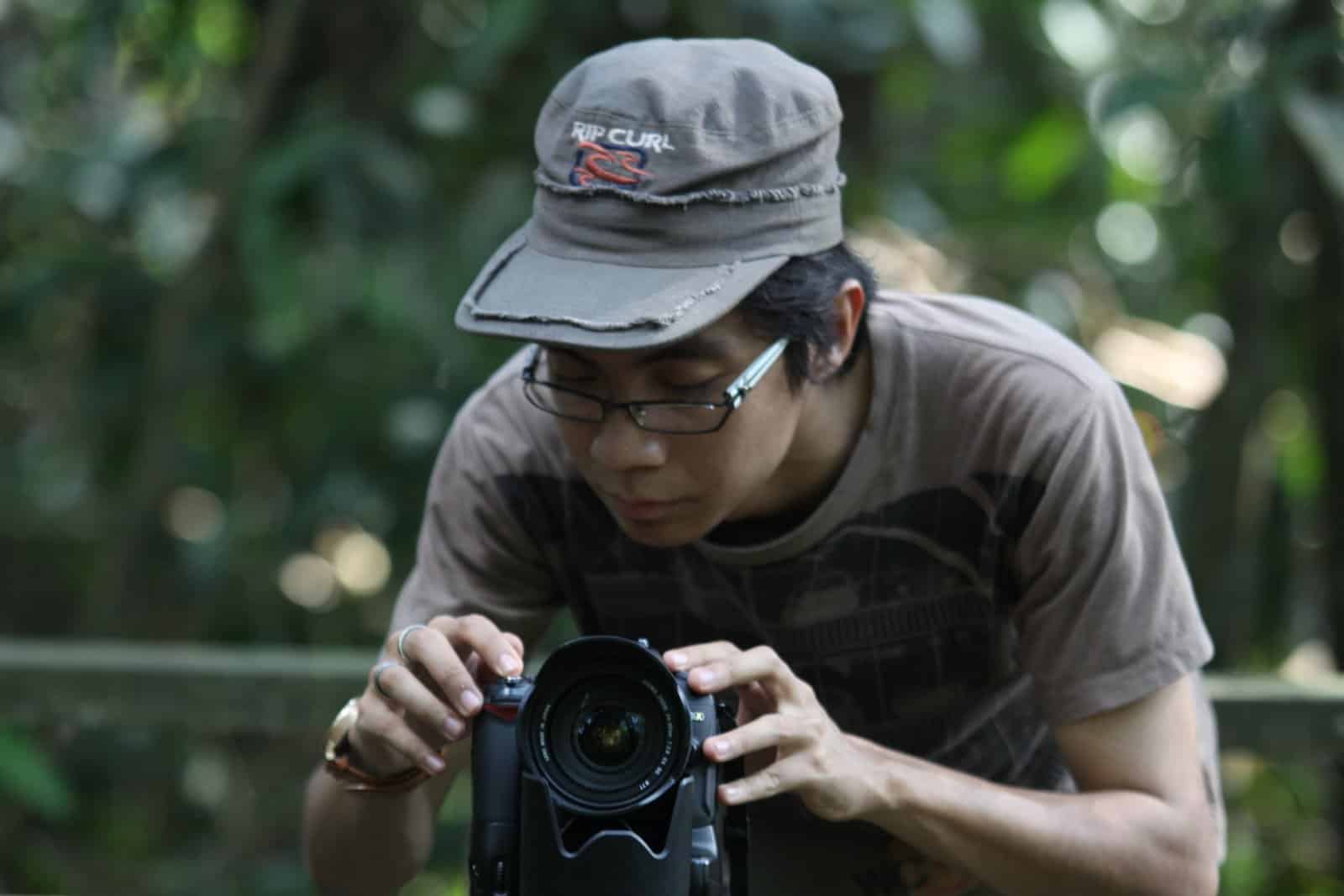
3. Composition and Perspective
Composition is key to creating visually appealing photographs. Familiarize yourself with basic rules like the rule of thirds, leading lines, and framing. Experiment with different angles and perspectives to find unique ways to capture a scene.
Don’t be afraid to play with symmetry or break conventional rules for a more dynamic composition. Pay attention to your foreground and background to ensure they complement rather than distract from your subject.
Insider’s Tip: Sometimes, stepping closer to your subject or changing your vantage point can drastically improve your composition.
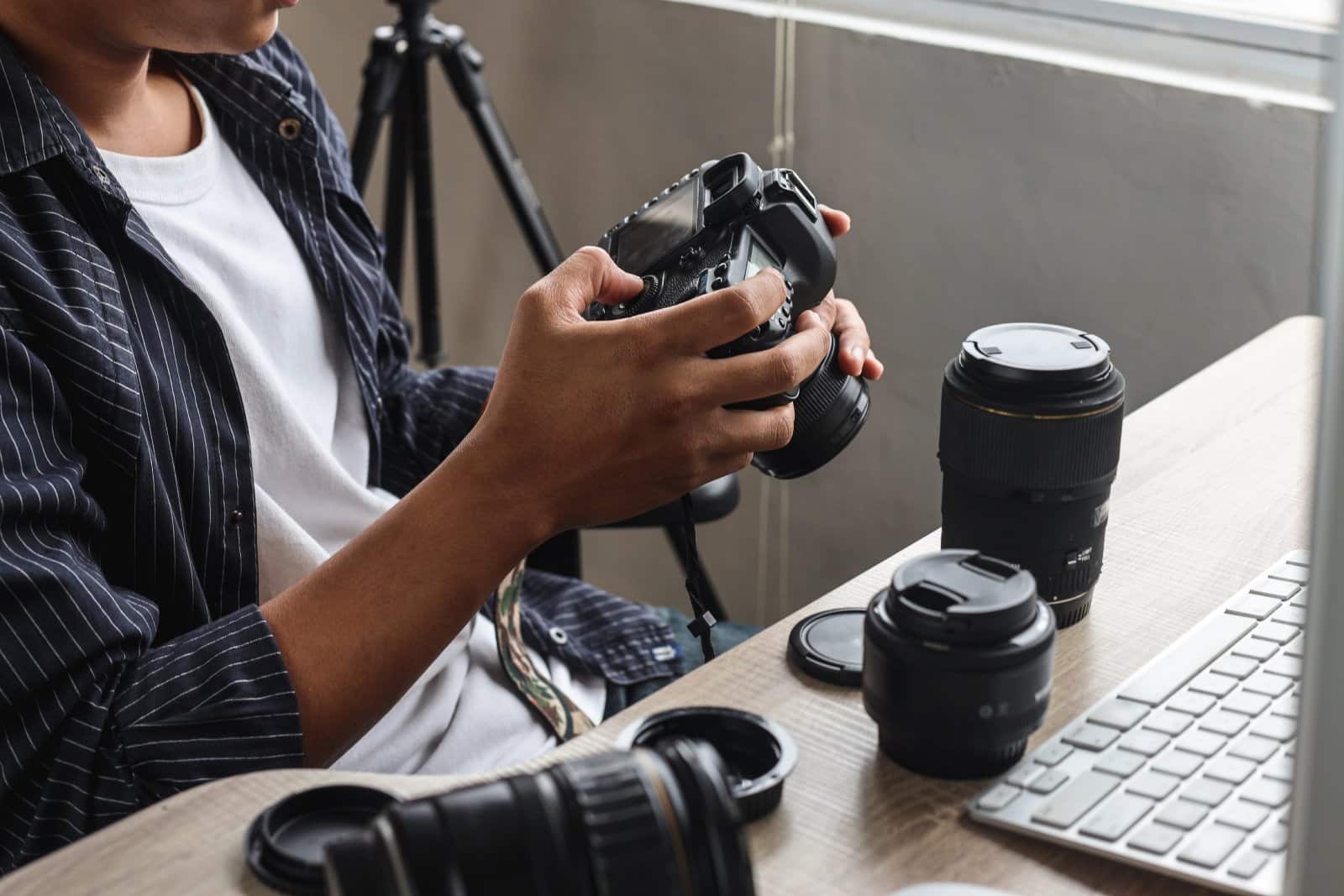
4. Lens Selection
The lenses you choose can greatly impact the style and quality of your photographs. A versatile zoom lens is practical for travel, covering a range of focal lengths without switching lenses frequently. With their fixed focal length, prime lenses offer superior image quality and wider apertures, ideal for portraits and low-light photography. Consider the types of subjects you’ll be shooting most often to determine the best lenses for your travel kit.
Insider’s Tip: A wide-angle lens is excellent for landscapes and architecture, while a telephoto lens is ideal for capturing distant subjects like wildlife.
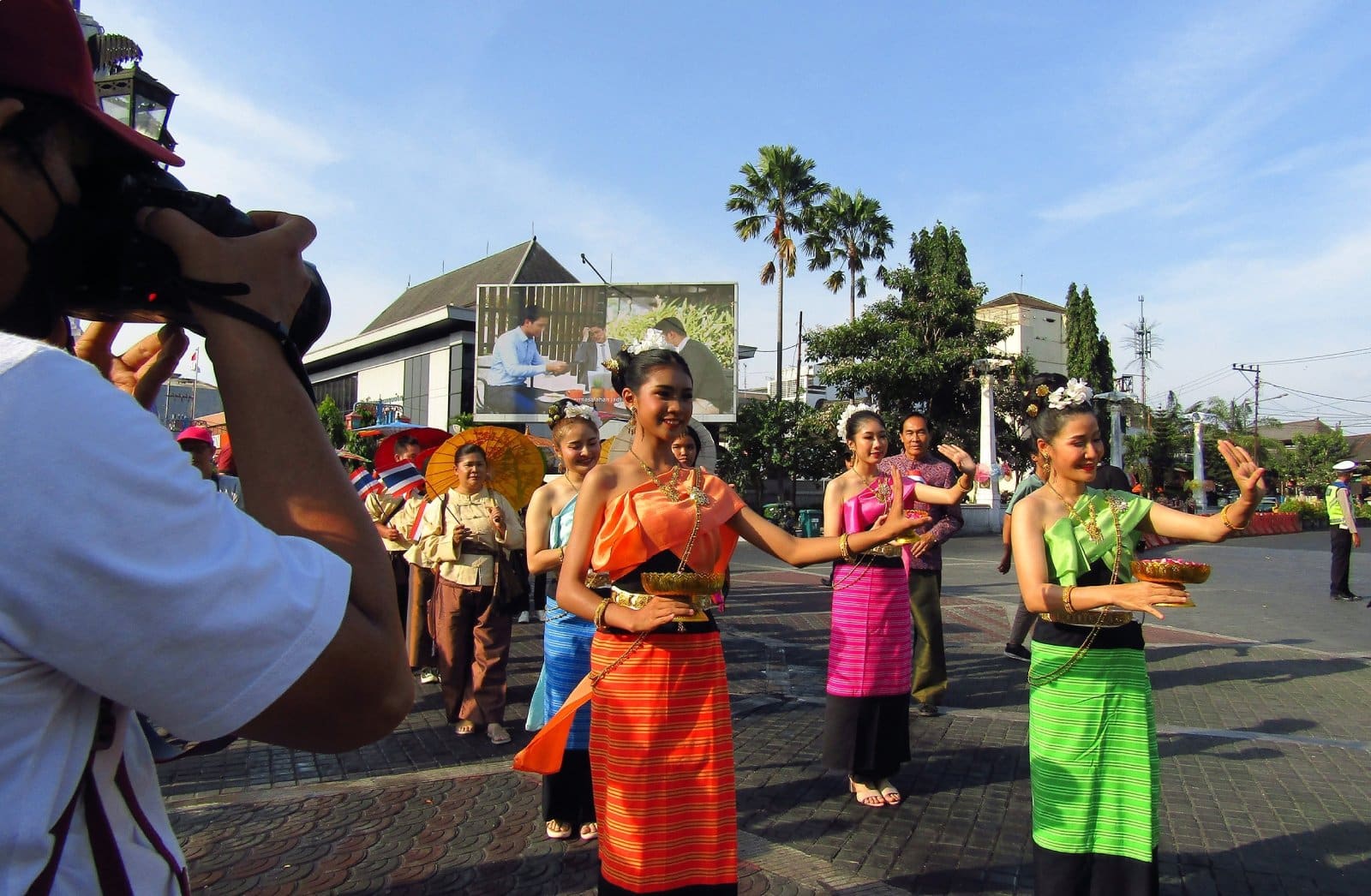
5. Capturing Local Culture
Travel photography offers a fantastic opportunity to capture the essence of local cultures. Respect and sensitivity are key when photographing people. Always ask for permission before taking someone’s photo. Try to capture candid moments that reflect the everyday life and traditions of the place.
Local markets, streets, festivals, and events are great for this type of photography. Engage with locals to understand their story, which can add depth and context to your photographs.
Insider’s Tip: Spend time in one location to observe and understand the rhythm of life there, which can lead to more meaningful photographs.
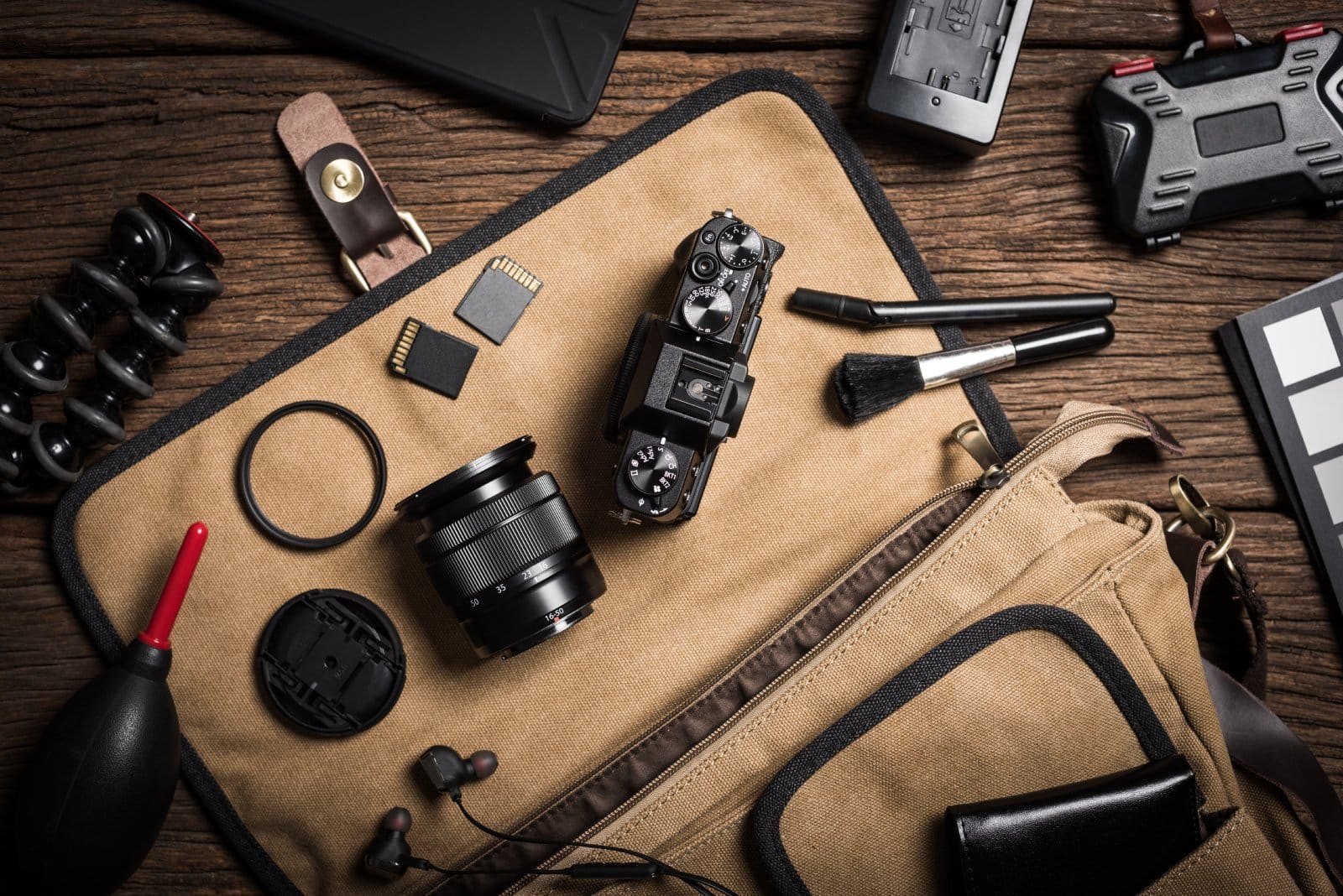
6. Dealing with Different Climates and Environments
Different climates and environments pose various challenges for photography. Protect your gear with waterproof cases or bags in humid or rainy conditions. Keep your camera and lenses clean and protected in dusty or sandy environments like beaches or deserts.
Cold weather can drain your batteries faster, so keep spares in a warm pocket. Adapt your camera settings to suit the environment, such as a faster shutter speed for windy conditions or a polarizing filter for bright snowscapes.
Insider’s Tip: In challenging environments, taking extra precautions with your gear can save you from costly repairs or damage.
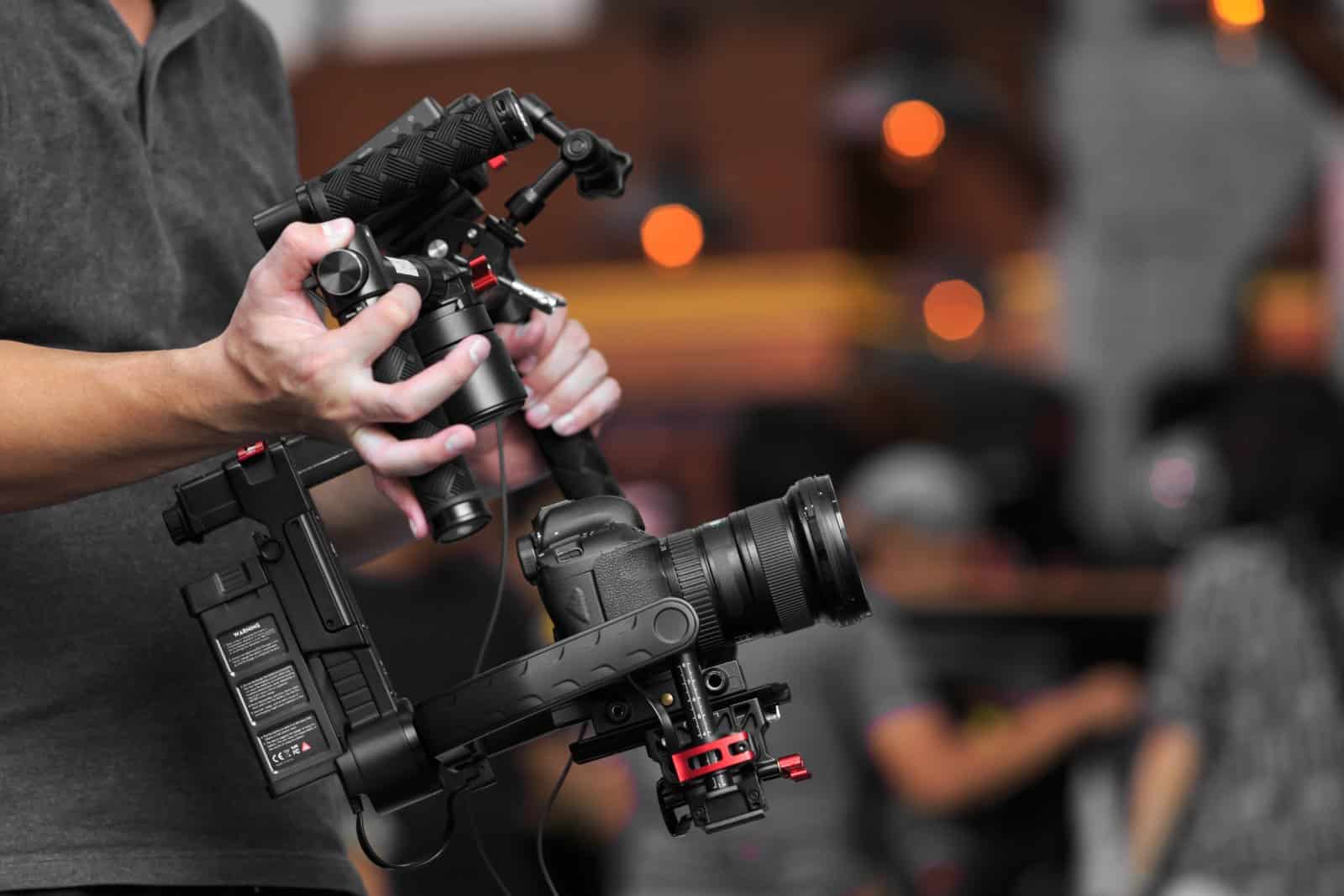
7. Travel Tripods and Stabilizers
A tripod or stabilizer can be crucial for certain types of travel photography. They’re essential for long exposures, time-lapses, or shooting in low-light conditions. For travel, consider lightweight and compact tripods that are easy to carry around. A stabilizer or gimbal for video shooting can also be beneficial if you capture moving subjects or shoot while in motion.
Insider’s Tip: Some compact tripods double as monopods, offering greater flexibility when on the move.
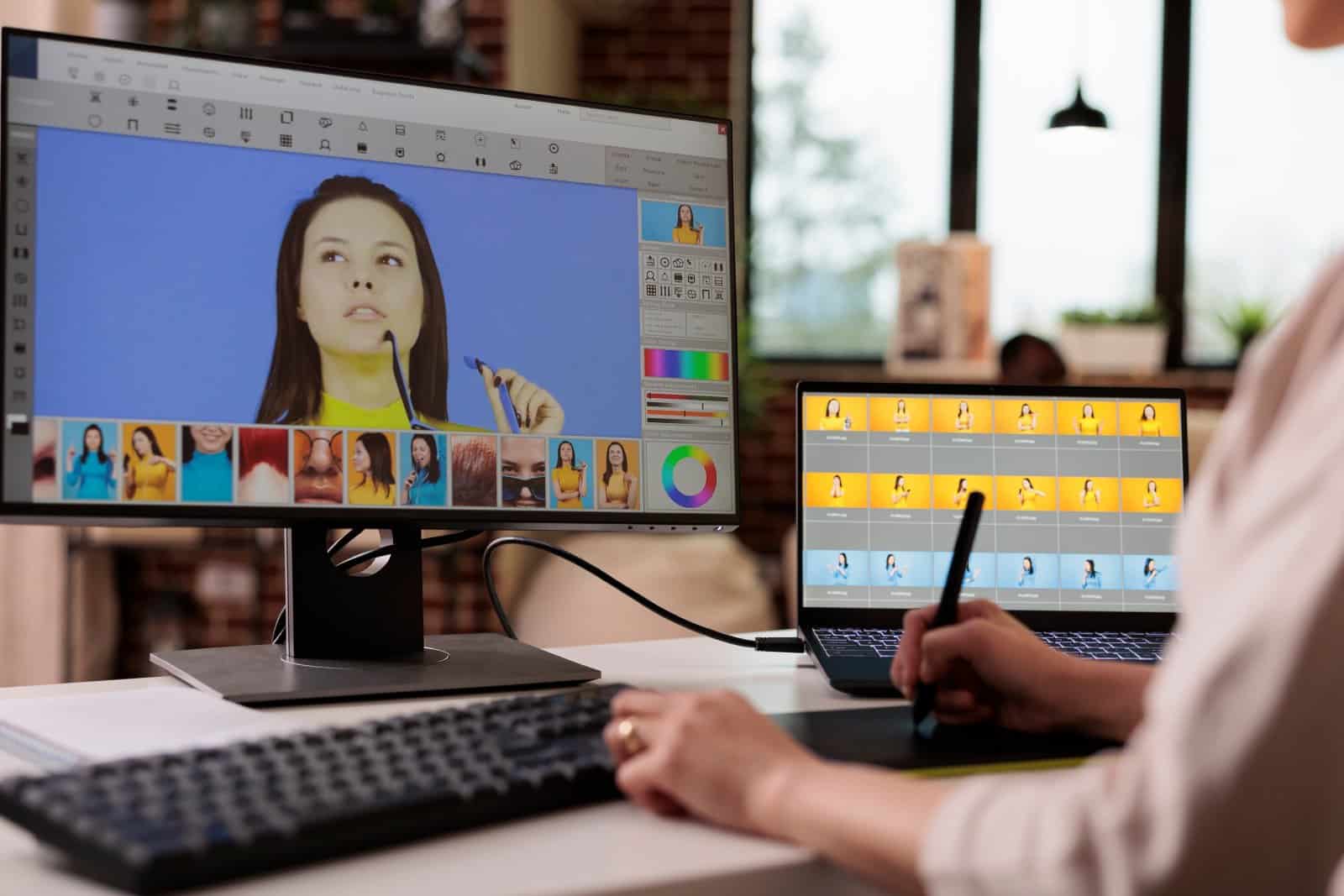
8. Editing and Post-Processing
Post-processing is vital in travel photography to enhance your images and achieve the desired effect. Familiarize yourself with photo editing software like Adobe Lightroom or Photoshop. Basic adjustments such as cropping, adjusting exposure, and color correction can significantly improve your photographs.
Be careful not to over-edit; the goal is to enhance the natural beauty of the shot, not to create an unrealistic image. Organizing and backing up your photos regularly is also crucial, especially when traveling for extended periods.
Insider’s Tip: Learn to shoot in RAW format for greater control during editing, as it captures more image data compared to JPEG.
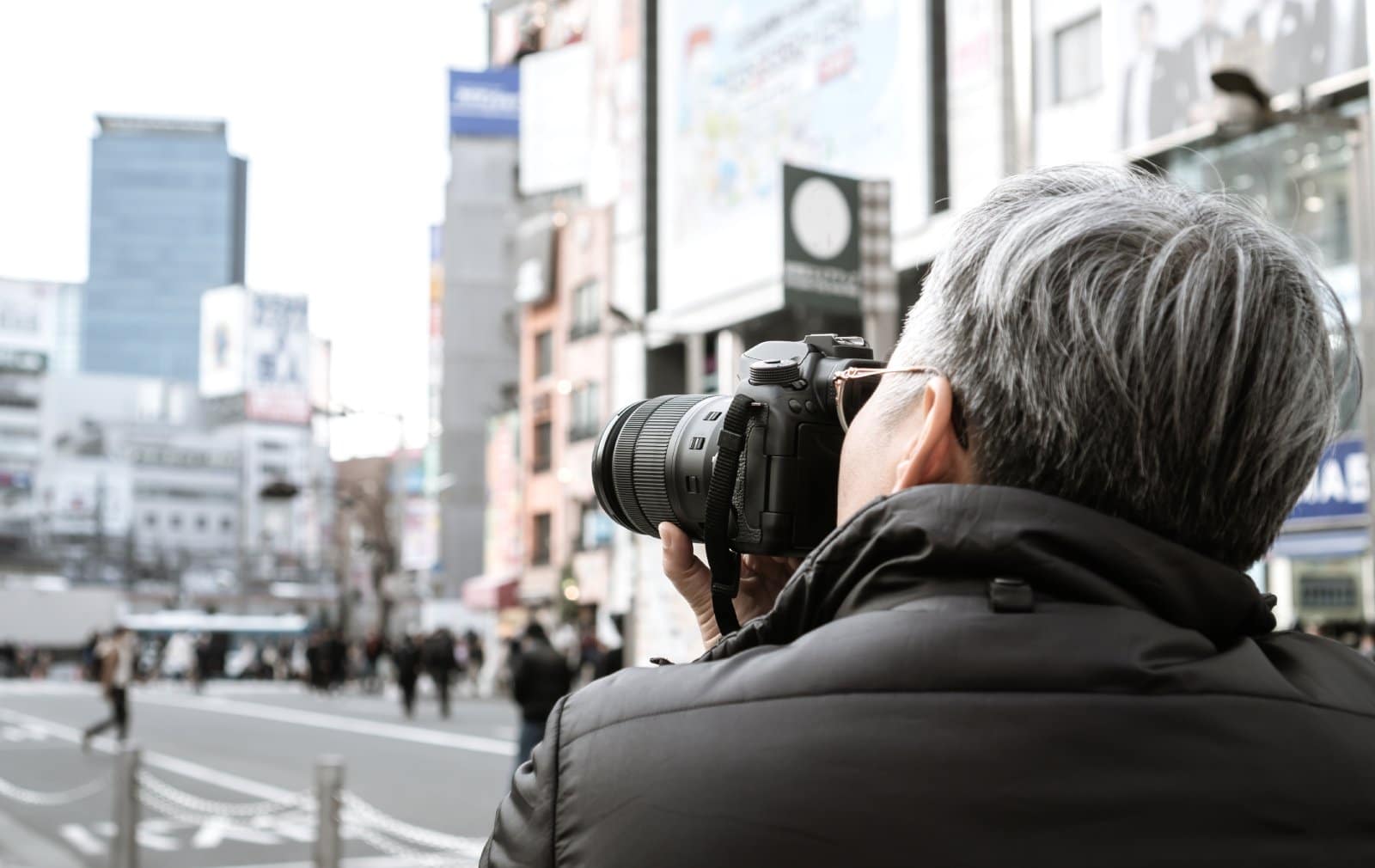
9. Street Photography
Street photography is a compelling aspect of travel photography, capturing the essence of a place through its people and everyday life. It requires a blend of patience, observation, and, sometimes, spontaneity. Use a lens that allows you to maintain a respectful distance from your subjects.
Be aware of your surroundings and look for interesting scenes, expressions, or interactions. Street photography often involves quickly capturing fleeting moments, so being ready and comfortable with your camera settings is crucial.
Insider’s Tip: Blend into your surroundings and observe without interrupting the natural flow of the street to capture authentic moments.
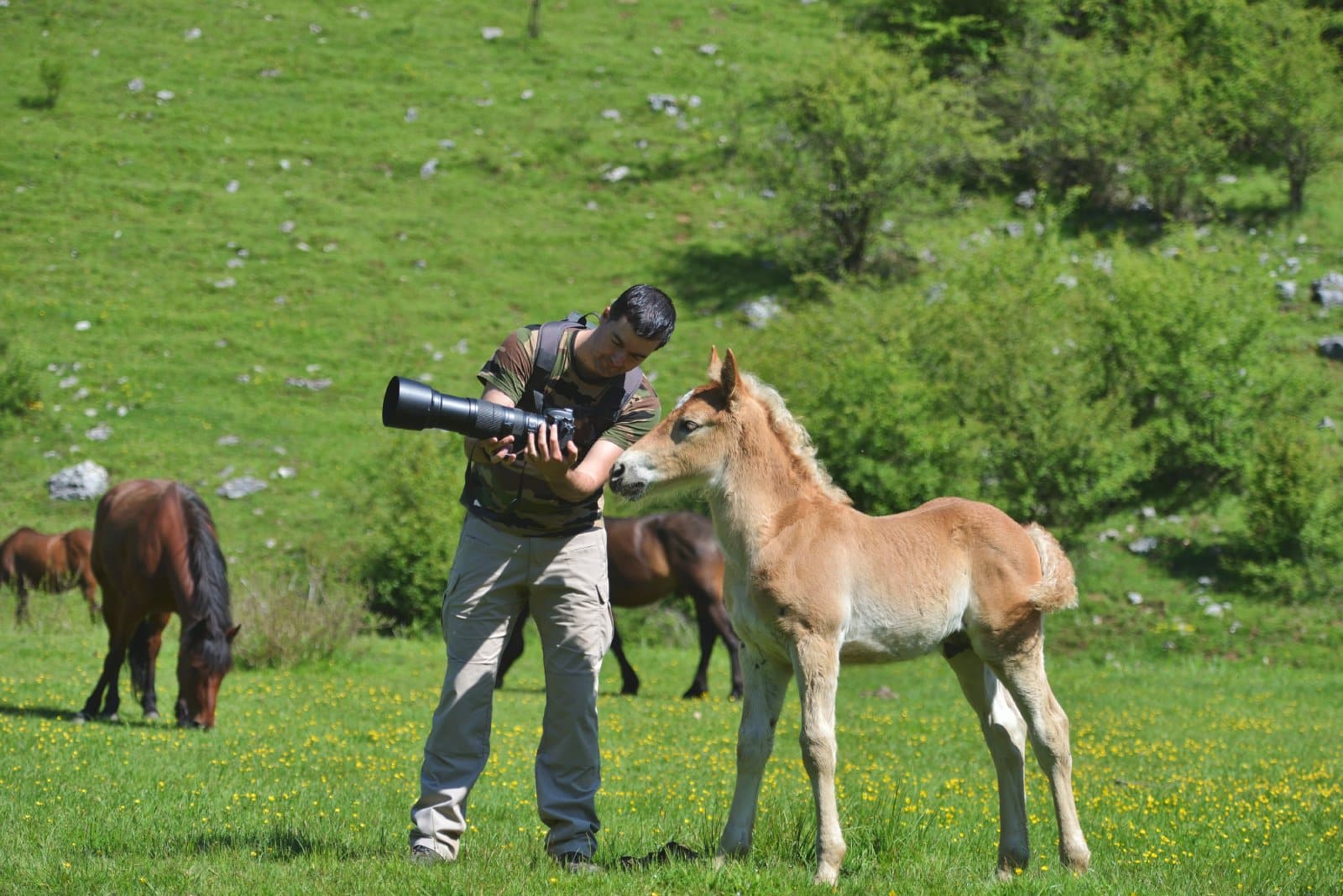
10. Wildlife and Nature Photography
Wildlife and nature photography can be incredibly rewarding but requires patience and respect for the environment. Use a telephoto lens to capture animals from a safe and respectful distance. Understanding animal behavior and being patient is key to capturing compelling wildlife shots.
For nature photography, consider the landscape’s vastness and use a tripod to achieve sharp, well-composed shots. Be mindful of the natural environment and adhere to local guidelines to avoid disturbing wildlife or delicate ecosystems.
Insider’s Tip: Early morning or late afternoon often provides the best natural lighting for wildlife and nature shots.
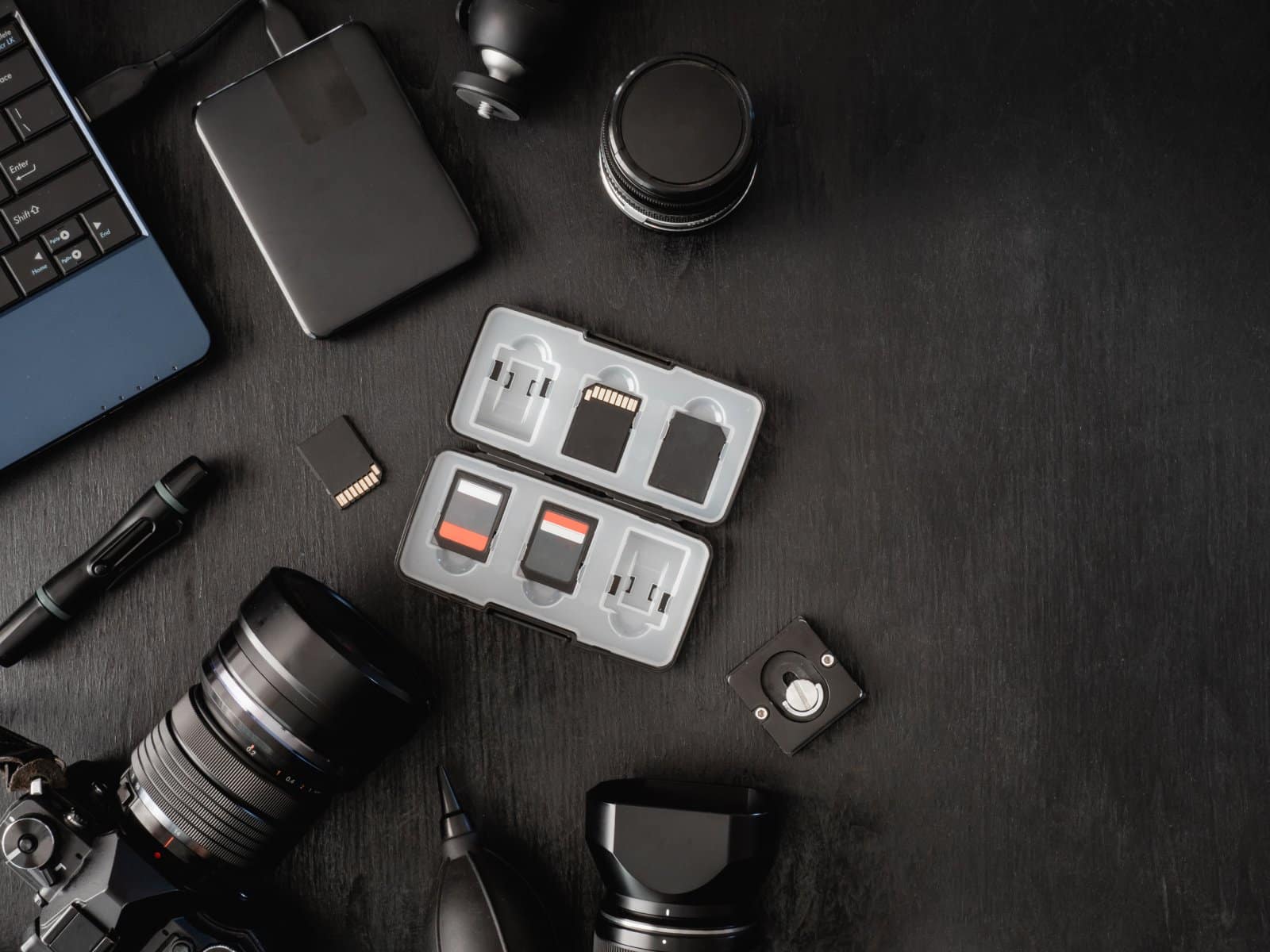
11. Backup and Storage Solutions
Regularly backing up your photographs is essential, especially during long travels. Invest in portable hard drives or cloud storage solutions to safeguard your images. Consider having multiple backup methods to ensure the safety of your photos.
Organize your images in a way that makes them easily accessible for future use or reference. Losing photographs due to a lack of backup can be a traveler’s worst nightmare.
Insider’s Tip: Use a wireless hard drive to back up photos directly from your camera or phone without needing a laptop.
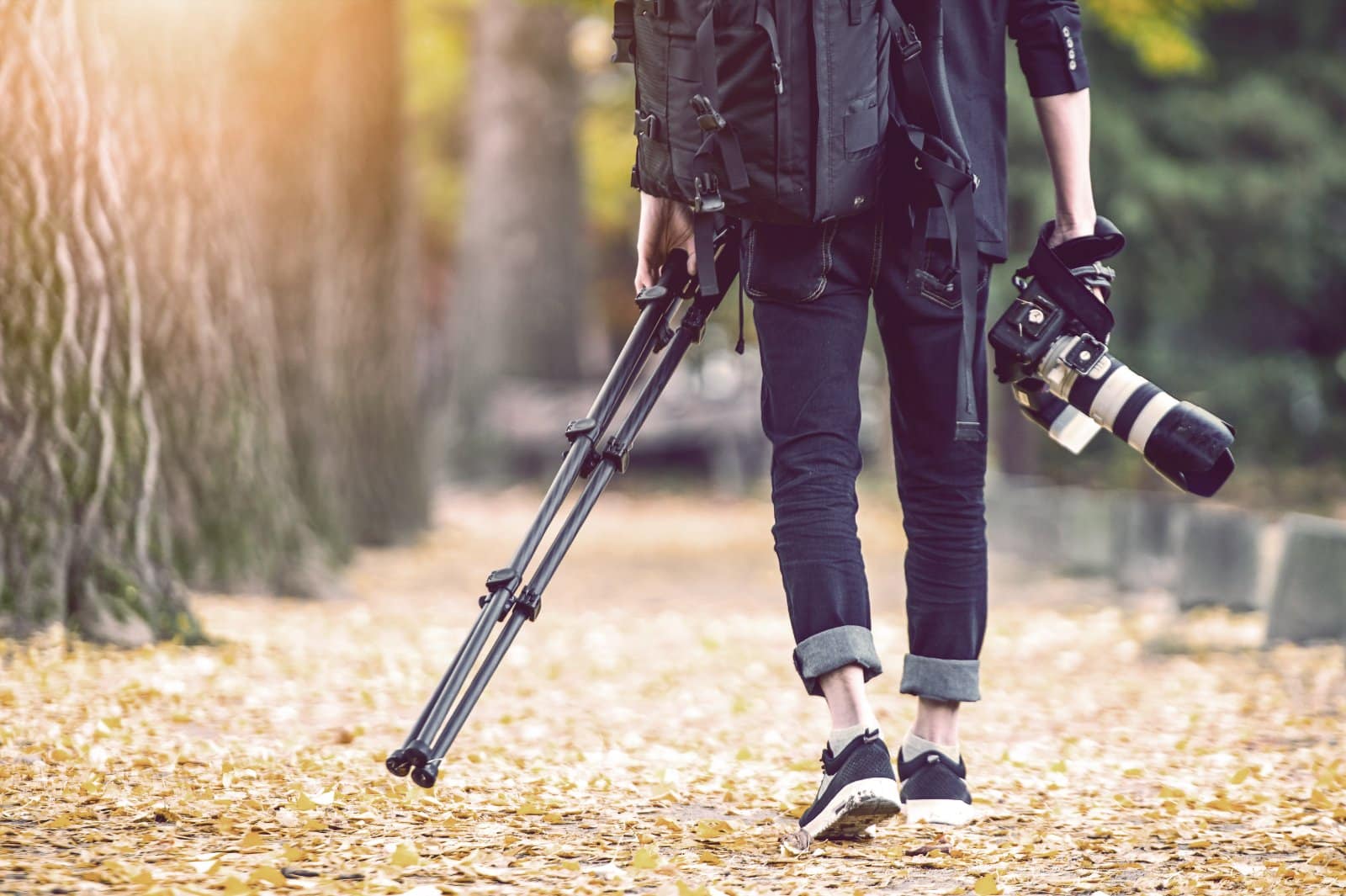
12. Ethical Photography
Ethical considerations in travel photography are paramount. Always respect local customs and people’s privacy. Be aware of and sensitive to cultural norms, especially when photographing religious sites, ceremonies, or local communities.
Ask for permission before taking photos of people, especially in close-up situations. Your responsibility as a photographer is to capture beautiful images and do so in a way that respects and honors the subject and the environment.
Insider’s Tip: Research and understand the cultural and ethical photography guidelines for each destination you visit.
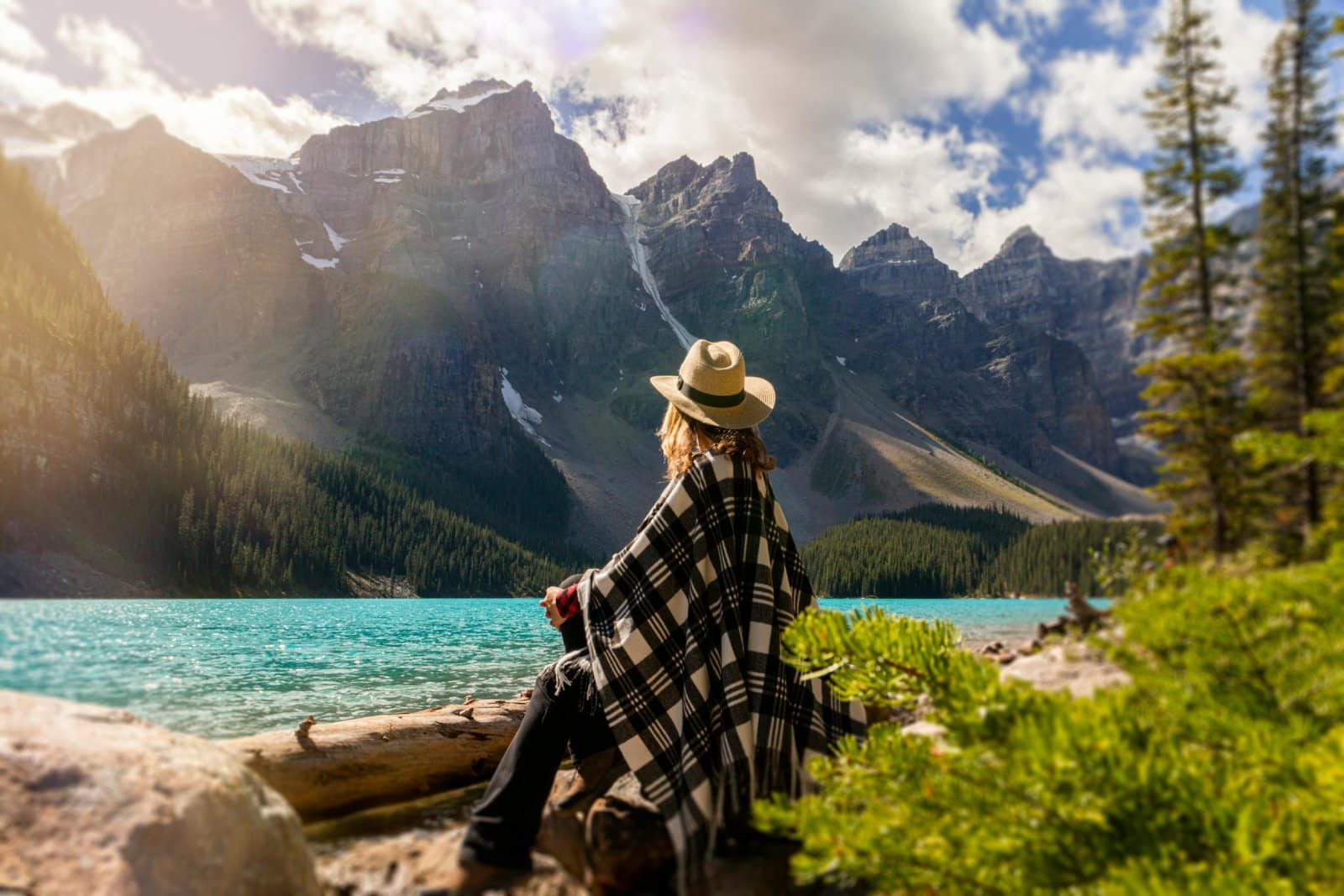
The Bottom Line
Travel photography is an art that combines technical skill with creativity and cultural sensitivity. It’s about capturing moments that tell a story, convey an emotion, or reveal the beauty of the world. With the right gear, techniques, and ethical approach, your travel photographs can transcend being mere snapshots to become lasting memories and powerful narratives of your journey.
Remember, the best photographs often come from a deep understanding and connection with the subject. So, immerse yourself in the environment, engage with locals, and explore different perspectives. Your camera is not just a tool but a passport to experiencing the world in a unique and profound way.
Keep shooting, keep exploring, and let your photographs be a celebration of the incredible diversity and beauty of the world around you. Happy shooting, and may your travels bring endless opportunities for stunning photography!
More Articles Like This…
Barcelona: Discover the Top 10 Beach Clubs
2024 Global City Travel Guide – Your Passport to the World’s Top Destination Cities
Exploring Khao Yai 2024 – A Hidden Gem of Thailand
The post Capture the World in 2024 – 12 Expert Tips for Travel Photography Essentials and Techniques! republished on Passing Thru with permission from The Green Voyage .
Featured Image Credit: Pexels / Zukiman Mohamad.
For transparency, this content was partly developed with AI assistance and carefully curated by an experienced editor to be informative and ensure accuracy.
More for You
54 Low-Carb Lunch Ideas You Can Eat Guilt-Free
How to Kill and Get Rid of Wasps Instantly
It was a popular national monument, until it was robbed to extinction
The least popular dog breeds in America, based on American Kennel Club data
4 Chain Restaurants With The Absolute Best Chicken Pot Pie And 4 With The Worst
Strawberry Shortcake Cookies Put Store-Bought Sugar Cookies To Shame
Former Army colonel seeking to flip North Carolina House seat says Dem opponent is 'beholden' to Biden
Buffalo Nickels Could Be Worth Thousands — How To Spot One
4-Year-Old Living With One of the Rarest Disorders in the World
A millennial who made $170,000 secretly working two remote jobs says it helped him pay off about $50,000 in student loans
36 Easy Lunch Ideas Perfect for Every Day
How to Reheat Fried Chicken So It's Crispy and Delicious
Winter Storm Warnings for 5 States With Travel 'Difficult to Impossible'
Here's Why Pimento Cheese Is Such A Big Deal At The Masters
People Who Had Unhappy Childhoods Usually Develop These 18 Traits
The 31 Best Grammys Red Carpet Outfits Ever
24 Old Vinyl Records That Can Be Worth a Lot Today
59 Delicious Diabetic-Friendly Dinner Recipes
18 Smartest Dog Breeds, Ranked for Intelligence
There are major changes coming for your washers and dryers
- #Luxury travel
- #Unusual Moscow
- #Jewish Heritage
- #Russian traditions
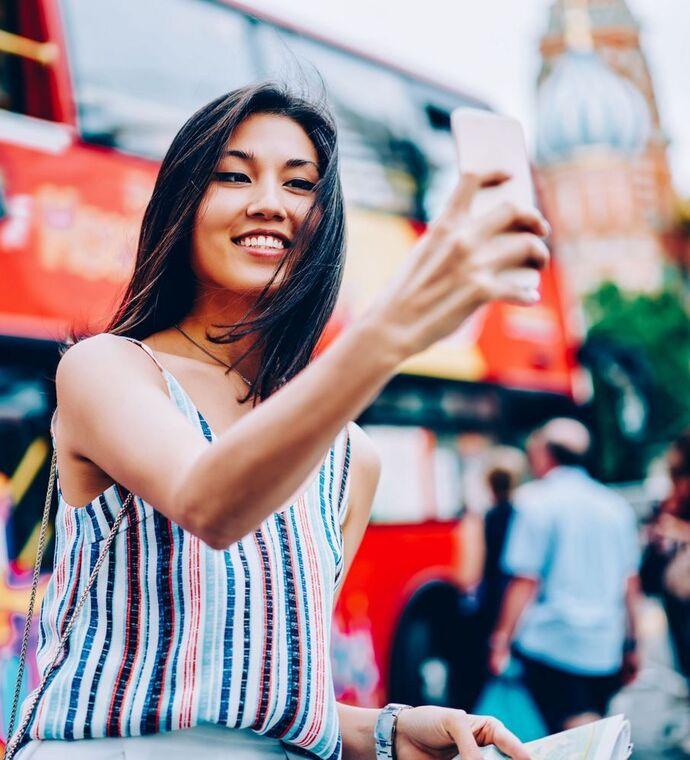
Best spots in Moscow for photo maniacs
- #Special Interest
- #Photospots
- Capturing the Kremlin and central Moscow: the higher, the better
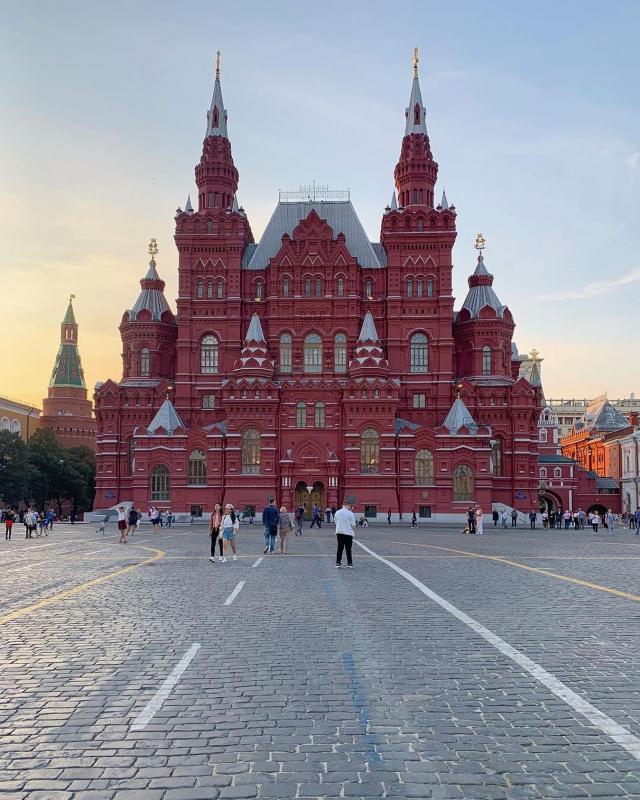
Of course, pictures of the Kremlin shot from the Red Square are no doubt iconic and must-have, but they are taken by thousands of tourists every day and can hardly make a wow-effect on your friends on Instagram and other social networks.
Another problem with shooting from Red Square is that the photos do not fully represent the scale of the medieval fortress of Kremlin. So, you need to make some steps further and higher to catch the right shot. You’ll be surprised by the fact that the panoramic views of the Kremlin are pretty easy to get. We have four hints for you: Zaryadie, Ritz Carlton, Patriarch bridge, and Radisson riverboat.
If you want to not only make beautiful photos but also to learn something interesting about the history of Russia, we recommend an individual tour of the Kremlin. You can order it online here .
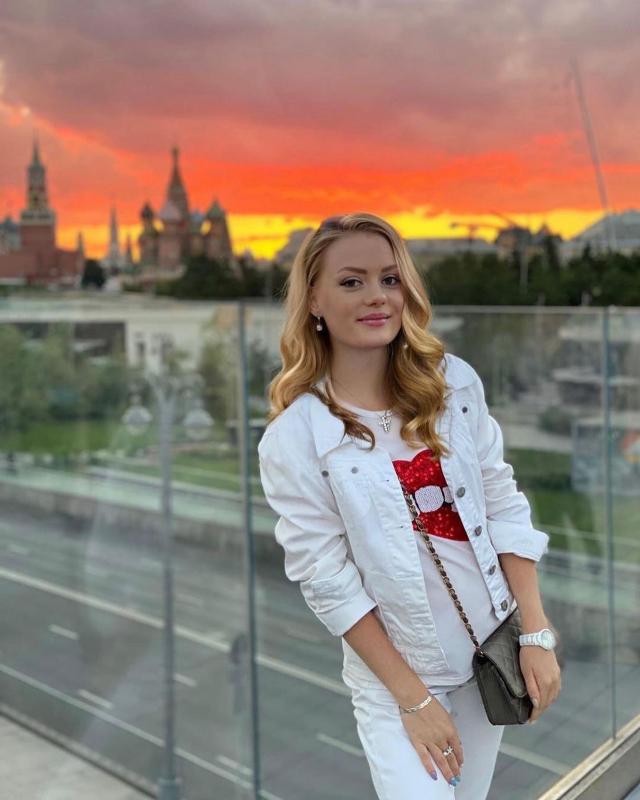
First, go to Zaryadye, which is located right next to the Red Square, behind the St Basil’s Cathedral, on the closest Moscow river bank. The most impressive views over the Kremlin are unfolded from the so-called Flying bridge of Zaryadye and Glass Dome building in the back part of the park.
Zaryadye is the new place of attraction in Moscow. It’s a landscape park, opened in September 2017 by the Moscow government on the hill where the giant soviet hotel ‘Rossiya’ located before its demolition in the early 2000-s. As a bonus, you’ll get an incredible view over one of Stalin’s skyscrapers, located on the opposite bank of Moscow river — the so-called Vysotka at Kotelnicheskaya, used as a residence of many Russian famous people and officials.
- The roof of the Ritz Carlton Hotel
This option is ok only in case if you’re ready to pay the average bar bill of over 2500 rubles (about $40). Visit the O2 Lounge Bar on the roof of the Ritz Carlton Hotel, where all the global celebrities take their Moscow pictures, from Angelina Jolie to Robert Downey Jr.
But such photo investments seem to pay off immediately. The deck of the bar makes an excellent panorama point for the Kremlin walls and towers, the Historical Museum, the Great Kremlin Palace, and the Kremlin cathedrals. All these landmarks are not too far away, which makes them perfectly recognizable, even in the background.
- The Radisson riverboat
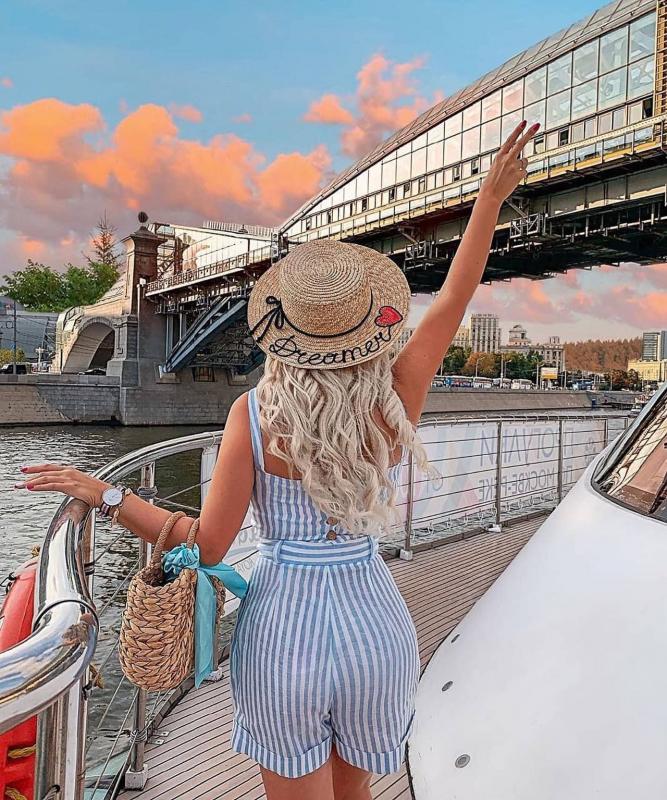
This hint will be useful in case you’re traveling to Moscow in the cold season. River transportation in Moscow doesn't stop in winter. Many enclosed and heated tourist yachts with panoramic windows and ice-breaking equipment can be found in the Moscow River. For instance, one of the most recognizable is the flotilla Radisson.
Their route goes past all the main sights of pre-revolutionary and Soviet Moscow – from Stalin's skyscrapers (Ukraina hotel and Vysotka at Kotelnicheskaya) to the Kremlin and the Novodevichy Convent. It is possible to go out to the open deck and take photos of you and your family or friends against a backdrop of the city’s lights and their reflection in the river. The cruise lasts 2.5 hours. You can book a tour with a car roundtrip transfer from your hotel to the pier and back: book online here
- Patriarch bridge
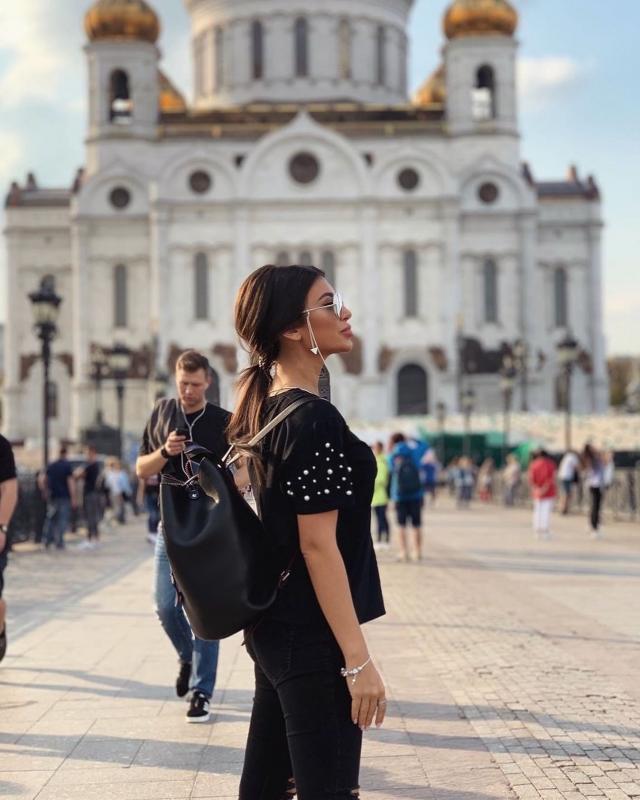
The bridge is located further from the Kremlin, than Zaryadye or Ritz Carlton, so the Kremlin walls on your photos will look smaller. The brighter side of walking through the bridge is that you can do more fabulous pics of the Moscow river and city center landscapes. The Moscow river and the pretty recognizable giant statue of Peter the Great are ideally viewed from the bridge. Be prepared that it’s a famous and popular pedestrian area for tourists all over the world so the bridge may be crowded.
Also, the bridge is a part of a long promenade which leads from the Christ the Saviour Cathedral through the Balchug island to the opposite bank of the Moscow River, where another pedestrian area — Museon embankment — is ready to joy you with its cafes, cozy lawns and impressive views over the river flow, ducks and boats.
- Moscow City
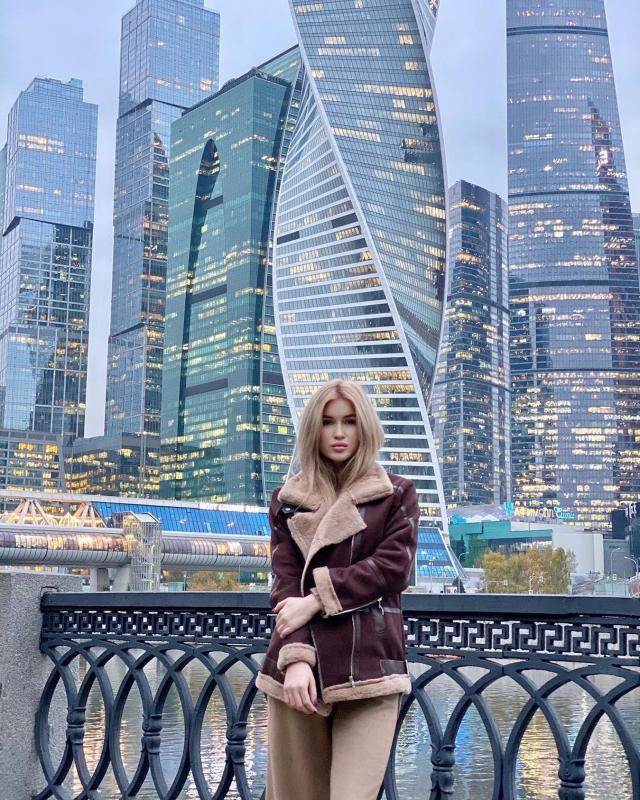
The best spot to shoot the famous Moscow business downtown is located on the Taras Shevchenko embankment. To get there you need to come to the metro stations Vystavochnaya or Delovoi Tsentr, then go to the Bagration bridge (use the metro navigation, the path is tricky), cross the bridge — and voilà! You’ve reached the best spot for shooting, posing, sending selfies, and Instagramming.
- Ponds and orangeries
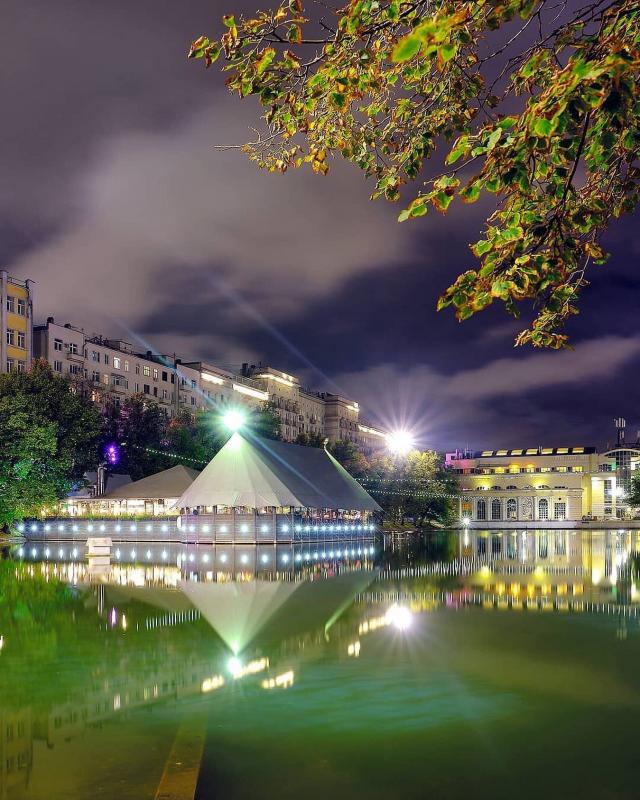
There are two ponds in Moscow, that deserve your attention in summer: the Chistye ponds (actually there is only one pond, but it’s worth it) and the pond in Gorky Park, which is full of small boats and catamarans. Both lakes are lost between the green alleys and are drowning in all the shades of green. Those are the perfect spots to catch the moment of peace amid the madness of big city life.
- Banya: Russian steam bath read
- Luxurious travel to Moscow: best places to visit read
- 7 Top Things to Do in Karelia Region read
- Russian Souvenir: what to bring home from a trip to Russia read
- The Top 10 Unusual Things to Do in Moscow read
- Christmas Festival in Moscow read
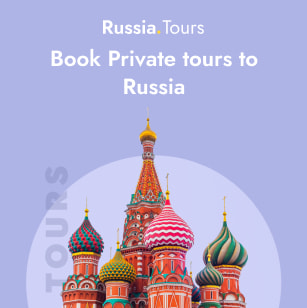
We use cookies to improve your experience on our Website, tailor content, and measure advertising. By continuing to use our Website, you accept our Privacy Policy .
Your request has been sent successfully! Our travel expert will contact you shortly.
This site is protected by reCAPTCHA and the Google Privacy Policy and Terms of Service apply.
- Destinations
- How it Works
Hire Your Moscow Vacation Photographer
Book a photoshoot to celebrate and beautifully capture your marriage proposal engagement anniversary beach vacation solo trip babymoon love for travel romantic getaway marriage proposal honeymoon family trip bachelorette
01 Easy to book
Choose your dates and book your favorite available photographer.
02 Quick Turnaround
Edited high-resolution digital photos in 5 business days
03 Quality Photography
Vibrant photos of moments you will cherish forever
04 Local Tips
Best local secrets for what to see, eat, & do in town
Vacation Photographers in Moscow
Handpicked and vetted by our team for quality, style, and skill. Make sure to check availability early so your dates don’t get booked up! Can’t pick your favorite Moscow photographer? Check who is available for your travel dates.
Best Photography Spots for a Moscow Photoshoot
Moscow, the capital of Russia, is a photographer's dream, where the grandeur of historical landmarks meets the vibrancy of contemporary urban life. The city's iconic Red Square, flanked by the colorful domes of St. Basil's Cathedral, offers an irresistible backdrop for architectural and cultural photography. The Kremlin's majestic walls and the monumental GUM department store provide a rich tapestry of visual subjects. Explore the Arbat Street's bohemian charm, the sleek modernity of Moscow City's skyscrapers, or the timeless allure of the Moscow Metro stations adorned with intricate mosaics and chandeliers. Moscow's energetic street life, cultural celebrations, and the juxtaposition of tradition and modernity create endless opportunities for visual storytelling. Whether you're capturing the city's elegance, its dynamic pace, or the rich tapestry of Russian life, Moscow promises an enchanting visual journey for photographers seeking to capture the essence of this iconic metropolis.
Red Square, Moscow's iconic and historic centerpiece, is a photographer's dream come true.... read more
The Kremlin
The Kremlin, Moscow's historic fortress and political heart, is a captivating photo spot w... read more
Moscow Metro
The Moscow Metro, often referred to as an underground art gallery, is a captivating and un... read more
Gorky Park, a lush and vibrant urban oasis in Moscow, is a picturesque photo spot that off... read more
Moscow Photoshoot Packages
Invest in forever capturing postcard-perfect vacation moments. After you check out of the hotel and your return flight lands, these photos will be a cherished souvenir for years to come!
Short & Sweet
For Those On-The-Go
30 Minute Mini Session
with a Professional Photographer
Private Online Gallery
with All the Best Shots
15 Digital Photos Included
Beautifully Edited & High-Res
- Inquire Now
Timeless Souvenir
Couples & Small Families
1 Hour Photoshoot
30 Digital Photos Included
Storyteller
Most Popular!
90 Minute Photoshoot
45 Digital Photos Included
Groups & Photo Lovers
2 Hour Photoshoot
60 Digital Photos Included
What's included in my photoshoot package?
Peace of Mind
Choose from vetted and highly rated personal photographers. Hassle-free booking and a travel-friendly refund policy.
Quick Turnaround
Receive your gallery within 5 business days of your photoshoot, but usually sooner! Download your choice of 15, 30, 45 or 60 digital photos depending on your shoot package.
Expert Photo Editing
All photography is edited for light, color, & sharpness to make your vacation photos gorgeous. Advanced beauty edits are available for purchase.
Your personal photographer also acts as an informal tour guide with all the best photography spots and local secrets for what to see, eat, & do in town.
Print Release
Turn your digital photos into cherished travel prints & wall art! Use our printing partners and get FREE SHIPPING - as low as $1 USD for 4×6 luster prints.
Frequently Asked Questions
Prices vary by city, ensuring you the best rates according to the local market. Choose between photography packages that range from 30 minutes up to 2 hours. The high-resolution photos are professionally edited and delivered by email in a private online gallery within 5 business days. See pricing for your destination here.
Check your dates, and then you'll be notified by email which photographers are available. Book your date and then your local professional photographer will work with you to go over all the best photography spots, when the best light will be, and how to beat the crowds to capture magical moments without tons of other tourists in the background. Local Lens vacation photographers are handpicked artists for quality, style, & skill. Not only will they take amazing photos, but they will edit them to be beautiful photo souvenirs you’ll treasure for years to come.
All photos are professionally edited for vibrance and composition and delivered in a private online gallery where you can download your favorite photos in high-resolution jpg format. Additional files and high-quality prints from our professional partner labs are also available for purchase. You should receive an email with your photography gallery link within five business days.
Hello from Moscow!
Find ideas & inspiration for your romantic getaway, family portraits, engagement photos, bachelorette party, honeymoon, save the date, or anniversary gift!
Ready to finally return home with beautiful vacation photography?
Miami is where the magic of sun, sea, and style mix so seemingly and where photos come out incredible! With its iconic Art Deco architecture along Ocean Drive, pristine sandy beaches, and a rich cultural mosaic, Miami offers a diverse range of photographic opportunities. So, are you ready to pose and snap some photos in this interesting destination? Check out the top photo spots in Miami: 📍South Pointe Beach — With its powdery white sand, azure waters, and a backdrop of towering luxury condominiums, it offers a quintessential Miami beach experience. 📍Lummus Park & Beach — The wide promenade, lined with palm trees and iconic lifeguard towers, offers a lively backdrop for capturing the essence of Miami’s sun-soaked lifestyle. 📍Vizcaya — A magnificent Italian Renaissance-style villa turned museum in Miami, is a photographer’s dream, offering a glimpse into the opulence of the Gilded Age. 📍Pier Park at Sunny Isles — The pier, extending gracefully into the Atlantic Ocean, offers a stunning vantage point for capturing breathtaking ocean views and vibrant sunsets. 📸 Captured by Natasha in Miami, USA 🌐 www.locallens.com ▶️ #locallensphotographers . . . #coupletravel #coupleshoot #proposalideas #proposalphotography #miamiphotographer #miamifl #miamiphotographt #visitmiami #travelmiami #miamiflorida #floridaphotographer #floridaphotographers #floridaphotography #proposalinspiration #surpriseproposal #proposalphotography #weddingproposal

Imagine popping the question in Machu Picchu? 🤯 Sounds like a unique and beautiful way to start the next chapter of your lives as fiances. And while it sounds incredible, there are some things you need to keep in mind to make your Machu Picchu proposal a reality. 1️⃣ Buy your entrance ticket at least a month in advance. 2️⃣ When buying your ticket, pick a morning timeslot. 3️⃣ Expect to stay longer if you’ve purchased a morning entrance. 4️⃣ Bring your passport to get a special Machu Picchu stamp. 5️⃣ Don’t forget sunblock, bug spray, and layers of clothing. 6️⃣ And remember, small backpacks only! 📸 Captured by Marco in Machu Picchu, Peru 🌐 www.locallens.com ▶️ #locallensphotographers . . . #proposalideas #proposalphotography #cuzcoperu #cuscocity #cuscoperu #visitcusco #7thwonderoftheworld #couplephotoshoot #machupicchu #machupicchutravel #machupicchuperu #travelsouthamerica #cuzco #visitperu #travelperu #ig_southamerica #surpriseproposal #proposalinspiration #weddingproposal
Seville is ‘bonita’ and a photographer’s paradise. The city is the perfect mix of history, culture, and architectural gems, making it an excellent destination for a photoshoot. Here are some of our favorite photo spots for a Seville photoshoot: 📍Plaza de España — The most popular spot! This architectural masterpiece wraps around an enormous square with fountains, moats, and tiled walls and offers plenty of photo opportunities. 📍Barrio Santa Cruz — This captivating and historically rich district was formerly the Jewish quarter of Seville, characterized by its ancient alleyways and meandering streets. 📍Royal Alcazar — Looking for a royal vibe in your photos? Renowned for its diverse gardens and historical influences, the Moorish Royal Palace is one of Spain’s most exquisite structures. 📍Parque Maria Luisa — Maria Luisa Park, situated just behind Plaza de España, is an ideal location for photography with its flourishing flower gardens and scenic tree-shaded pathways. 📸 Captured by Tatsiana in Seville, Spain 🌐 www.locallens.com ▶️ #locallensphotographers . . . #sevillespain #sevillephotographer #sevillecity #sevilletravel #visitseville #visitspain #familyphotoshoot #familyphotoideas #familyphotography
If you’re a soon-to-be momma, you deserve a babymoon in Europe to spoil yourself before the sleepless nights begin! A babymoon, more than a trip is the perfect time to spend time with your partner, relax and mentally prepare for all that lies ahead. And there is no better place than Europe and its many destinations perfect for future parents. Here are some of our favorite babymoon destinations in Europe: 📍Prague 📍Lake Como 📍Santorini 📍Lucerne 📍Sintra 📍Amsterdam 📍Madrid 📍Valencia Any other destination we should add to the list of babymoons? Let us know in the comments! 📸 Captured by Victor in Prague 🌐 www.locallens.com ▶️ #locallensphotographers . . . #charlesbridge #charlesbridgeprague #pragueoldtown #praguetrip #praguephoto #coupletravel #praguephotography #pragueworld #visitprague #praguestagram #instaprague #praguetoday #czechrepublic #praguecity #praha #praguephotographer #babymoon #momtobe #mumtobe #pregnancyannouncement #pregnancyphotography
Da Nang, a vibrant coastal city in Vietnam, is a fascinating destination that offers an interesting mix of natural beauty and modern urban life. And for those visiting, the city is also the perfect place to get photos in some of its most beautiful spots, like its stunning sandy beaches and lush landscapes. Check out some of the best photo spots in Da Nang: 📍My Khe Beach — This stunning stretch of sandy shores and serene blue waters provides a picturesque backdrop for capturing the essence of a coastal paradise. 📍Marble Mountains (Ngu Hanh Son) — These ancient limestone outcrops are dotted with caves, pagodas, and sacred shrines, providing an array of visual inspiration. 📍Dragon Bridge — This iconic bridge comes to life in the evenings with a thrilling fire-breathing dragon show, creating a dynamic and visually spectacular scene. 📍Linh Ung Pagoda — The pagoda is renowned for its giant Lady Buddha statue, and it’s the perfect spot to capture Vietnam’s cultural richness and natural beauty. 📸 Captured by Trung in Da Nang, Vietnam 🌐 www.locallens.com ▶️ #locallensphotographers . . . #coupletravel #visitvietnam #travelvietnam #couplephotoshoot #danangbeach #danangtravel #danangphotographer #danangphotography #danangtrip #danangvietnam #danangcity #proposalphotography #proposalideas #proposalinspiration #surpriseproposal #weddingproposal
Bangkok is a cultural treasure with many beautiful temples that are a must-visit if you are looking for an enriching experience. But the choice is hard, as Bangkok has more than 400 temples. So, which one to pick? Luckily, we have made a top 5 pick of the best temples or ‘wats’ to visit in Bangkok. 1️⃣ Wat Arun Ratchawararam (Temple Of Dawn) — An ancient temple dating back to the Ayutthaya period and considered a Royal Temple of King Rama II with a stupa considered one of the most beautiful and gigantic stupas in that era. 2️⃣ Wat Phra Chetuphon Wimon Mangkhalaram Ratchaworamahawihan (Wat Pho) — Home of the Reclining Buddha, with various interesting ancient Thai cultural murals around the temple. 3️⃣ Wat Saket Ratchaworamahawihan (Phu Khao Thong) — One of the famous highlights of this temple is its spiral staircase, which has 344 steps. 4️⃣ Wat Trai Mit Witthayaram Worawihan — This temple is home to the solid gold Sukhothai-style Buddha called the seated Phra Phuttha Maha Suwana Patimakon, known as the world’s largest golden Buddha statue. 5️⃣ Wat Benchamabophit (The Marble Temple) — As its name states, the temple’s ordination hall was constructed of marble imported from Italy. 📸 Captured by Suriyathepjuti in Bangkok, Thailand 🌐 www.locallens.com ▶️ #locallensphotographers . . . #bangkokthailand #bangkokcity #bangkoktrip #bangkoktravel #travelphotography #travelandleisure #bangkokspirit #beautiful_bangkok #thailand_allshots #thailandtrip #thailandtravel #adayinthailand #thailandinstagram #amazingthailand #bangkokphotographer
Being a new parent can be both beautiful and unnerving — it is a big responsibility! And if you feel you need some guidance and to set up some goals to help you get your groove back, start by setting some resolutions for this new year. 2024 it’s all about taking care of yourself, and being a new parent doesn’t need to limit that. Here are a few ways you can be the best version of yourself while handling this incredible new role: ❤️ Take a moment to evaluate how you are feeling ❤️ Take time to reconnect with yourself ❤️ Take time to reconnect with your partner ❤️ Enjoy the time you manage to be alone ❤️ Rekindle friendships ❤️ Have dates, just you and your baby. ❤️ Reassess how you are feeling at the end of every month and change your goals accordingly Any other advice you have for new parents? Let us know in the comments! 📸 Captured by Rojeena in Maui, Hawaii 🌐 www.locallens.com ▶️ #locallensphotographers . . . #hawaiiphotographer #hawaiiphotographers #hawaiistagram #hawaiiphotography #hawaiibestphotos #hawaiilove #beachphotography #mauiphotography #mauihawaii #mauistyle #travelhawaii #visithawaii #hawaiitrip #hawaiivacation #hawaiibeaches #mauiphotographer #babymoon #mumtobe #momtobe #pregnancyphotography #pregnantstyle
Okay, a new year has begun, and now it’s time to commit to those resolutions. Yes, it can be challenging, but with the right tips, you can make your wishes a reality and make 2024 the year you stick to your resolutions! Here’s what you have to do to achieve your new year’s goals: ☑️ Start small ☑️ Create goals for different areas of your life ☑️ Write them down ☑️ Prioritize your goals ☑️ Break down bigger goals ☑️ Include friends and other peeps ☑️ Keep it interesting ☑️ Celebrate progress ☑️ Adjust as necessary ☑️ Have patience Now tell us, what are your 2024 resolutions? 📸 Captured by Julia in New York City 🌐 www.locallens.com ▶️ #locallensphotographers . . . #nycphotographer #nycphotographers #nycphotoshoot #nycphotography #newyorkcitylife #newyorklife #newyorkgram #newyork_ig #newyorkcityphotography #newyorktravel #newyorkstyle #newyorktrip #weddingproposal #proposalinspiration #proposalphotography #proposalideas #newyorkstreets #newyorkphotographer #newyorkphotography #newyorkphotos #surpriseproposal
New adventures are around the corner. And this 2024 will be filled with new memories, destinations, health, and happiness. Happy New Year from Local Lens! ✨🍾 📸 Captured by Christopher in Singapore 🌐 www.locallens.com ▶️ #locallensphotographers . . . #singaporeinsiders #singaporetravel #singaporecity #exploresingapore #singaporeig #singaporephotography #singaporediaries #singaporetourism #singaporephotographer #travelasia #surpriseproposal #proposalideas #proposalphotoshoot #proposalinspiration
What a year! 2023 has been a year full of blessings, and many captured memories. Just this year, our local photographers have captured over 4,000 shoots around the world!! From families to engagements, anniversaries, and solo traveling, we love being there and creating memories with you. Thank you for a fantastic year, and we hope to be with you next year, capturing your next chapter. And like they say, cheers to many more! 🥳✨💫 🌐 www.locallens.com ▶️ #locallensphotographers . . . #destinationaphotographer #surpriseproposal #proposalideas #proposalphotography #proposalinspiration #weddingproposal #familyphotography #familyphotoshoot #familyphotoideas
Get $10 Off Your Photoshoot
Feed your wanderlust with travel photo inspiration and an instant $10 discount on your photoshoot!
You are here
Konvas 1kcp-1m movie film camera w 15epss motor 28mm 50mm 135mm lens woody box, search form.
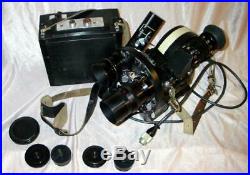
All connections should be very reliable to avoid burning. Magazine capacities: 60 and 120 meters. Lens mount: Russian version of Arri standard. It is a special bayonet OST-18.
Flange to focal distance: 57mm Turret: rotating, 3 mounts. Viewing: rotating, mirror shutter reflex. Mirror shutter angle: 150 degrees. Length of exposure at 24 fps: 1/57.6 second. Weight of the item (camera, case etc) is about 15 kg.
The camera was made in Moskinap plant at Moscow city in 1980. KONVAS 1KCP-1M movie film camera w 15EPSS motor 28mm 50mm 135mm lens woody box. SOVIET 35mm FILM PROFESSIONAL MOVIE CINE CAMERA'S SET.
KMZ JUPITER-37 135mm f3.5. ABOUT ITEM'S ORIGIN You can SKIP it! Mm cameras KONVAS were one of the most perfect cameras for the professional filming on the 35-mm color or black-and-white film in the USSR. Its low price, rugged construction and different optics have made it very popular for a lot of filmmakers since present time because KONVAS cameras has very nice quality/price ratio. 35mm KONVAS come in several flavors and have different model numbers.
The original KONVAS cameras were made in the 1950's and production lasted through the early 1990's. They were used in the Soviet's race for space, as news cameras, in feature films, in documentaries, and were even used to capture aerial footage of Chernobyl. Named after its designer, Vas ily Kon stantinov, the 35mm MOS Konvas can be a great addition to anyone's arsenal of rugged camera equipment. The design of the KONVAS was similar in appearance to the Eclair Cameflex CM3. The KONVAS has several model numbers and went through several different design upgrades (but these changes did not always lead to a change in the model number).
The original models came with a rheostat motor and a 3 lens turret system, but the designs slowly changed over the next two decades. Some of the different design changes were a result of there being two different camera manufacturers in the camera's initial production years. Some of the changes included the conversion of the difficult to load top-latch magazines to the more simple side-latch magazines, changes in body style and functionality, different motors, and different viewfinders.
Originally painted gray, it also came in black, with black eventually becoming the only color option. All models use a spinning mirror/shutter design, with a shutter opening of 150 degrees. In the early 70's, the Soviets redesigned the camera and created the KONVAS KCP-1M which still had the three lens turret system, but better motor designs.
If you will not like those speeds you can adjust it. Lenses which comes with the camera are clear, all works properly.
It looks like good working horse, which can work long years. Format: normal ("academy" frame also can be installed). Registration error: less than 0.02mm. Operating range, temperature: -30 to +40 celsius.
It is a special bayonet OST-18 (or OCT-18). NOTE: The "OST18" (commonly referred to as OCT18) lens mount does not have bayonet lugs on it. It was only for the silver Konvas (Automat) and Konvas 1M and 7M series cameras. Flange to focal distance: 57mm. Turret front to focal distance: 51mm.
Ground glass markings: academy + cross hairs. Mounting: standard 3/8-16 tripod mount. Film speeds (electronically stabilized according with the link from tacho-sensor): 8,16, 24, 25 & 32 fps. Maximum exposure error at 8, 16, 24, 32 fps: +/-4%. Maximum exposure error at 24 fps: +/-2.5%. Power source voltage: 7.2-8.5 volt DC. Power source: very special SCS-15x5 battery, silver-zinc type, about 375 grams of pure silver & AgO is inside 5 cells!
Working time: 6 minutes job + 3 minutes pause at low speed, 1 minute job + 5 minutes pause for high speed (up to 2 cycles, then 30 minutes of rest). In other case the motor can be damaged by heat. Special 3m length cable can have remote switc h, it starts the motor like the button on the motor. Power box have step-up DC-DC driver (about 50V output to the motor) and film speed selector. Each film speed is adjustable with tiny screw driver, resistors for it are visible when the battery compartment is opened. The motor drive is just dead piece of metal without this power box. Manual-drive systems are also available when you don't have the motor or battery for it. Size (for example): lens, motor, magazine - 295 x 280 x 245 mm. The camera and most of lenses were made in Ekran (former Moskinap) plant at Moscow city in 1980.
15EPSS power box for motor drive #780282. Leather neck-strap fro the camera.
The item pictured is the actual item for sale. All items are packed in solid carton boxes with soft material inside to protect your item on its long way to your home. Tracking numbers are available now, but mostly we can track our packages inside Russia only, then you can look for it at national postal service of your country... EUROPE: Andorra, Albania, Austria, Austria, Belgium, Bulgaria, Croatia, Cyprus, Czech Republic, Denmark, Estonia, Finland, France, Germany, Greece, Hungary, Ireland, Italy, Latvia, Lithuania, Luxembourg, Malta, Moldova, Netherlands, Norway, Poland, Portugal, Romania, Russia, Slovakia, Slovenia, Spain, Sweden, Switzerland, Ukraine, United Kingdom. ASIA: Azerbaijan, Bahrain, Bangladesh, Georgia, Cambodia, China, Hong Kong, India, Indonesia, Israel, Japan, Korea South, Kuwait, Qatar, Macau, Malaysia, Pakistan, Philippines, Saudi Arabia, Singapore, Syria, Thailand, Turkey, United Arab Emirates, Vietnam. ADD YOUR COUNTRY TO OUR. We TRY to check everything as best we can, and describe it as accurately as possible. Since we sell mostly used items, don't expect "mint" condition in most cases! We are not in love with the words "perfect" and "mint", as so many here seem to be, when dealing with older, used equipment. The item can be exchanged or the. In case of receiving the wrong item. We prefer and arrange maintenance or exchanging the item to make You 100% satisfied. We prefer this way, but the choice is still yours. We want to know it so that corrective action can be taken.
THANK YOU FOR LOOKING AND GOOD LUCK! Get Supersized Images & Free Image Hosting. Create your brand with Auctiva's. Attention Sellers - Get Templates Image Hosting, Scheduling at Auctiva.
This item can be shipped worldwide.
- Color: Black
- Model: Konvas 1KCP-1M
- Modified Item: No
- Country/Region of Manufacture: Russian Federation
- Film Format: 35mm
- Brand: Ekran (MosKinAp)
- Type: Reflex
- Privacy Policy
- Service Agreement

IMAGES
VIDEO
COMMENTS
One other reason that a 28mm lens works so well for street photography is that it's easy to focus. This isn't a focal length that provides much in the way of background blur, so shooting it wide open isn't advantageous in most scenarios. I can simply set my aperture to f/8 and shoot away, knowing that everything will be in focus.
So, you just got a camera that has it's lens stuck at the 28mm focal length. Maybe you want to do street photography. You're freaking out. The world is HUGE! ... One of the most important concepts of photography is the one of eye travel. Essentially, the photographer has to lead the eye of the viewer. Since there's more of the world included ...
At 28mm, the aperture is f4 to f22. At 400mm, the aperture is f8 to f45. FX format: full frame lens. 21 elements in 15 groups. 9 aperture blades. 4 ED elements. 3 Aspherical elements. At 28mm, the ...
The 28mm lens is reasonably odd. It's a bit wider than 35mm and longer than 24mm. If you choose the 28mm focal length, you're bound to not go for the longer or shorter options just named.
What many travel photographers opt for instead is a wider prime and in this video, TKNORTH discusses his new favorite, the Sigma 24mm f/1.4 DG HSM Art. That is particularly wide and fast, which ...
The Nikon Z 28mm f/2.8 lacks most of Nikon's anti-flare coatings, and it loses some points for water resistance with the lack of a fluorine-coated front element and rear rubber gasket. The plastic lens mount and simplistic design show that Nikon is using some of its cheaper components to make the 28mm f/2.8.
Using a wide-angle lens, you can get some very cinematic-looking photos. It's another reason why the perfect lens for travel photography is the Tamron 17-28mm f2.8 Di III RXD. The first photo in ...
28mm not ideal for macro. If you're in search of a versatile travel lens for your Lumix S5, the Lumix S 28-200mm f/4-7.1 O.I.S. fits the bill perfectly. This lens stands out as the most compact and lightweight 7x superzoom lens available for any system, making it an ideal companion for travel without adding bulk or weight to your carry-on.
Yes, if you are looking for a lens to fill in the gaps between the other focal lengths or simply want a very affordable walkabout lens for travel and street photography. The $297 28mm f/2.8 lens ...
The full frame compatible Nikkor Z 28mm f/2.8 SE Lens is one of the most affordable, small and lightweight autofocus lenses for Nikon Z mount available. While 28mm is a desired focal length for street photographers, it can be used in many different genres. Compact, lightweight and surprisingly inexpensive.
The Nikon Z 28mm f/2.8 autofocuses quickly and almost silently, with very impressive accuracy both in the viewfinder and in live view. This is as much due to the camera as the lens, but it's still great to see the trend continue on the 28mm f/2.8. The accuracy is fantastic and even better than a Nikon DSLR in live view (which itself is ...
The field of view on a 28mm lens is perfect for this; It's wide but not too wide. Manton, Mich. Camera: Leica M6 The 28mm Lens in Use. Everyone's approach to photography is different so you may have different ideas about this lens and what you prefer. I'm going to share with you my observations and you can take them with however much salt ...
I was asked what my favourite lens is out of a 28mm, 35mm, and 50mm prime. These are my 3 favourite lenses, but which one would I choose if I had to keep onl...
Q&A. What is a 28mm prime lens? — A 28mm prime lens is a type of lens that has a fixed focal length of 28mm, allowing for a wide field of view in photography. How can a 28mm prime lens be used for travel photography? — A 28mm prime lens is a versatile option for travel photography as it allows for capturing wide shots, including subjects with their surroundings, and avoiding distortion.
The wider angle of a 28mm lens makes a real difference in capturing the scenery and surrounding subjects of a shot, even when compared to the similarly-angled 35mm lens. When shooting using a 28mm lens, it is helpful to think of the lens as a window into the world; the 28mm is a slightly larger window, letting you see just a bit more.
Two of the most common lenses available for this are 28mm and 35mm lenses, often. ... and to travel light its hard to beat a fast short zoom...20-35, f2.8 comes to mind. ... Photography is about ...
This is why I generally hate 50 mm for street photography; it is too close. 2. More compact. Another general thing, when it comes to the laws of physics: the 28 mm lens is typically much more thin, compact and pancake than other lenses. The thinner and compacter your lens, typically the smaller and lighter and more compact your overall camera.
The Z 28-400mm f4-8 VR boasts a huge 14.3x zoom range and is Nikon's second super-zoom lens for Z-mount after the Z 24-200mm f4-6.3 VR. At only 725g weight and 142mm length the lens is easy to carry on extended trips. And with optical stabilization and a maximum magnification of 1:2.8 it should be a versatile lens for travel and nature photography.
19. Don't buy expensive 28mm lenses Downtown LA, 2016 (Ricoh GR II) A practical piece of advice — if you want to shoot street photography on a 28mm lens, don't buy expensive 28mm lenses that shoot at f/1.4, f/1.8, or f/2. These "fast" 28mm lenses tend to be too big and too heavy. The same goes with any lens for street photography.
For Nikon Z photographers, Nikon's new Nikkor Z 28-400mm f/4-8 VR is the company's most versatile lens yet. The high-power zoom lens is designed for full-frame mirrorless cameras and offers an ...
Whether you're a seasoned professional or just starting out, this subreddit is the perfect place to ask questions, seek advice, and engage in discussions about all things photography. We're here to foster a supportive and knowledgeable community that shares a passion for capturing the world through the lens.
The debate of 28mm vs 35mm lens is often confusing for lots of folks. The 28mm and 35mm lens focal lengths are oddly competitive. The 35mm focal length often wins for most who say they see the ...
The NIKKOR Z 28-400mm f/4-8 VR lens packs all-in-one convenience and super-telephoto reach into a lightweight package, ... Covering a vast 14.2x zoom range—from 28mm wide shots to 400mm close-ups—this is an ideal superzoom lens for large-field sports, theme parks, travel or anywhere the unexpected is expected. One lens to cover all the action.
Selecting the right camera is the first step in travel photography. For professionals, a DSLR or a mirrorless camera offers versatility and high-quality images.
Experience superb zoom range that covers everything from portraiture to event photography with the all-in-one NIKKOR Z 28-400mm f/4-8 VR Lens from Nikon. Quick and accurate autofocus is provided by the lens's STM stepping motor. When paired with a compatible camera, Synchro VR can be activated to allow up to 5.5 stops of image stabilization.
I enjoy using that lens quite a bit and I believe it's as close as you're going to get to a pancake 28mm lens for full frame EF mount. It does not have autofocus. However, it does have electrical contacts and communicates with the camera. Thanks for your suggestion. Better late than never! Had not known about that lens until you mentioned.
Photo Tips: Going against all travel photography teachings, the stations are best visited during prime time when they are busiest. Long exposure shots are perfect for a poorly lit, crowded station like Komsomolskaya. ... All-Around Travel Lens: Sony 24-70mm f2.8 GM II lens is the lens I mounted on my camera the most. The lens covers most of the ...
Visit the O2 Lounge Bar on the roof of the Ritz Carlton Hotel, where all the global celebrities take their Moscow pictures, from Angelina Jolie to Robert Downey Jr. But such photo investments seem to pay off immediately. The deck of the bar makes an excellent panorama point for the Kremlin walls and towers, the Historical Museum, the Great ...
Prices vary by city, ensuring you the best rates according to the local market. Choose between photography packages that range from 30 minutes up to 2 hours. The high-resolution photos are professionally edited and delivered by email in a private online gallery within 5 business days. See pricing for your destination here.
Flange to focal distance: 57mm Turret: rotating, 3 mounts. Viewing: rotating, mirror shutter reflex. Mirror shutter angle: 150 degrees. Length of exposure at 24 fps: 1/57.6 second. Weight of the item (camera, case etc) is about 15 kg. The camera was made in Moskinap plant at Moscow city in 1980. KONVAS 1KCP-1M movie film camera w 15EPSS motor ...